

MIDTERM

WALK INTO THE FUTURE
Walk into the Future is an urban streetscape intervention proposal that tackles on and confronts the current traffic problems, and transforms it into a playable happy place for everyone. It seeks to explore the idea of a playable city as a platform of playable opportunities intertwined with an existing urban infrastructure that helps vivify and brighten the existing dull environment without being too disruptive in our daily lives. The proposal aims to transform how boring and mundane everyday spaces such as a sidewalk, crosswalks, tram stops, car parks, or building facades into something stimulating and creative that encourages playful moments of more social interaction and communal spirit. Therefore, instilling this notion, my entry question for this speculative project is how can play be implemented to activate a future streetscape that is pedestrian-friendly yet playable and engaging?

watching cartoons
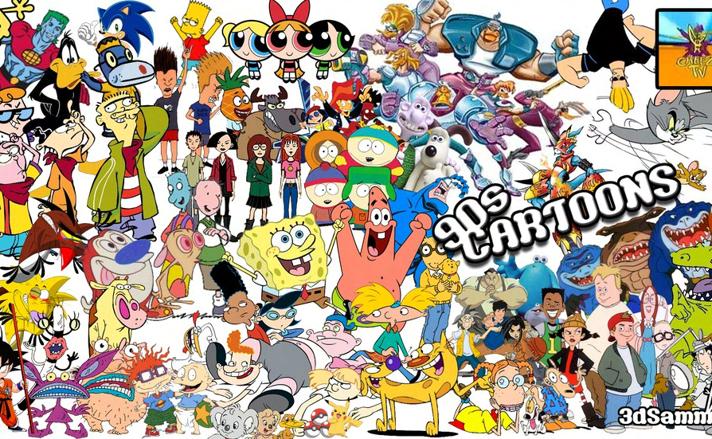
“Think about play, and what it means to you. What comes to mind? A pastime? Games? Childhood activities? The opposite of work? ” (Sicart 2014, 4)

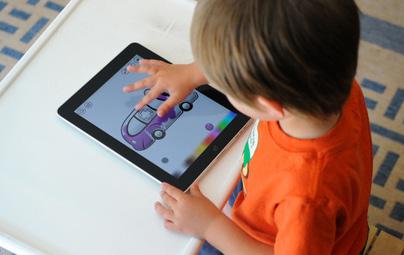
playing toys plushie toys
playing video games

playing sports

drawing & painting

Playing on the playground
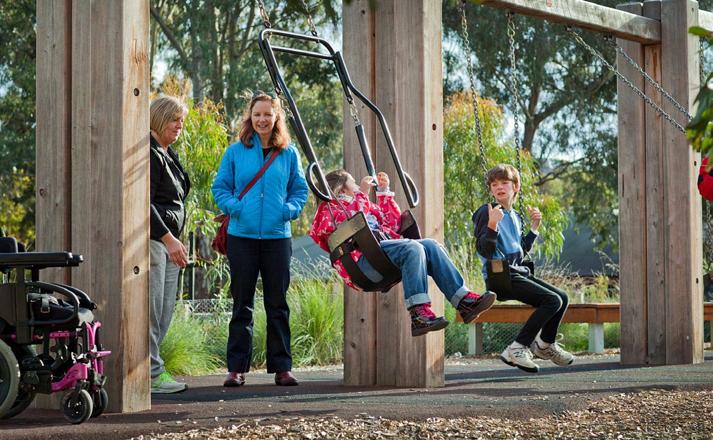
don’t stop playing because we grow old. We grow old because we stop playing.”
listening to & playing music

“WeGeorge Bernard Shaw

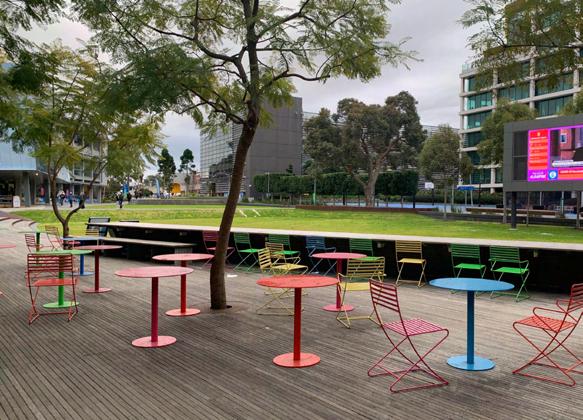




Diller Scofodio. AA Files Autumn 1994. 90. Courtesy of RNDRD: https://rndrd.com/?p=437&s=570


precedent A collage mapping
Diller Scofodio. NASA Surveyor 7. 2012. Courtesy of Mats Loves It!: http://matslovesit.blogspot.com/2012/01/nasa-surveyor-7-vs-diller-scofidio.html
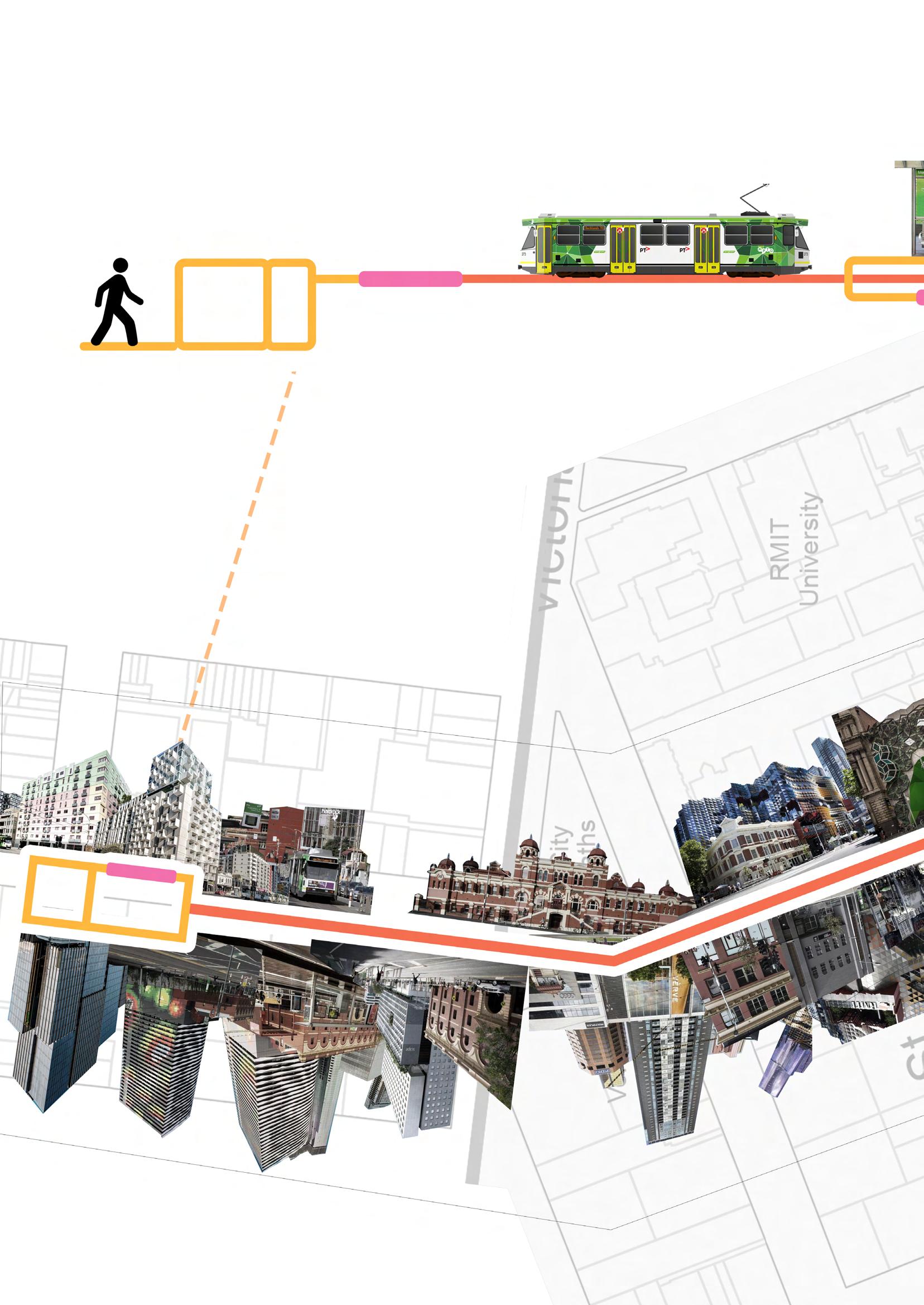
This first week’s mapping visualizes my daily traveling route from home passing through places that I commute to the most by foot traffic and tram as the primary transportation modes. This mapping will actually go through a few further developments exploring a more in-depth analysis of the streetscape (see page 20-21 & 4445 for more detail).
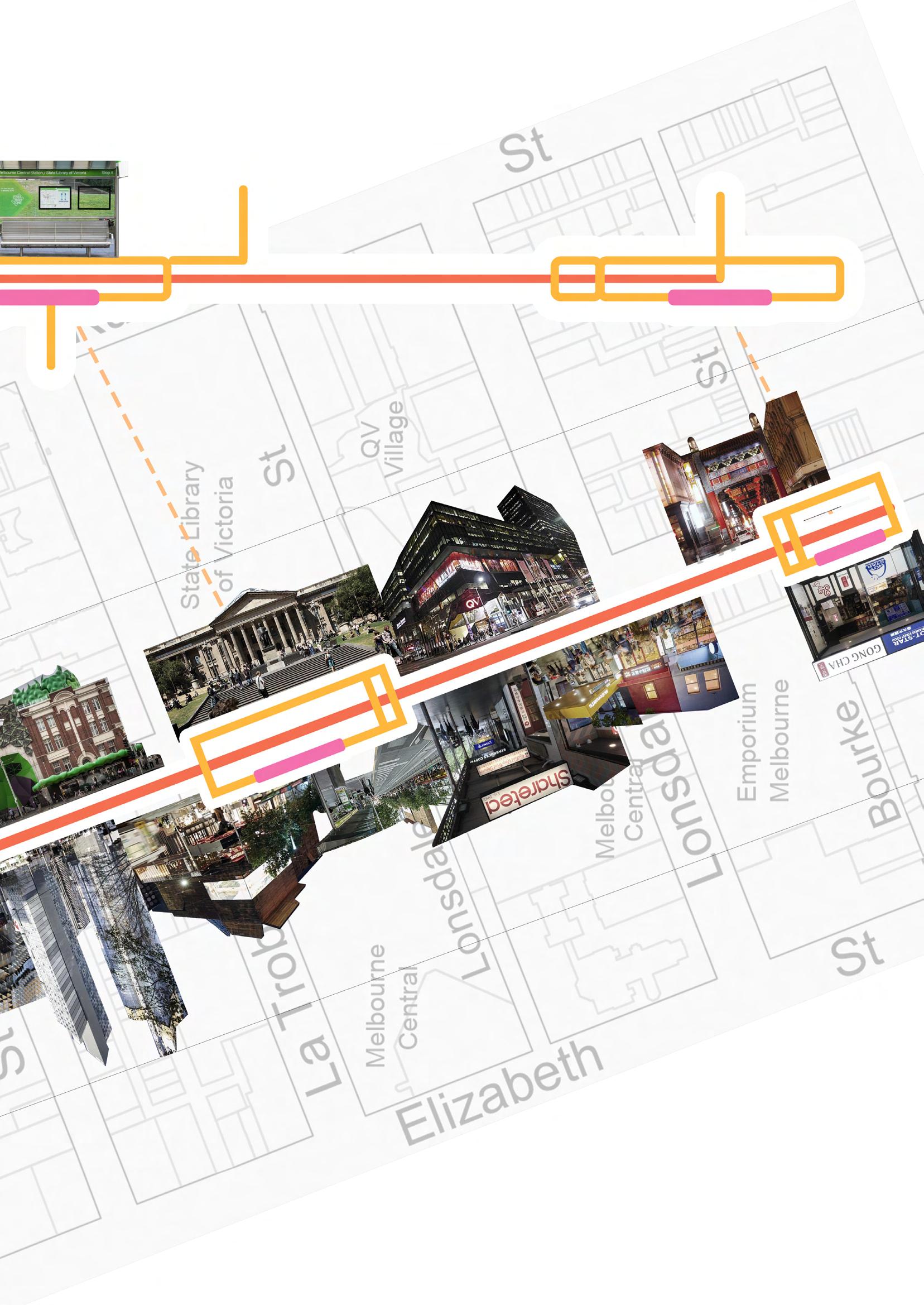
artefact
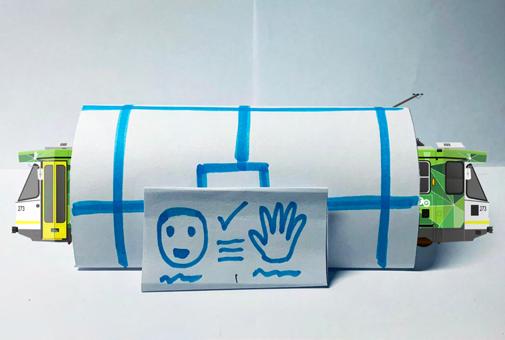
My idea for the artefacts is making these as mini interventions that encourage activation of the existing street infrastructure by gamifying playable interventions that people can engage with in the most exciting way, from the dull mundane sidewalk, crosswalk, to overcrowded bike racks and car parks.
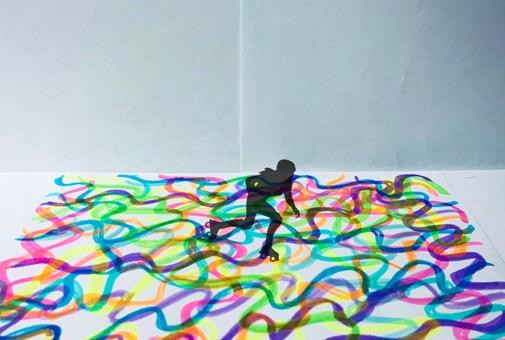
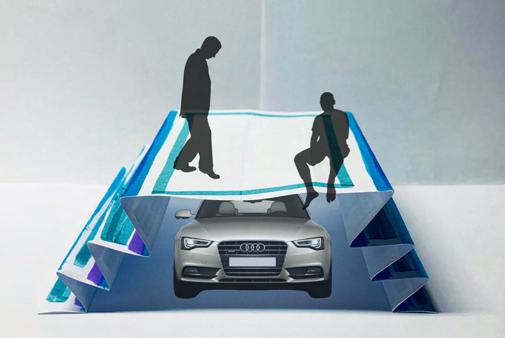
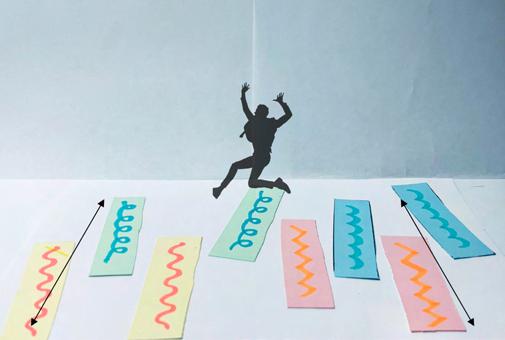


Explosive Holes
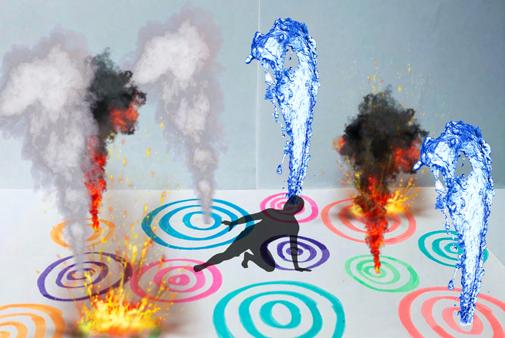
“The main difference between play and playfulness is that play is an activity, while playfulness is an attitude.”

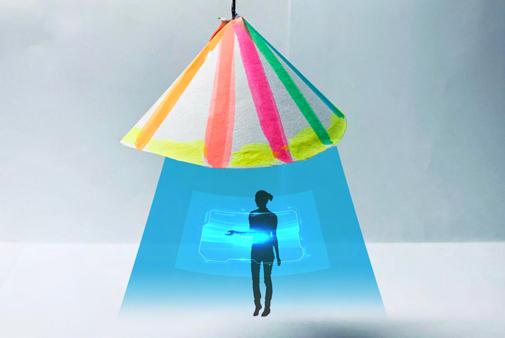
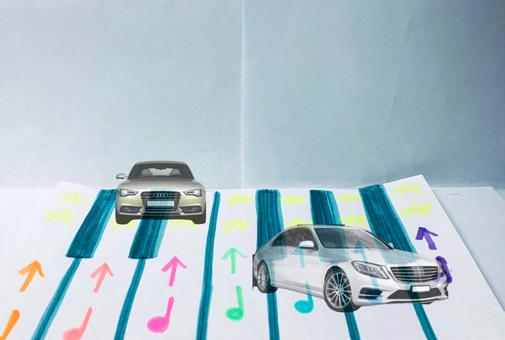
(Sicart 2014, 22)
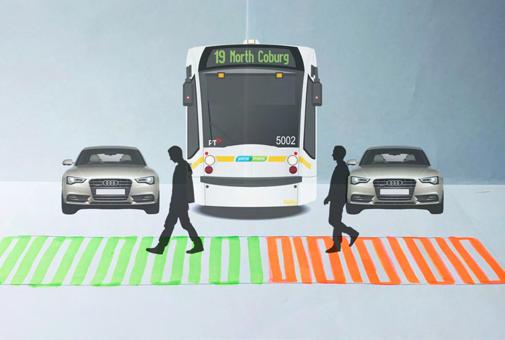

“Play is an important but largely neglected aspect of people’s experience of urban society and urban space.” (Stevens 2007)
Play for Adults: Why & How? infographic. Clay Drinko. 2020. Courtesy of Play Your Way Sane: https://www. playyourwaysane. com/blog/ play-for-adults
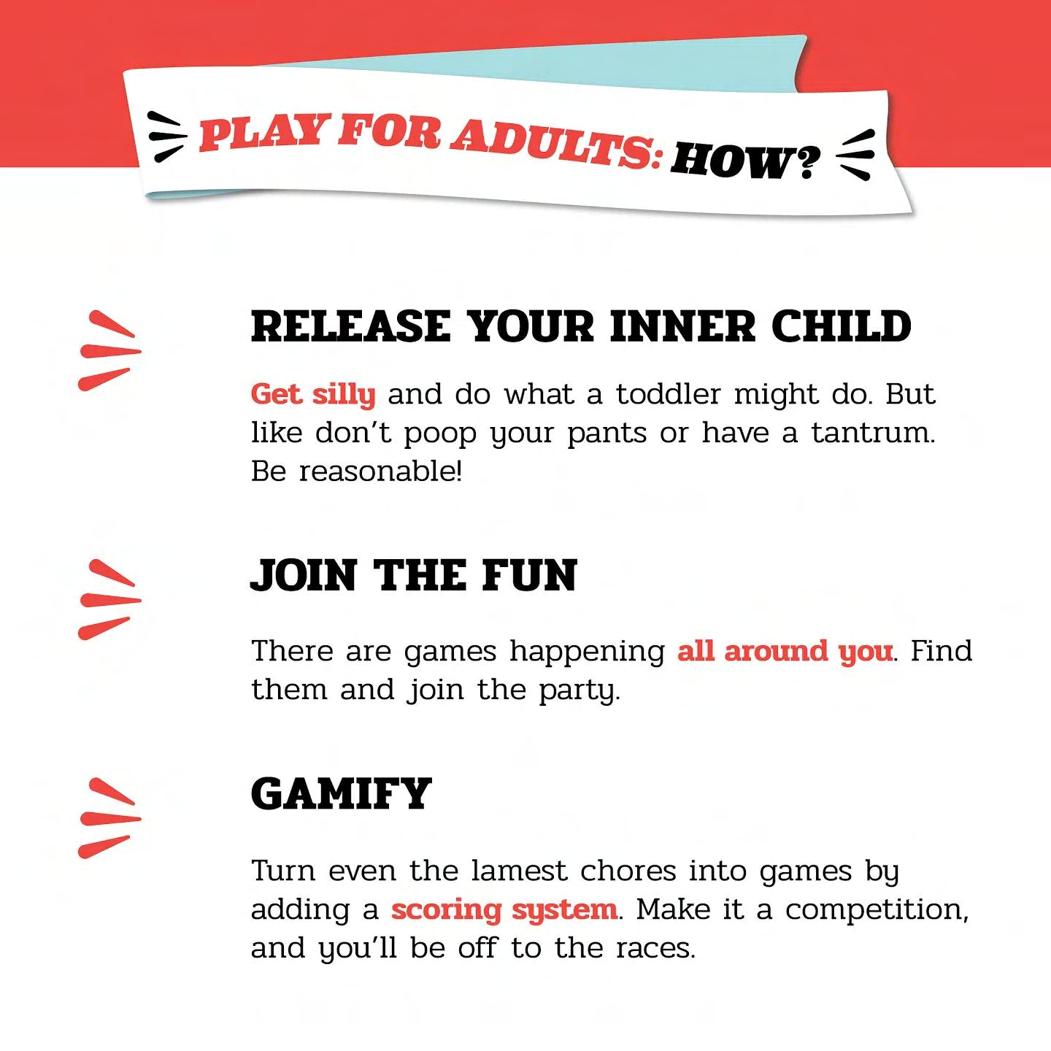
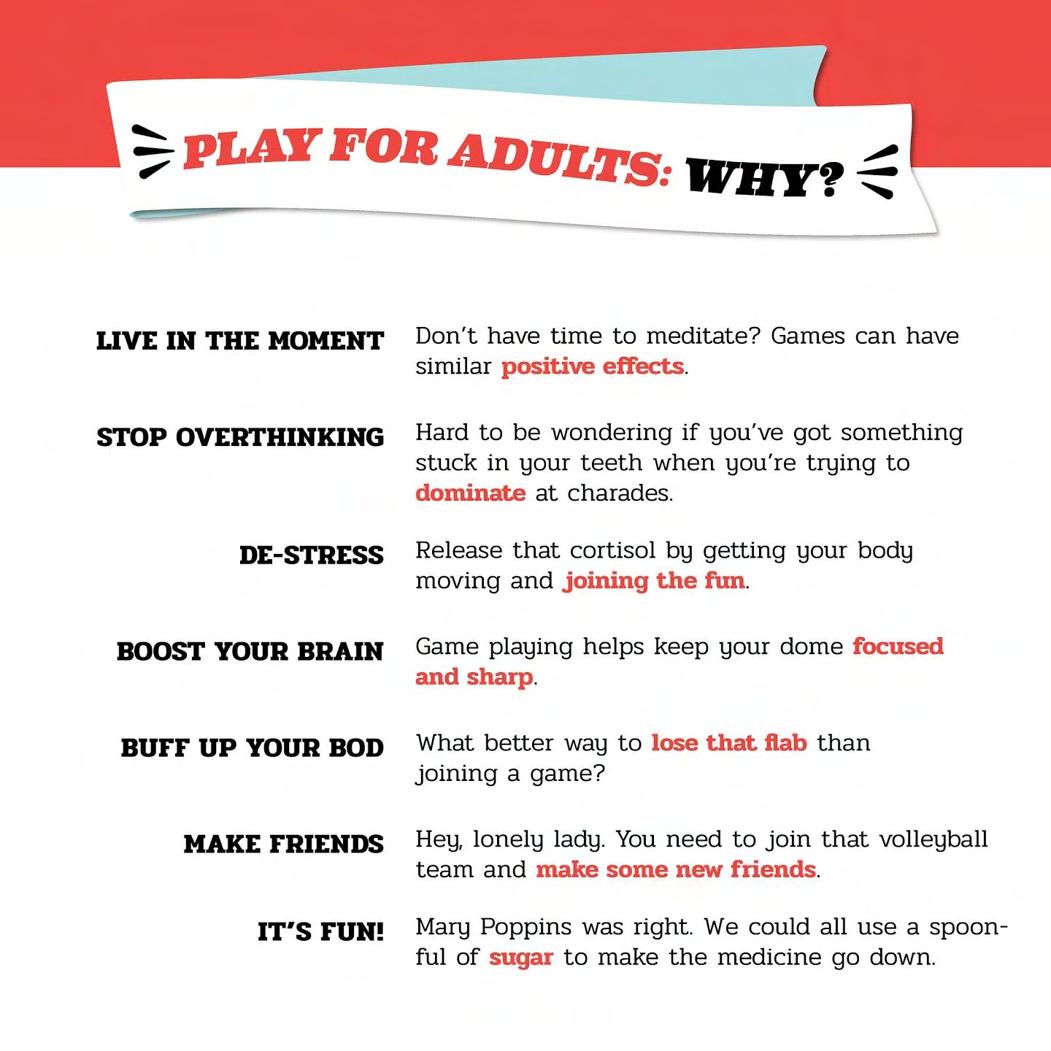
“Play is a fundamental part of our moral well-being, of the healthy and mature and complete human life. Through play we experience the world, we construct it and we destroy it, and we explore who we are and what we can say. Play frees us from moral conventions but makes them still present, so we are aware of their weight, presence, and importance.
We need play precisely because we need occasional freedom and distance from our conventional understanding of the moral fabric of society. Play is important because we need to see values and practice them and challenge them so they become more than mindless habits.
We play because we are human, and we need to understand what makes us human, not in an evolutionary or cognitive way but in a humanistic way. Play is the force that pulls us together. It is a way of explaining the world, others, and ourselves. Play is expressing ourselves—who we want to be, or who we don’t want to be. Play is what we do when we are human.”
Sicart 2014, 5 & 6)
“We want our modern lives to be dynamic, engaging, and full of the expressive capacities of play. But we also want them to be effective, performative, serious, and valuable. We need play, but not all of it—just what attracts us, what makes us create and perform and engage, without the encapsulated singularity of play.
What we want is the attitude of play without the activity of play. We need to take the same stance toward things, the world, and others that we take during play. But we should not play; rather, we should perform as expected in that (serious) context and with that (serious) object. We want play without play. We want playfulness—the capacity to use play outside the context of play.”
(Sicart 2014, 21)

Gamifying surrounding environments infographic. Selva Gürdogan(Superpool).2020. Courtesy of The City at Eye Level: https://thecityateyelevel.com/stories/ideas-book-urban-play-spaces-for-young-children/
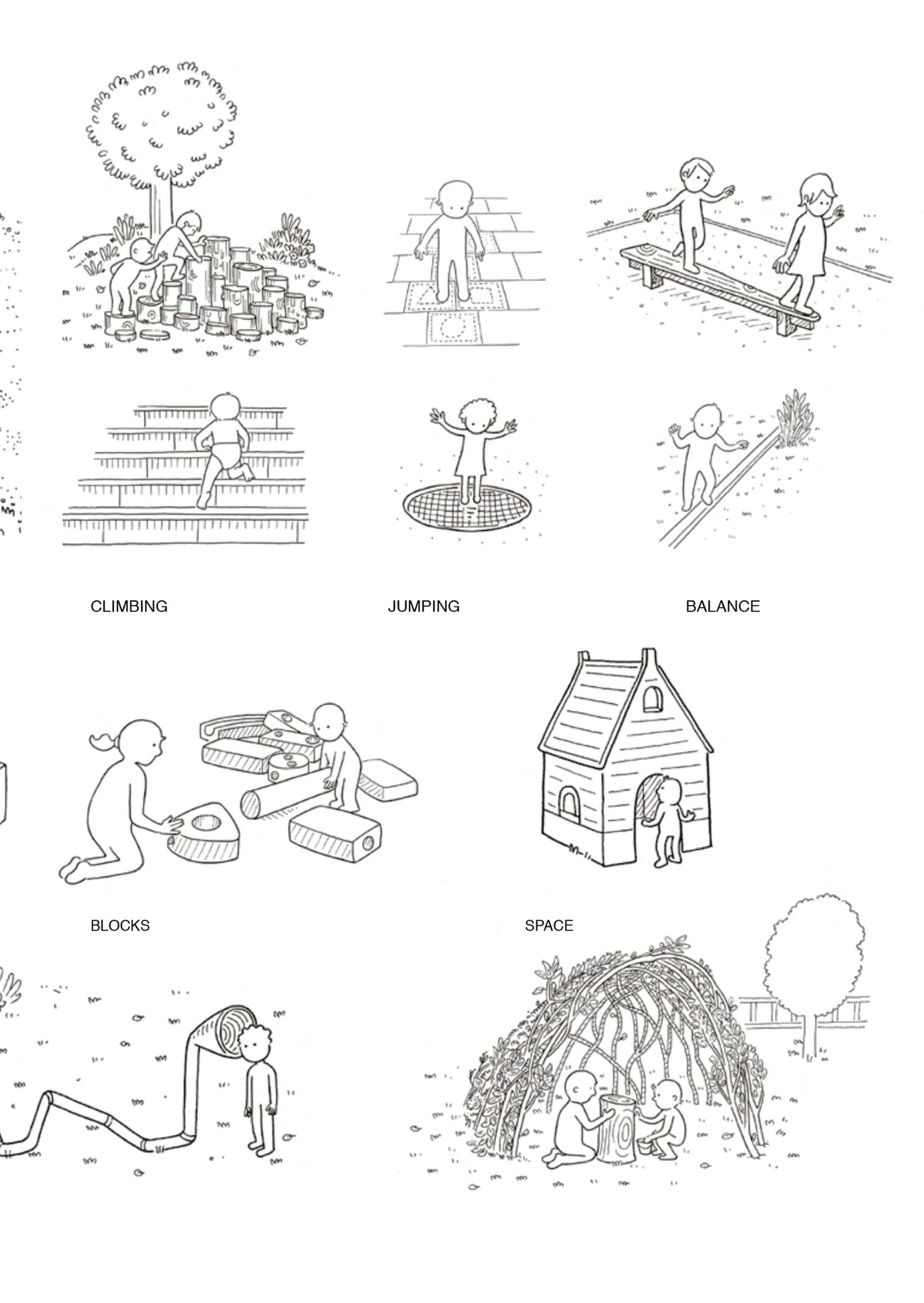
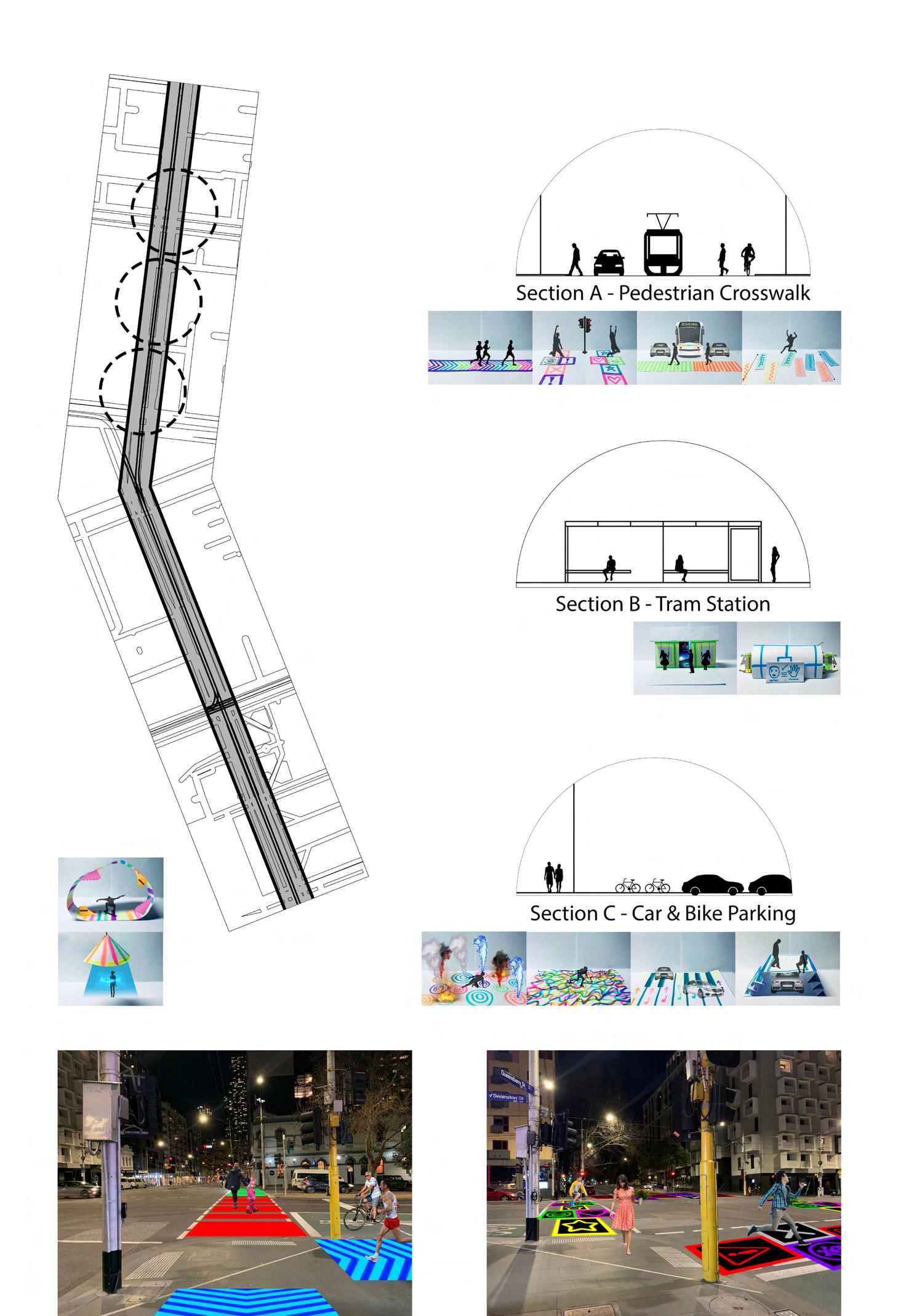
As developing from previous week’s artifacts, I want to see how they would look as small interventions and how people would interact on site. One thing that I take away after the draft midterm presentation is that these interventions might not be fitting well in this site context. This might not be something that people would want to use, so they can opt to ignore and walk pass by without engaging with them. Therefore, I need to be more critical about what is happening on that streetscape. I need to dig deeper on whether there is play happening along with other pre-existing issues that I might want to use play to tackle in the future.
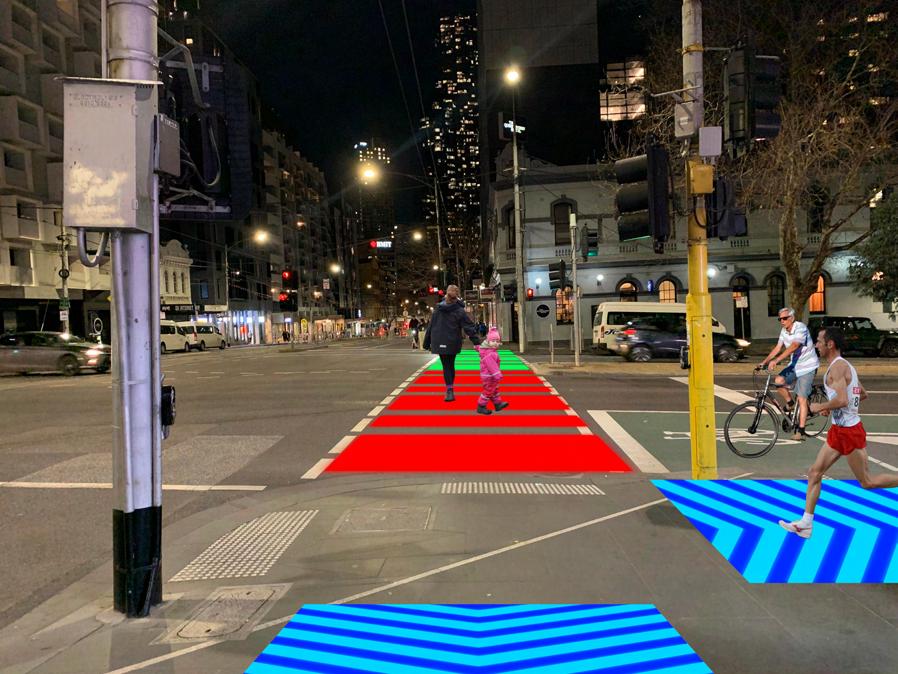
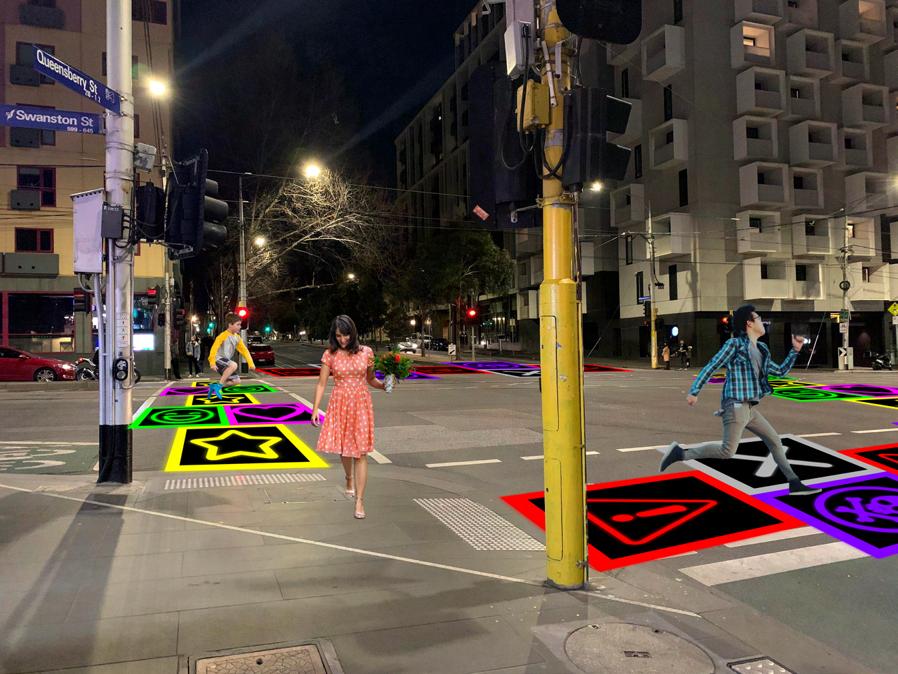
Analysis of public feedback to the city council on walking in the city. Hussein Dia. Courtesy of Architecture Design: https://www.architectureanddesign.com.au/features/comment/

After some thorough observation and reflection on previous experiences of what it is like walking down the street, what I find the site lacks overall is the excitement and spirit of joy and community.
The atmosphere of the site is dull and boring, and the street itself is poorly maintained because it is so old and squalid, and badly littered.
The sidewalk is overcrowded with bike racks as the tram line overpowering more than half the street, which scales down spaces for bike and foot traffic.
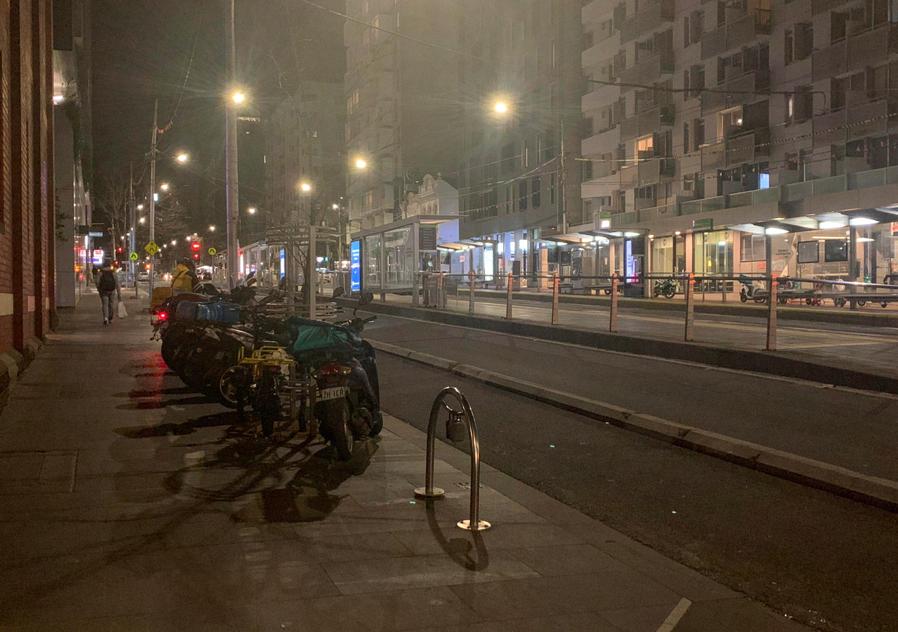
On top of that, the traffic crossing is quite unsafe since there are many cars detouring during the green light, and I almost get hit by the cars sometimes.
So this future of play studio is a perfect opportunity for me to design something that is wild and imaginary, a place that has no car, that is pedestrian friendly, a place that is modern and advanced, but most importantly, playable and stimulating as well.
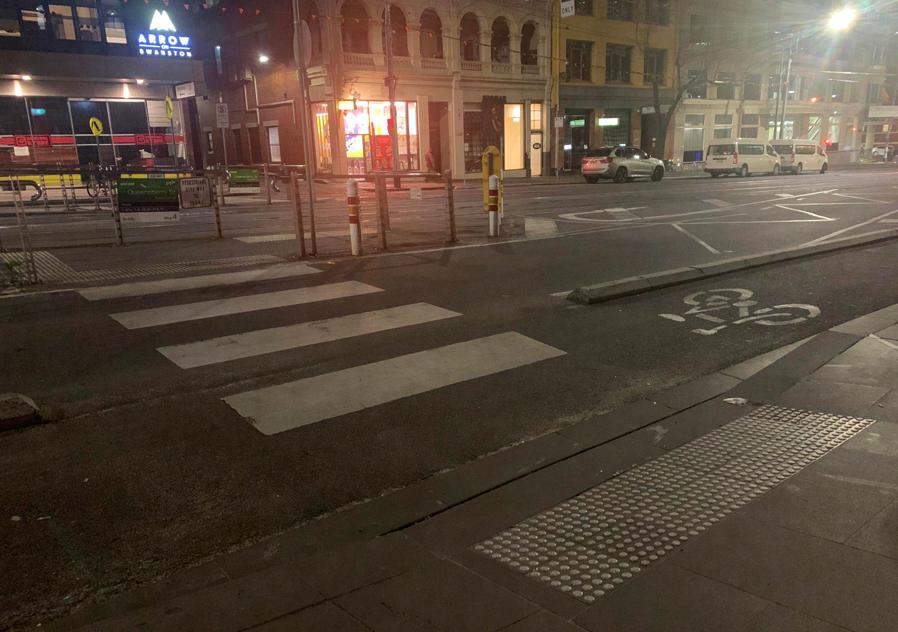

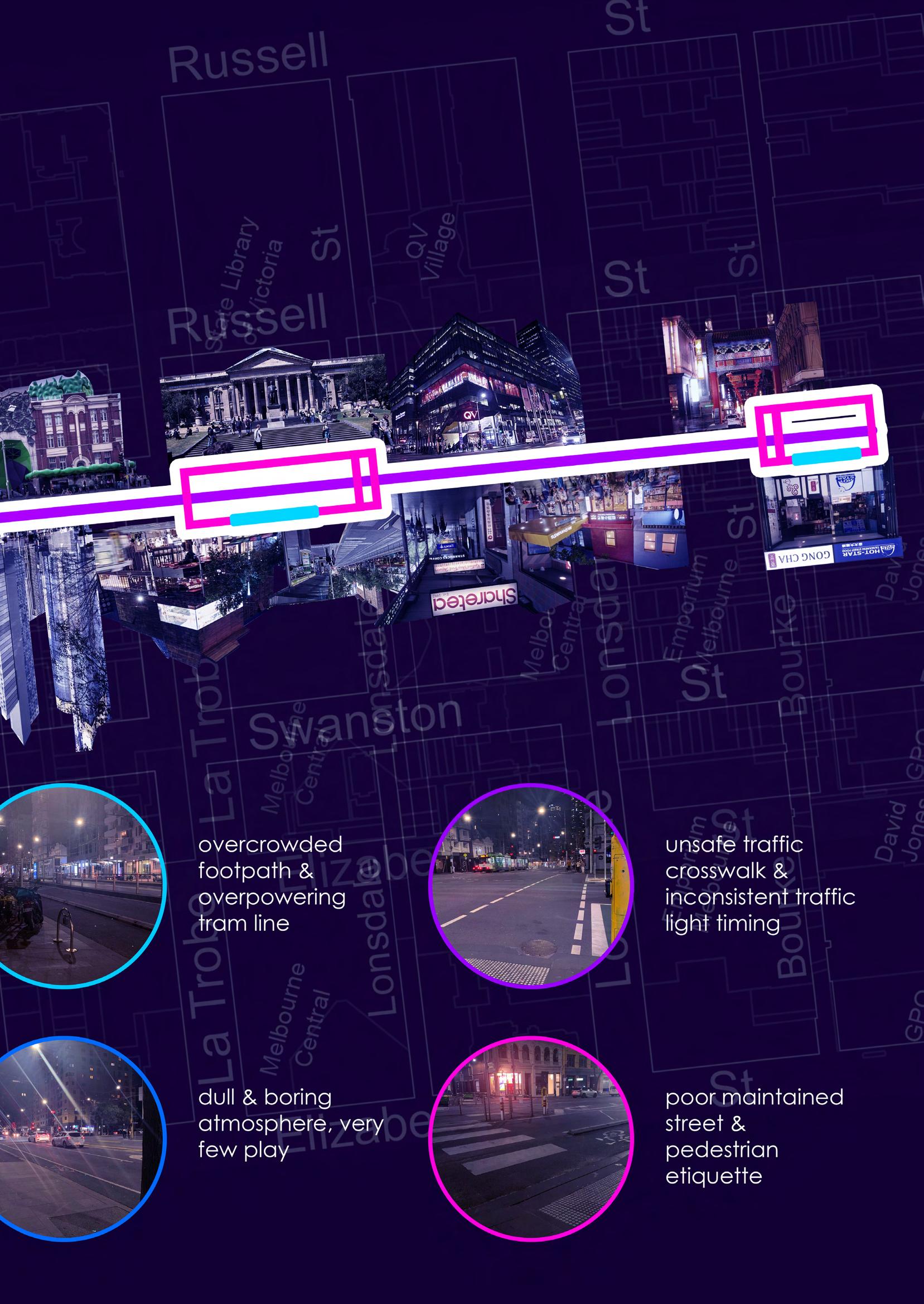
precedent B1 traffic calming
Stop, Smile, & Stroll. Hirsch & Mann. Courtesy of Design Week: https:// www.designweek.co.uk/issues/31-october-6-november-2016/ hirsch-mann-revealed-winner-playable-city-award/

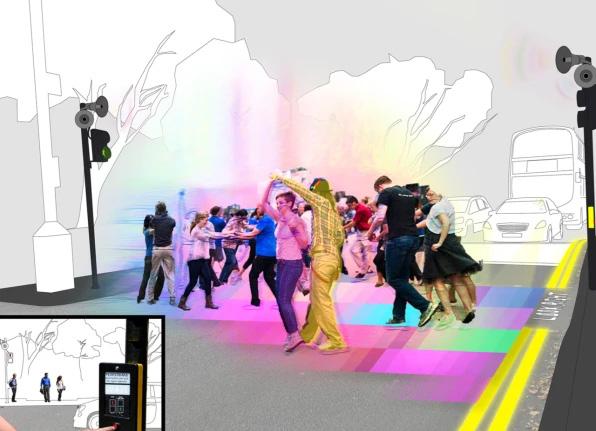
“Playfulness is a way of engaging with particular contexts and objects that is similar to play but respects the purposes and goals of that object or context.” (Sincart 2014, 21)
Funny speculative zebra crossing technology in China. SuperTech. 2021. Courtesy of SuperTech: https://www. playyourwaysane.com/ blog/play-for-adults




precedent B2 adventure games & movies
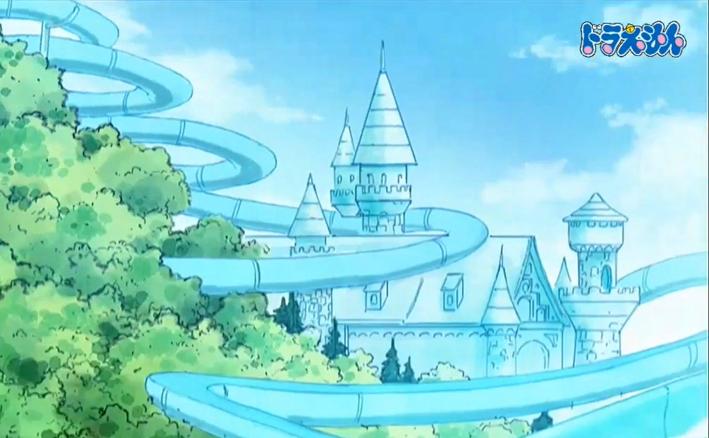

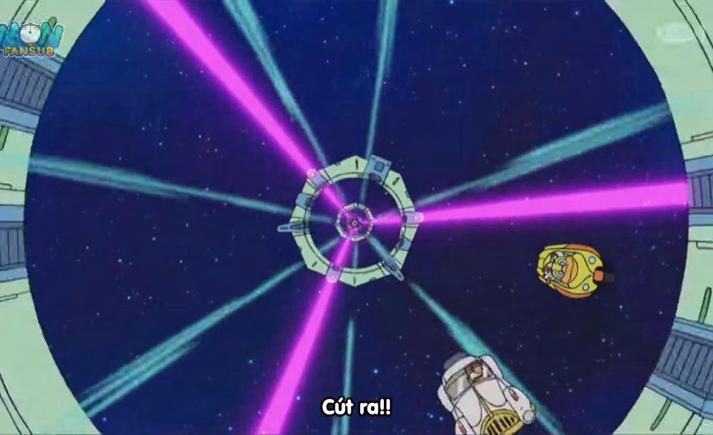


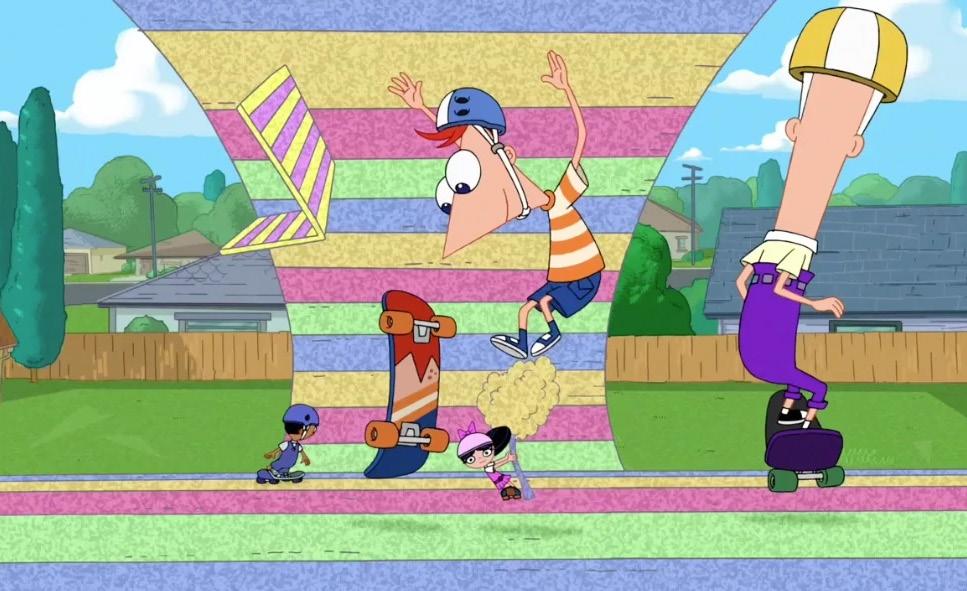
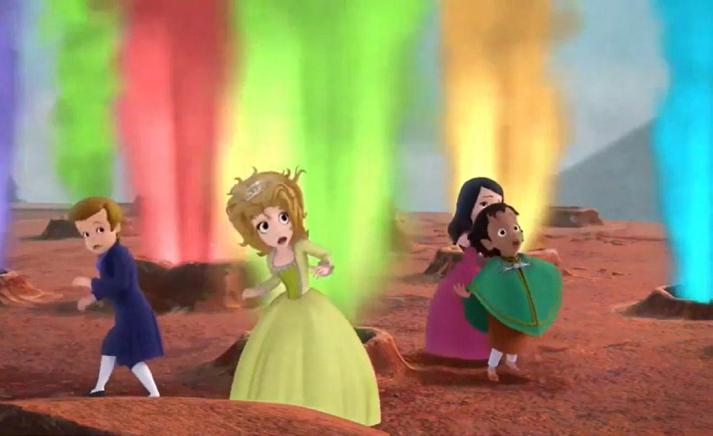


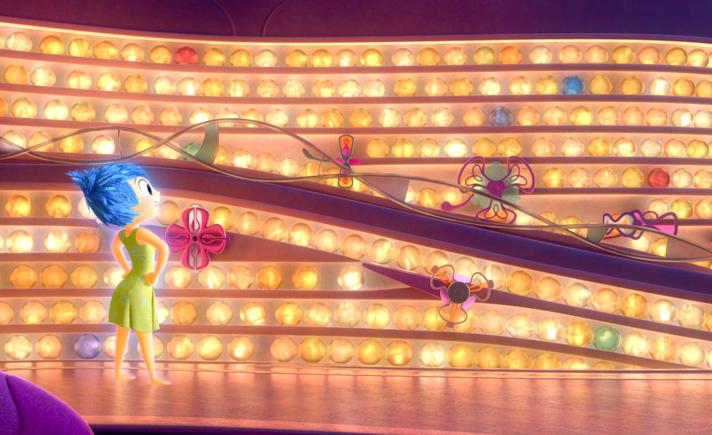
Iteration 1 future image

While the inspiration draws from the idea of humor of the traffic calming techniques, it also comes from some of my favorite fantasy adventure games and movies such as Madagascar 3, Jurassic World, Phineas & Ferb, Doraemon,... and so on, as they all demonstrate some of the most fascinating ways of playing. These animations embark the viewers on crazy adventures that only exist in imaginary virtual settings, which I think can be a good fit for this project.

Iteration 2 future image

What I need to think about next for my upcoming final phase of the project is whether my intervention proposal aims to focus on reinventing the badly designed traffic system and making it safer, or rejuvenating and vivifying the site to make it fun and engaging for everyone of all ages, especially busy adults.

artefact

“The daily commute to work can often be laborious, dull and uneventful but Playable City seeks to change this” (Wright 2016, cited in TechSpark)
rollercoaster tunnel

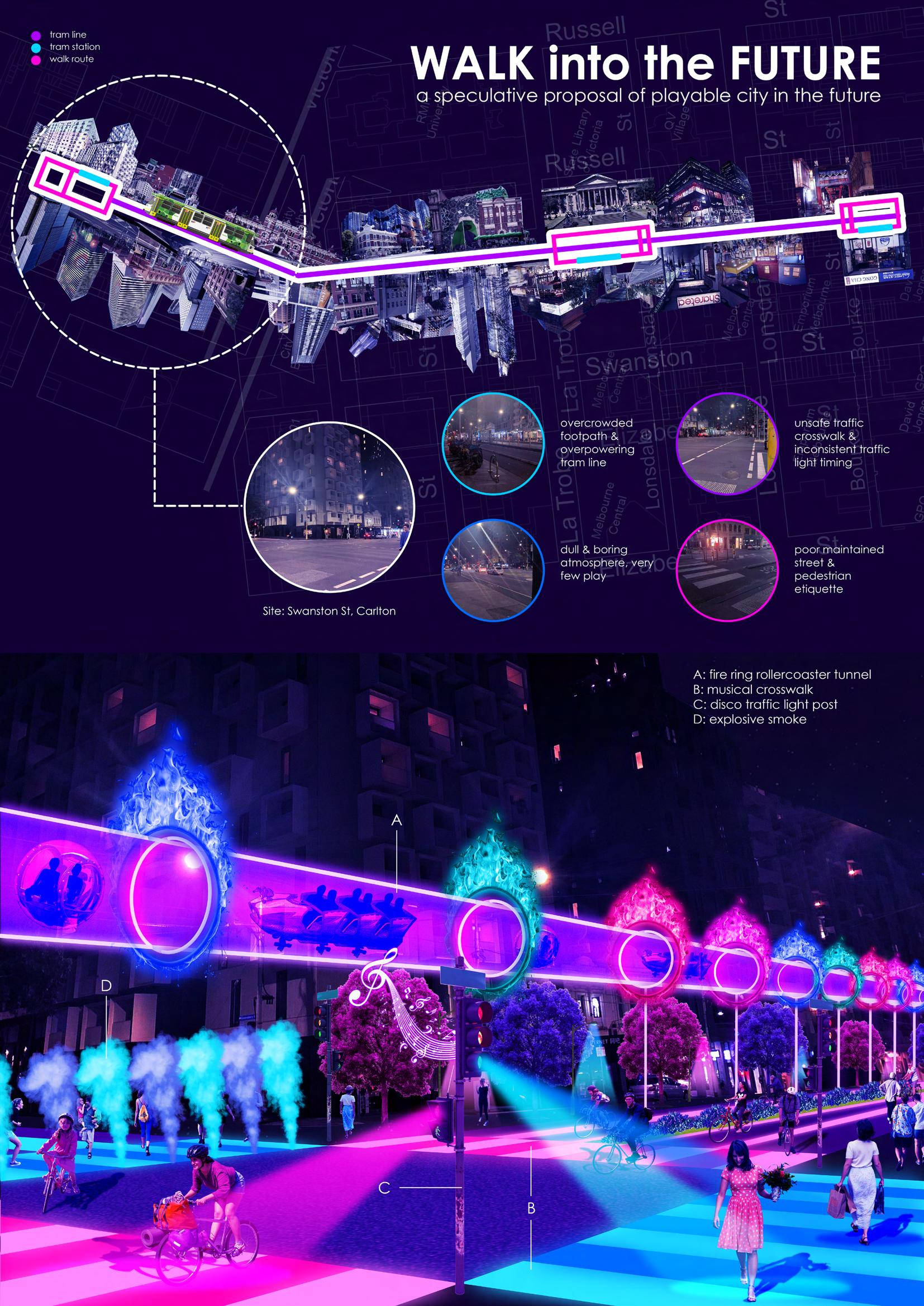
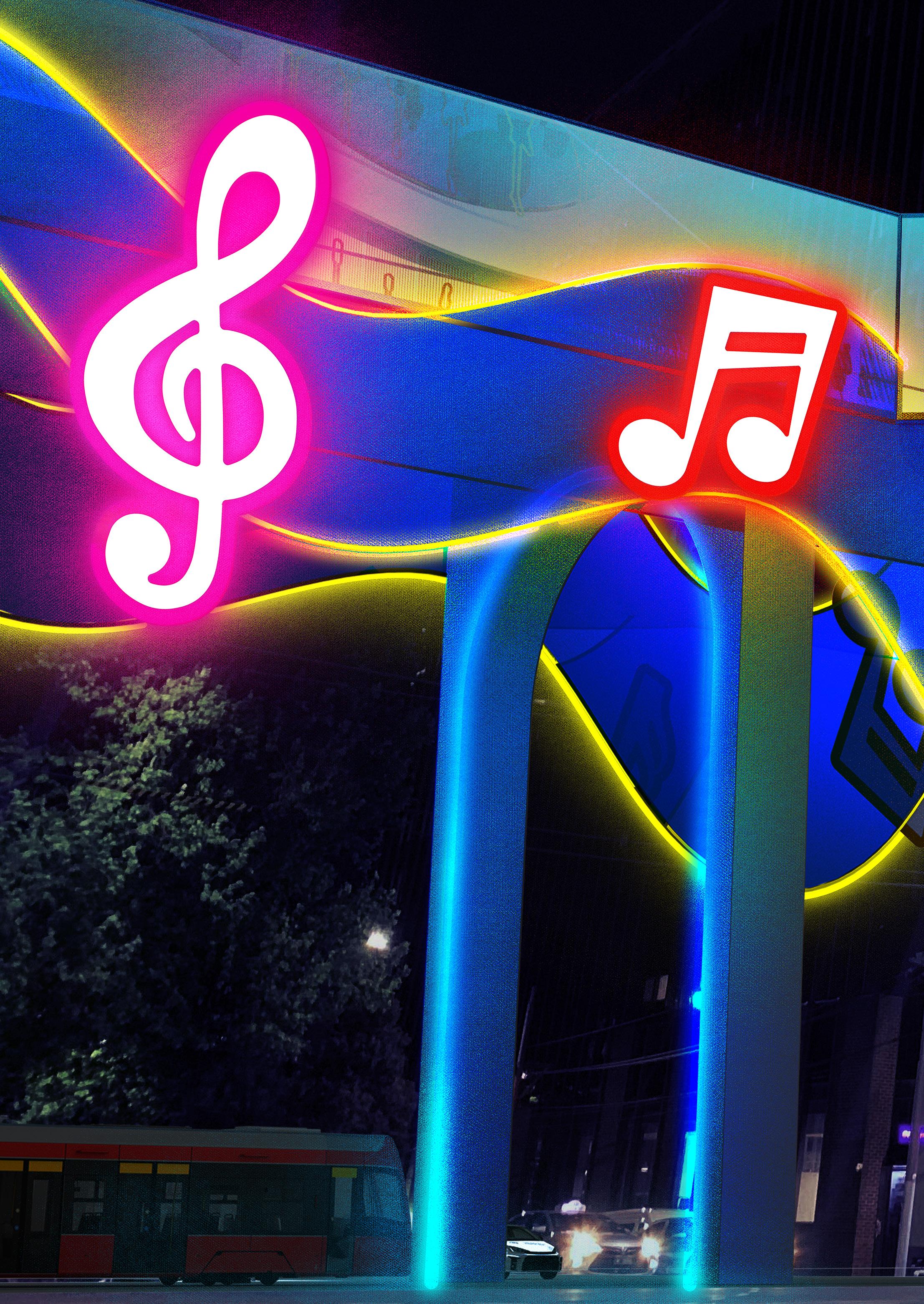
ELECTROPLAY
ElectroPlay is a playable streetscape revamp of a well-known Swanston St, specifically located in the northern part suburb of Carlton. The cities and civilizations that we live in so far have always been perceived as serious-minded and somewhat monotonous with highly functional design with very little existence of playfulness. This can be referred back to the fact that citizens nowadays are so caught up with the hectic pace of overwhelming duties and responsibilities happening in their life that the idea of play no longer exists in their agenda. With play starting to expand to more than just a playground for kids with traditional slides, swings, and seesaws, my project, ElectroPlay, aims to incorporate play into our living cityscape, as I envision the city of the future will not just have any playgrounds, but the cityscape itself will be the playgrounds for everyone of all ages. Therefore, this raises the question for my project: How can spatial design activate the currently existing neighborhood area into playable cityscape in the future?


Keep: Rollercoaster tunnel with rings of fire
+ It is more interesting, exciting, and more potential to work with and develop to something more playably extravagant
+ It might or might not solve the problem of overcrowded tram traffic by moving this into the mid-air
- It discerns less play than the crosswalk intervention since it functions just a rollercoaster
Let Go: Musical crosswalk & Disco traffic lights
+ It tackles the existing site problems by proposing playable traffic calming techniques, but also implementing play into it to make it pedestrian friendly
- It would be less dynamic and turn out to be flat since the intervention only involves ground interactive murals
- It will also reduce the workload of design proposal, one way or the other
Play Potential of Urban Spaces infographic poster.

precedent C bridge structure
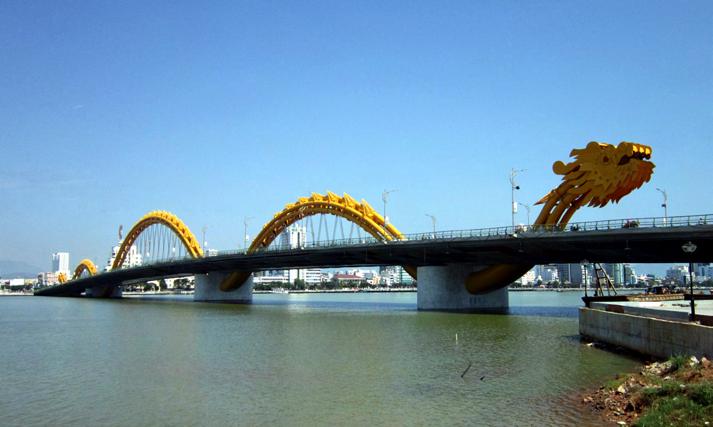
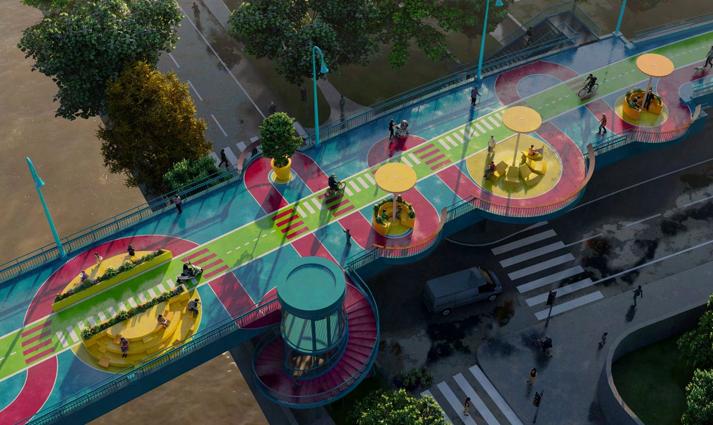


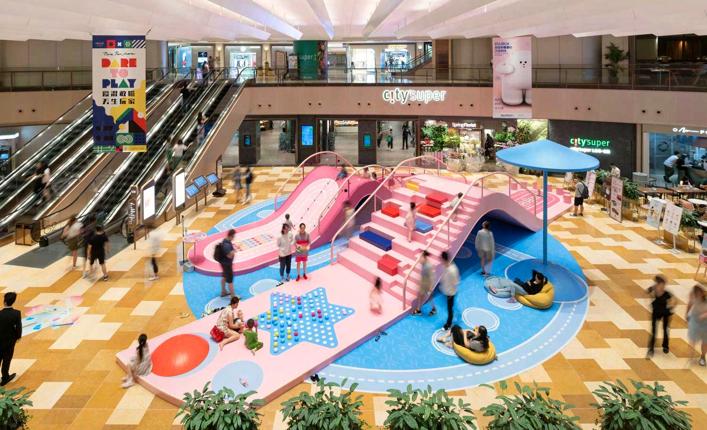
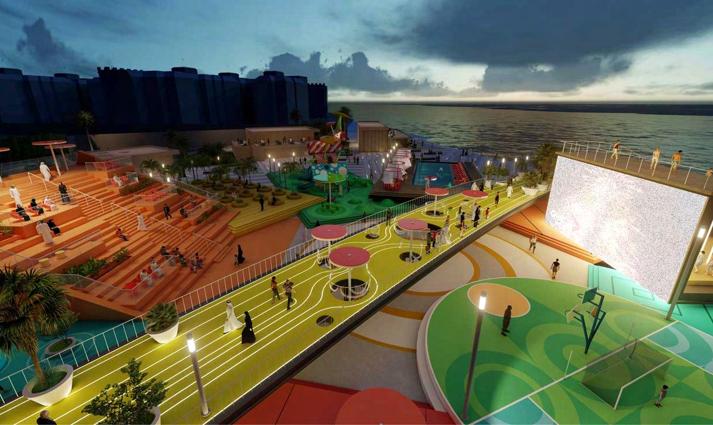
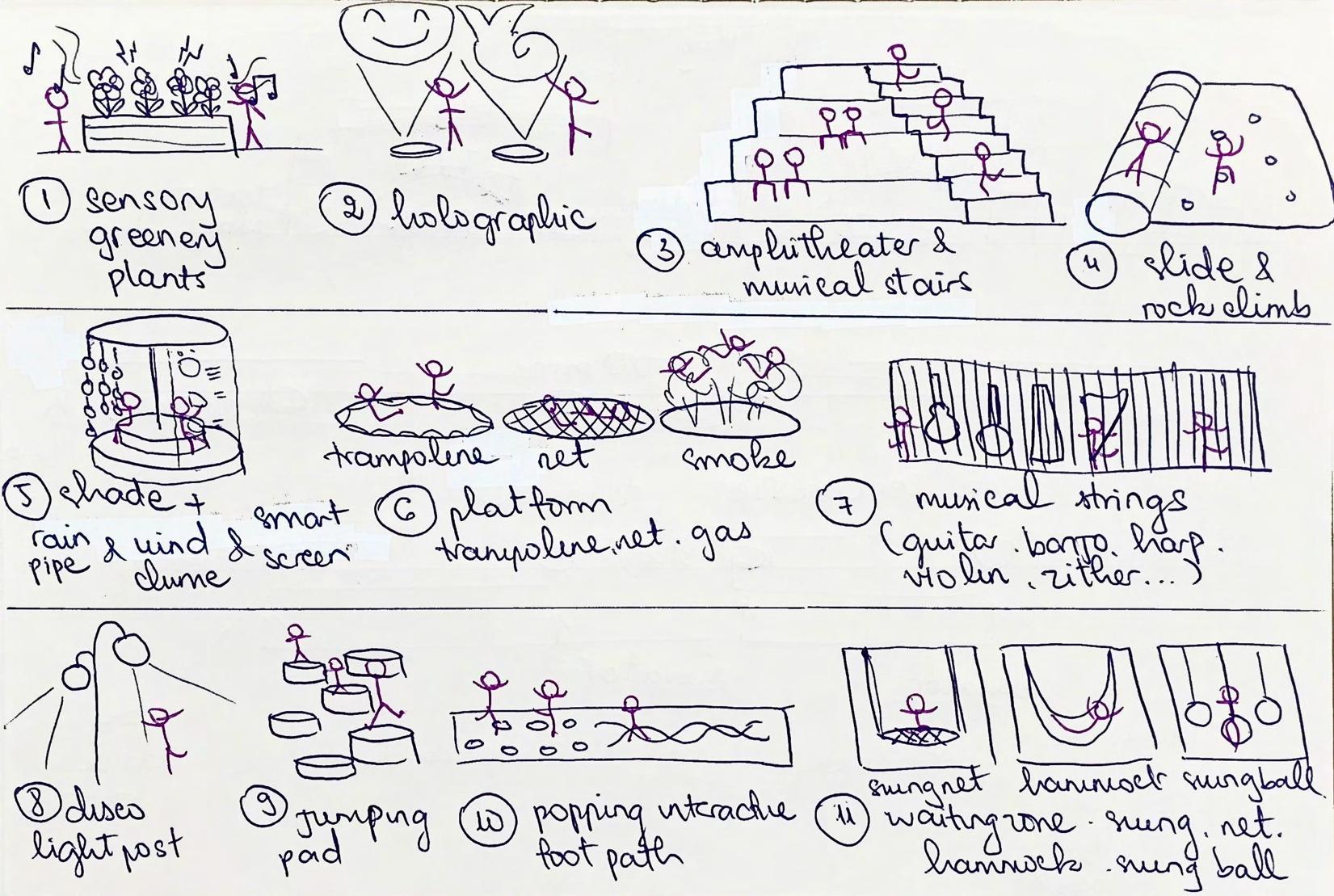



iteration 1 model development
Despite my decision to keep the rollercoaster tunnel and get rid of the pedestrian path, I still want to somehow merge that similar element into my final design proposal. Therefore, my very first iteration starts with the idea of a bridge dedicated to a pedestrian with different kinds of play happening within.
Replacing the regular tram line, the rollercoaster would offer the users an exhilarating experience with vibrant musical sounds as it syncs with the movement of the carter. Now I need to think of how it will be positioned, whether it goes beneath or above the bridge.
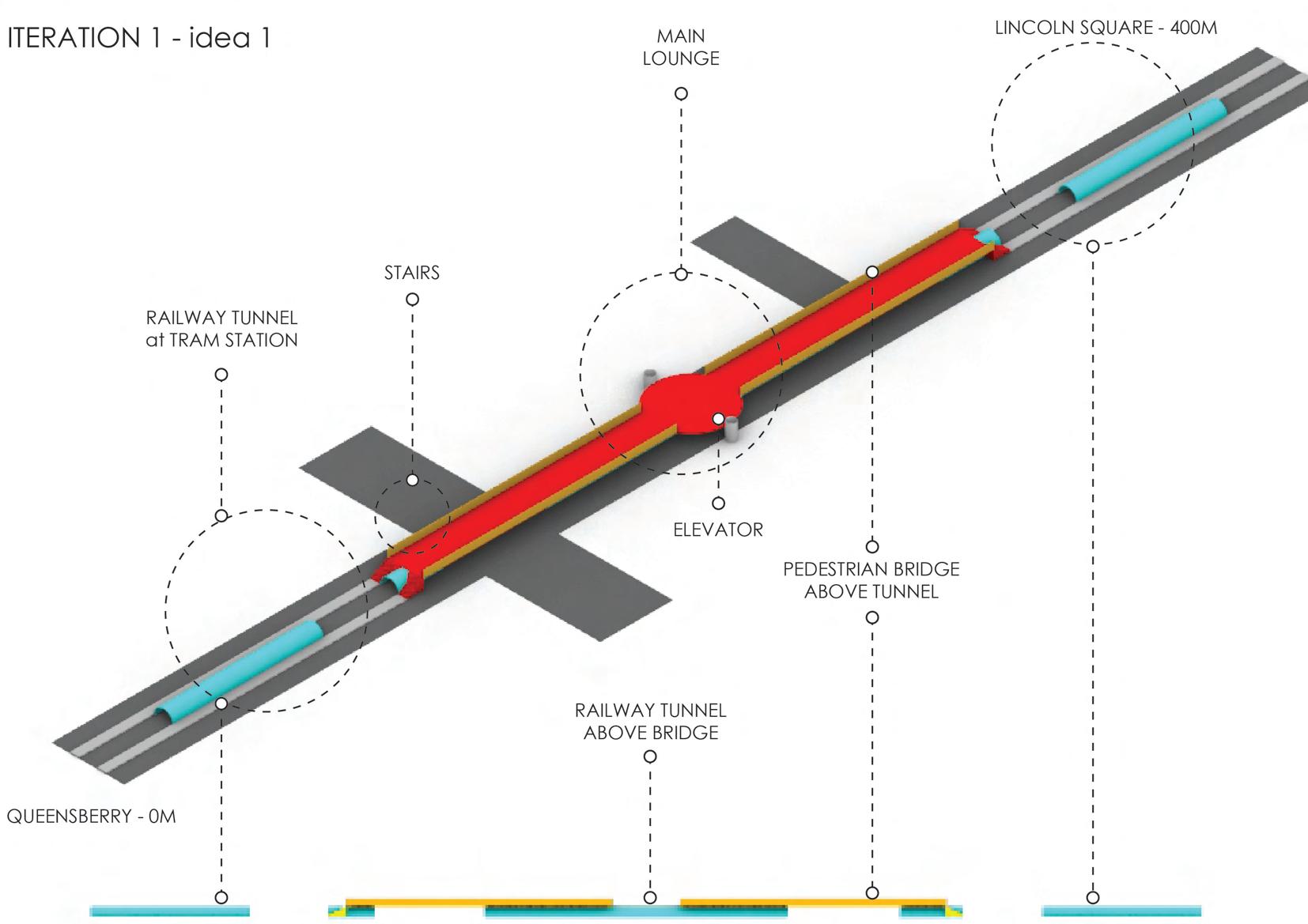

Referring back to the midterm review ‘Walk into the Future, I want to use the idea of daily walking down the street and further elevate into another refined diagram for the final presentation.
Connecting between two ends of Flinder Station in the CBD on the south and the Melbourne Cemetry in Carlton on the north, one major difference I have come to notice from years of living nearby is the atmosphere. Despite being located on the very same street, the CBD always offer these exciting gatherings of eateries, street arts, events, and musical atmospheres from the street musician and buskers that ties altogether, Carlton, on the other hand, exudes an opposite type of energy and mood. The more you roam down the northern part of the street, the quieter and more peaceful it gets, or even scarier and unsafer, as it is not a prominent urban attractor like the CBD where all of the play can happen.
This contrast in the atmosphere is shown through a color gradient transition from cool blue representing Carlton to warm yellow-orange resembling Melbourne CBD.
Therefore I want to introduce and channel that same festive spirit of musicality that reflects the current issue of lack of play in the site into my design which will encourage passersby to engage and enjoy the experience more as they enter the space

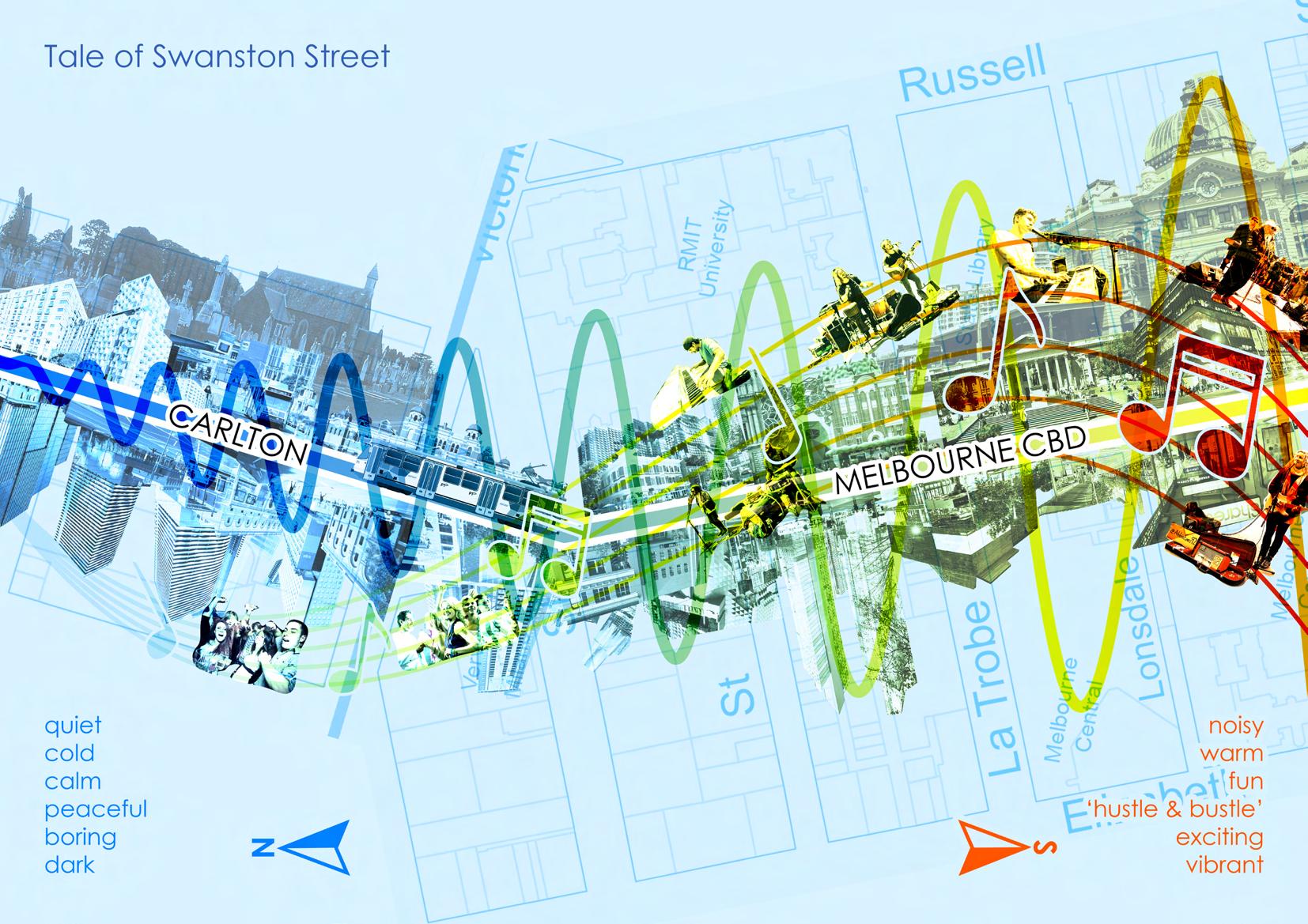
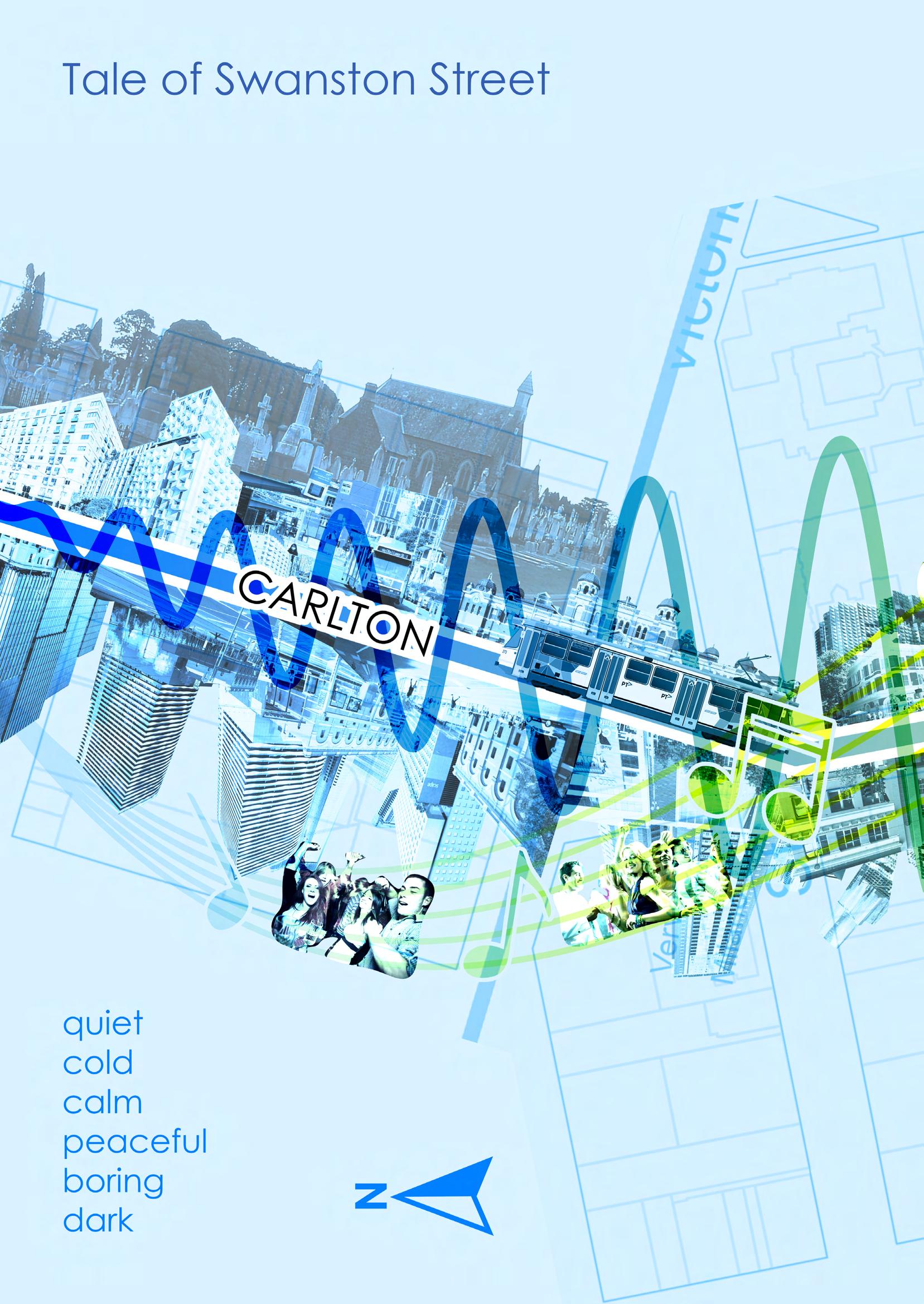

precedent D1
curvature form development
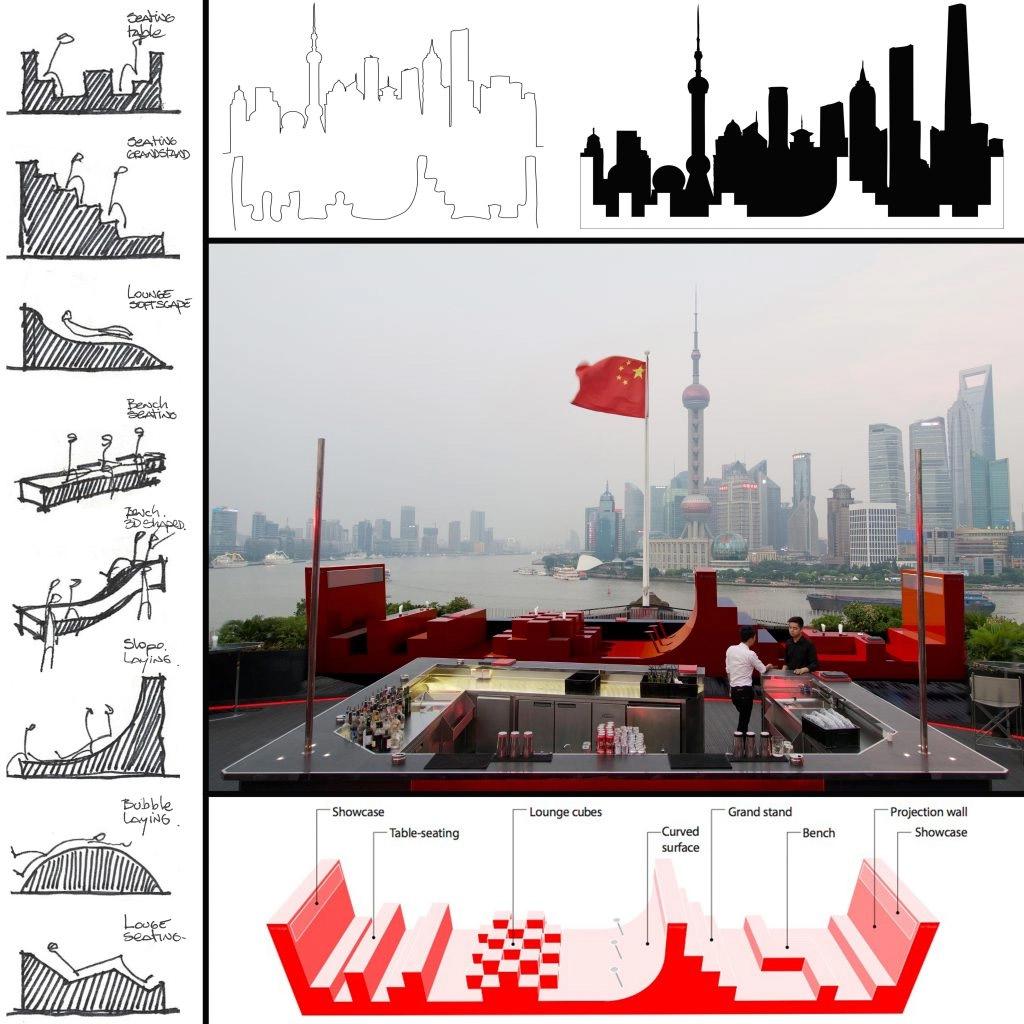
precedent D2 interactive musical path




Merging two precedents Musical Story and Red Rouge on their forms and shapes development technique, I similarly utilize the diversity in buildings’ heights surrounding by tracing the skyline and derive it into a curving, wavy form, and structure, that resembles a musical line, a soundwave.
To improve further, I could have taken a series of photographs on the front facade of those buildings and collaged them using Photoshop into a 2D elevation view rather than 3D perspective view as to make it less confusing and more clearly.
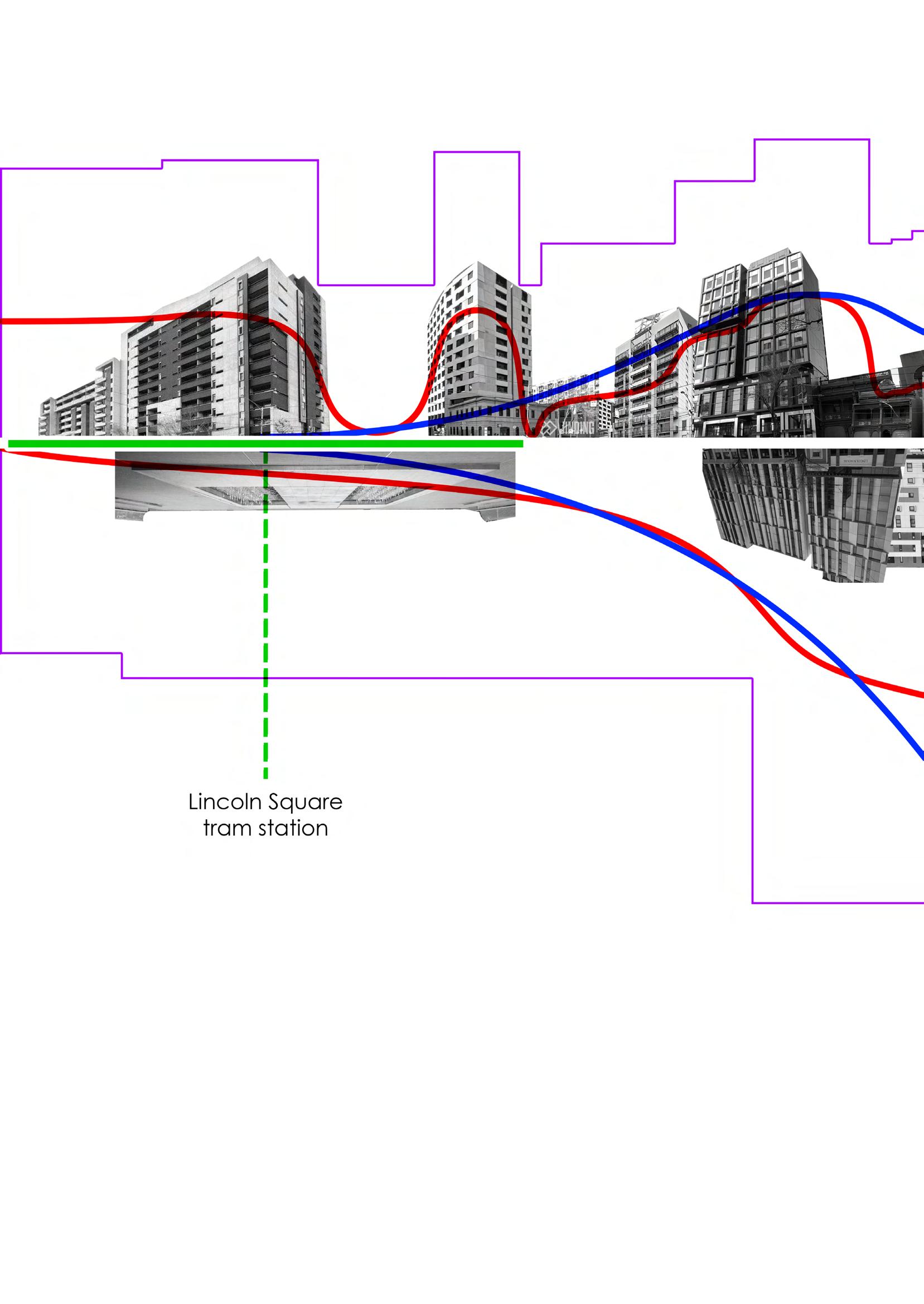


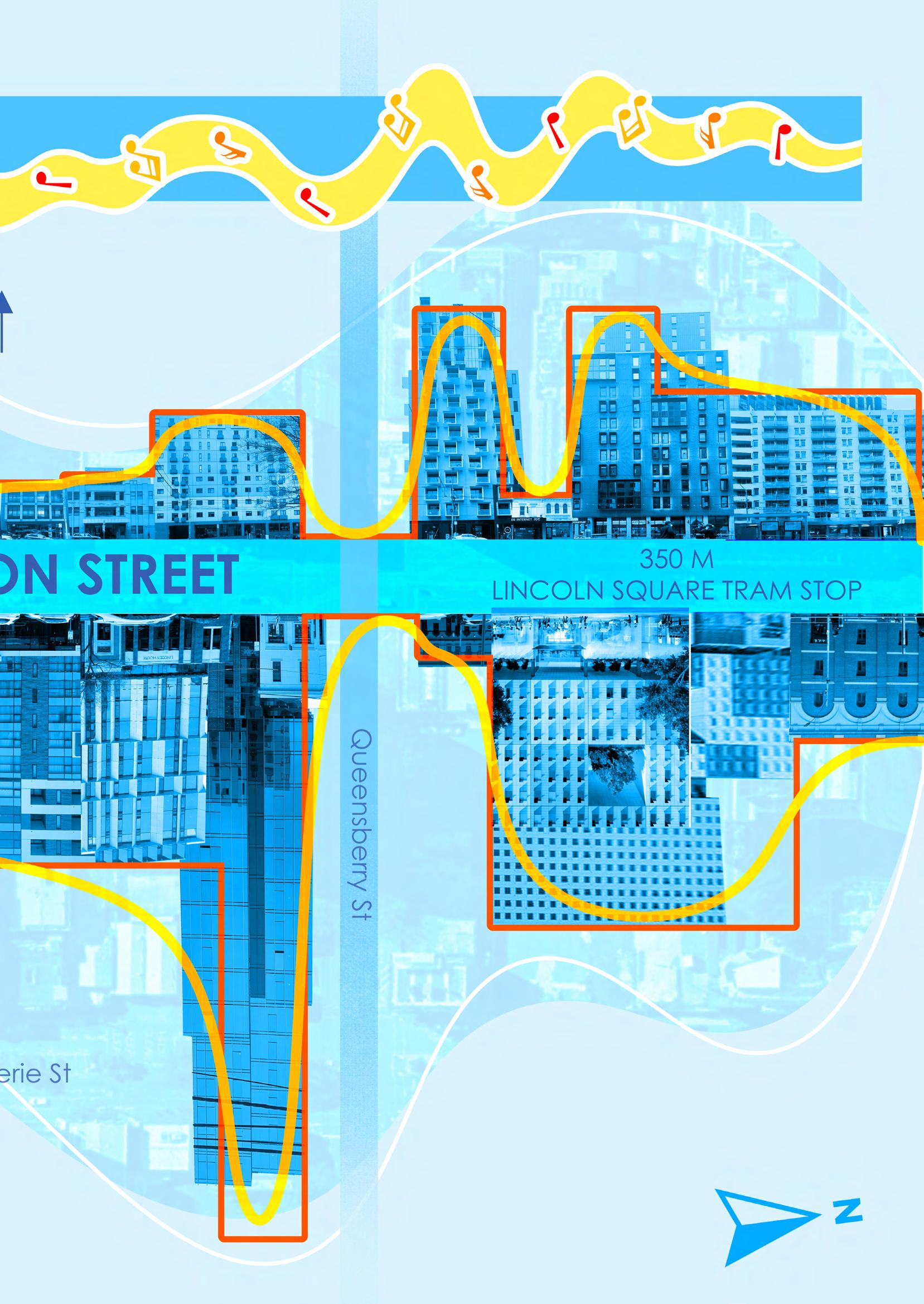

This shape will be used as the central backbone for the design, incorporated into an interactive musical path as well as both sides of the facade with musical notes.
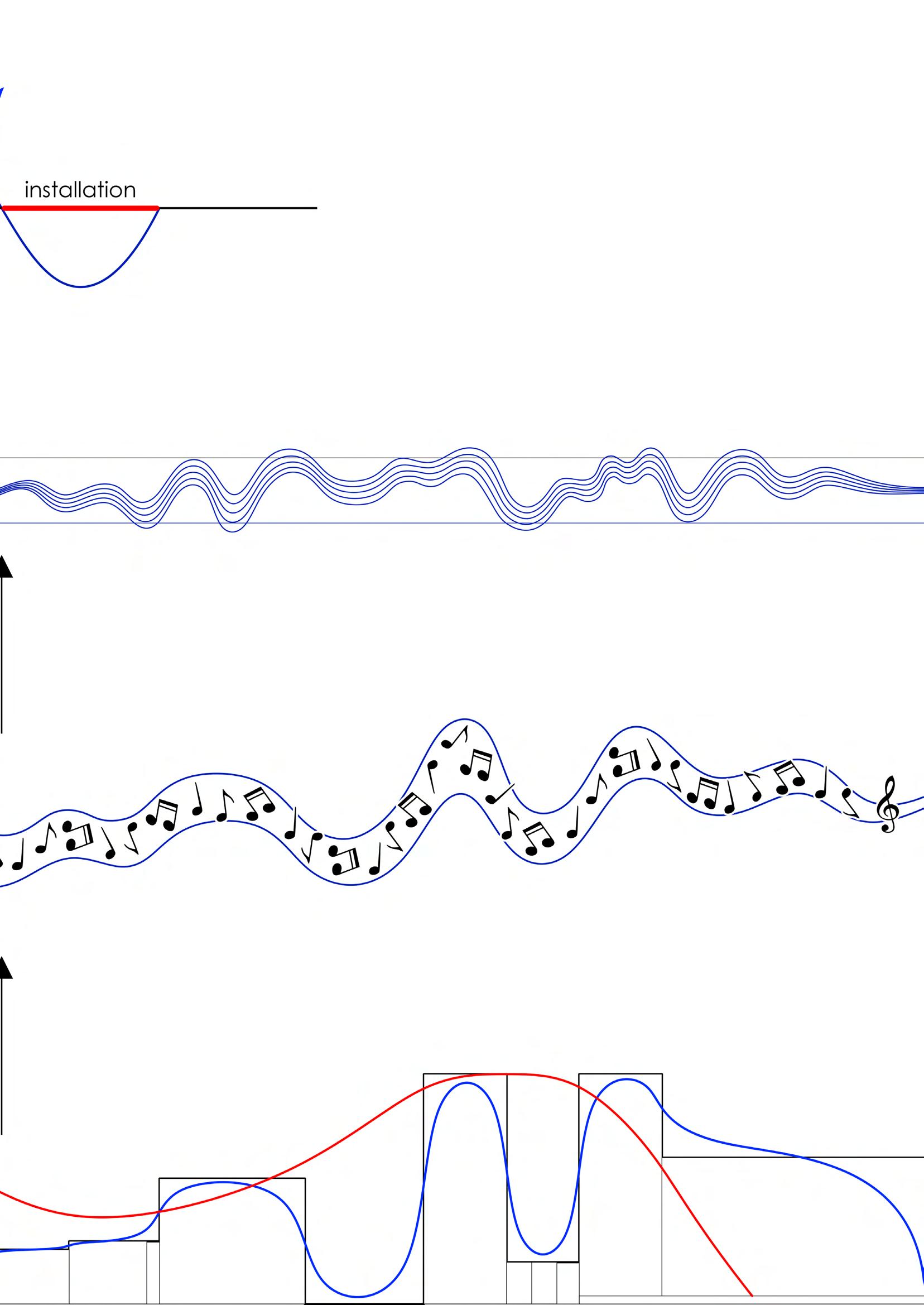
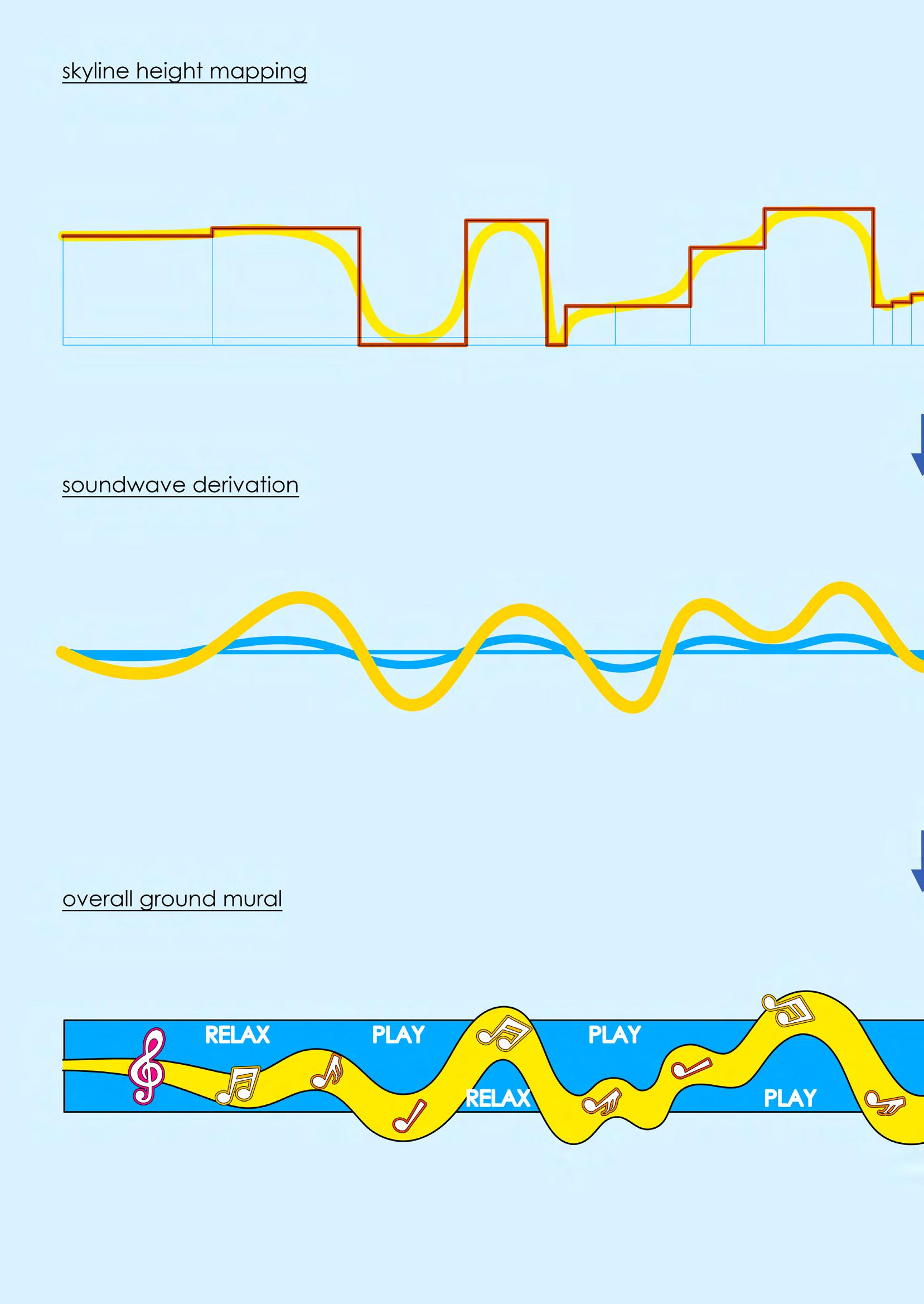
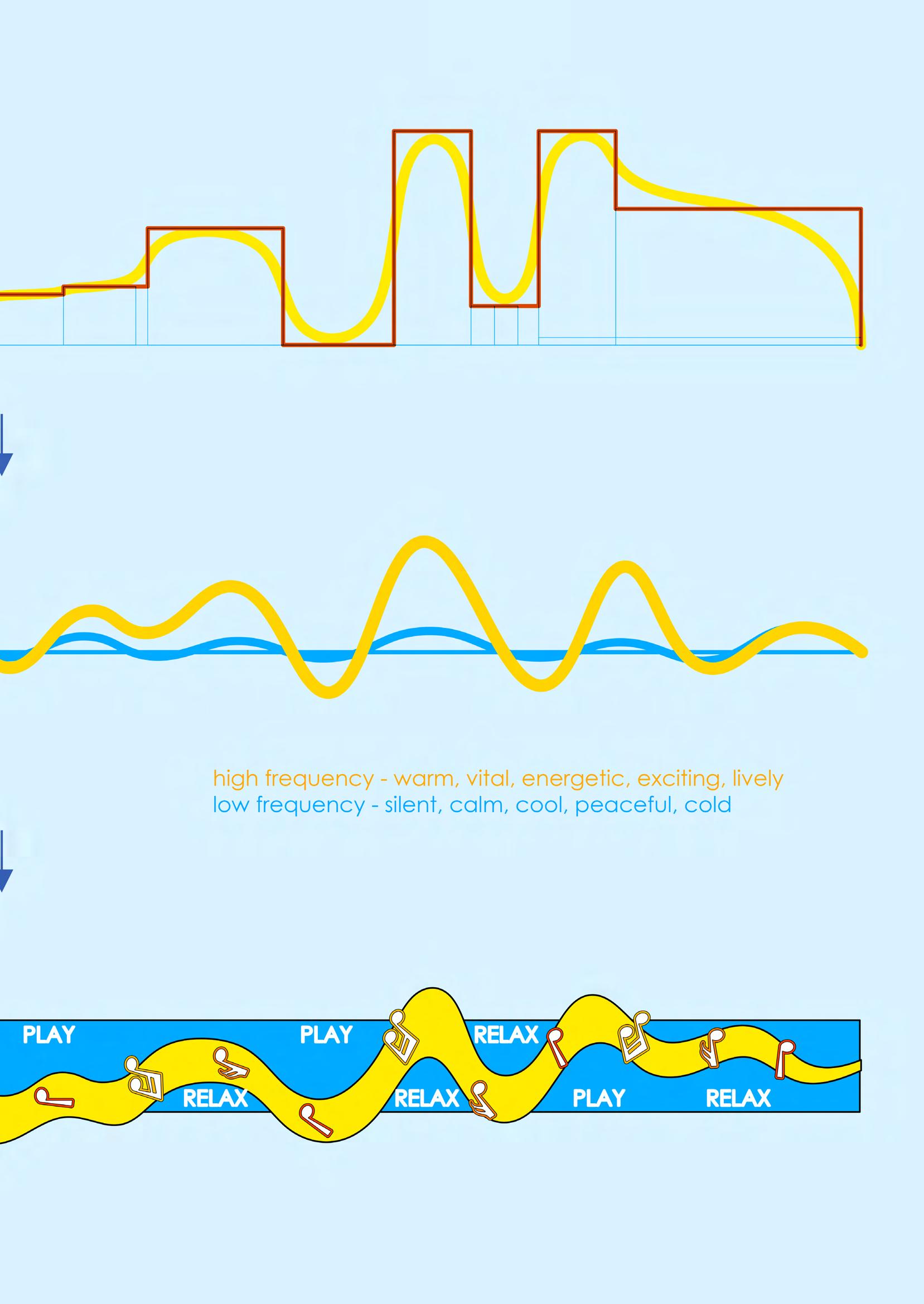
iteration 2 model development
The next iteration continues working on refinement of the overall structure of the intervention. After testing out from both iterations, I find that this idea might not be working.
First, placing a rollercoaster rail on top of the bridge reinforced by the support columns between the rail and the bridge ceiling might cause heavy pressure as well as structural instability against the bridge, which can be hazardous for those walking underneath.
Also, having both major ideas of rollercoaster tram and pedestrian bridge do not seem to work well together, as they can actually clash against each other, which makes the proposal less coherent, and also perhaps chaotic.
Moreover, keeping both might be too much for me as this doubles the amount of work need to be done instead of just focusing on one coherent concept. Therefore, I decide to let go the rollercoaster and focus more on the otherwise.
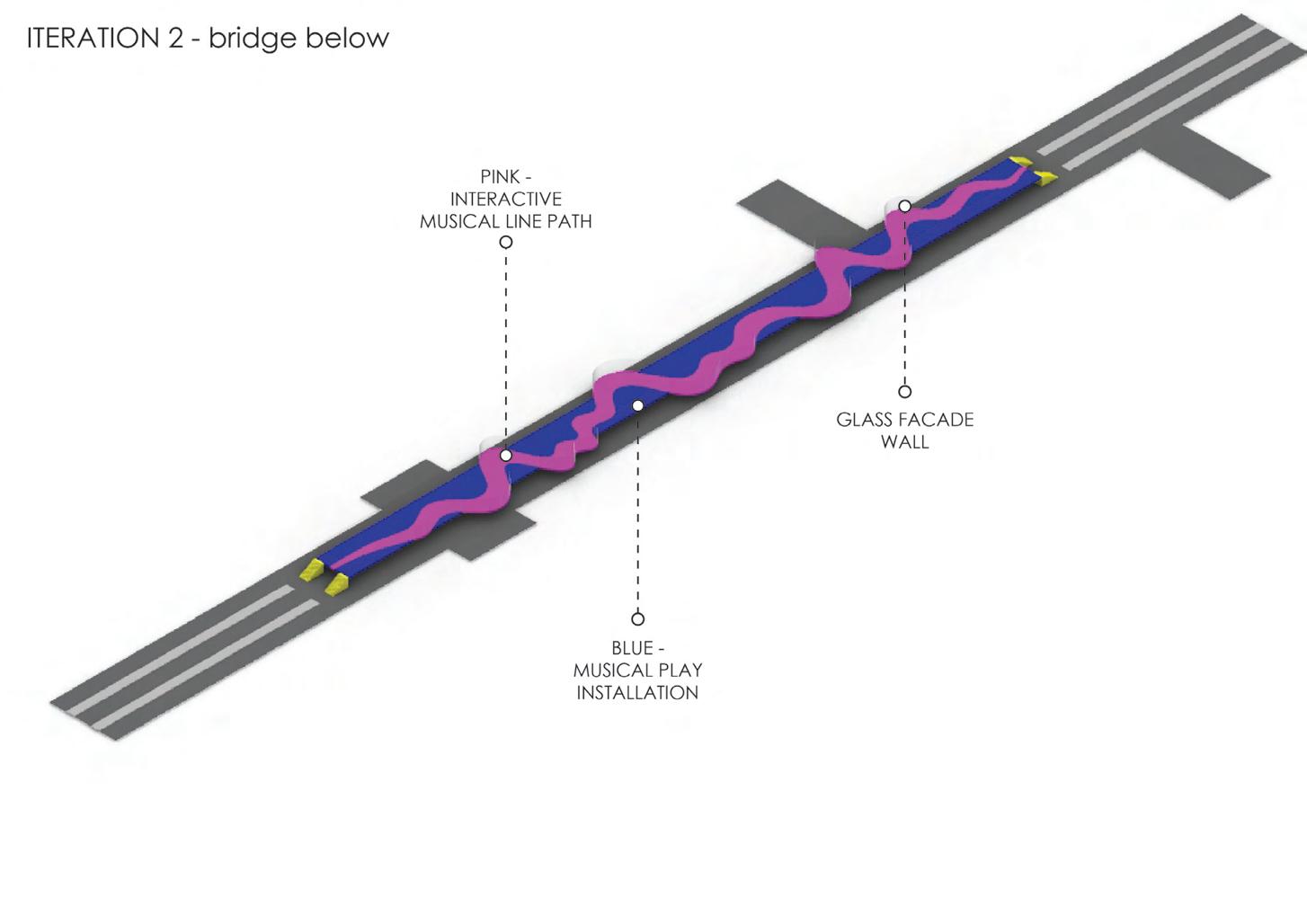
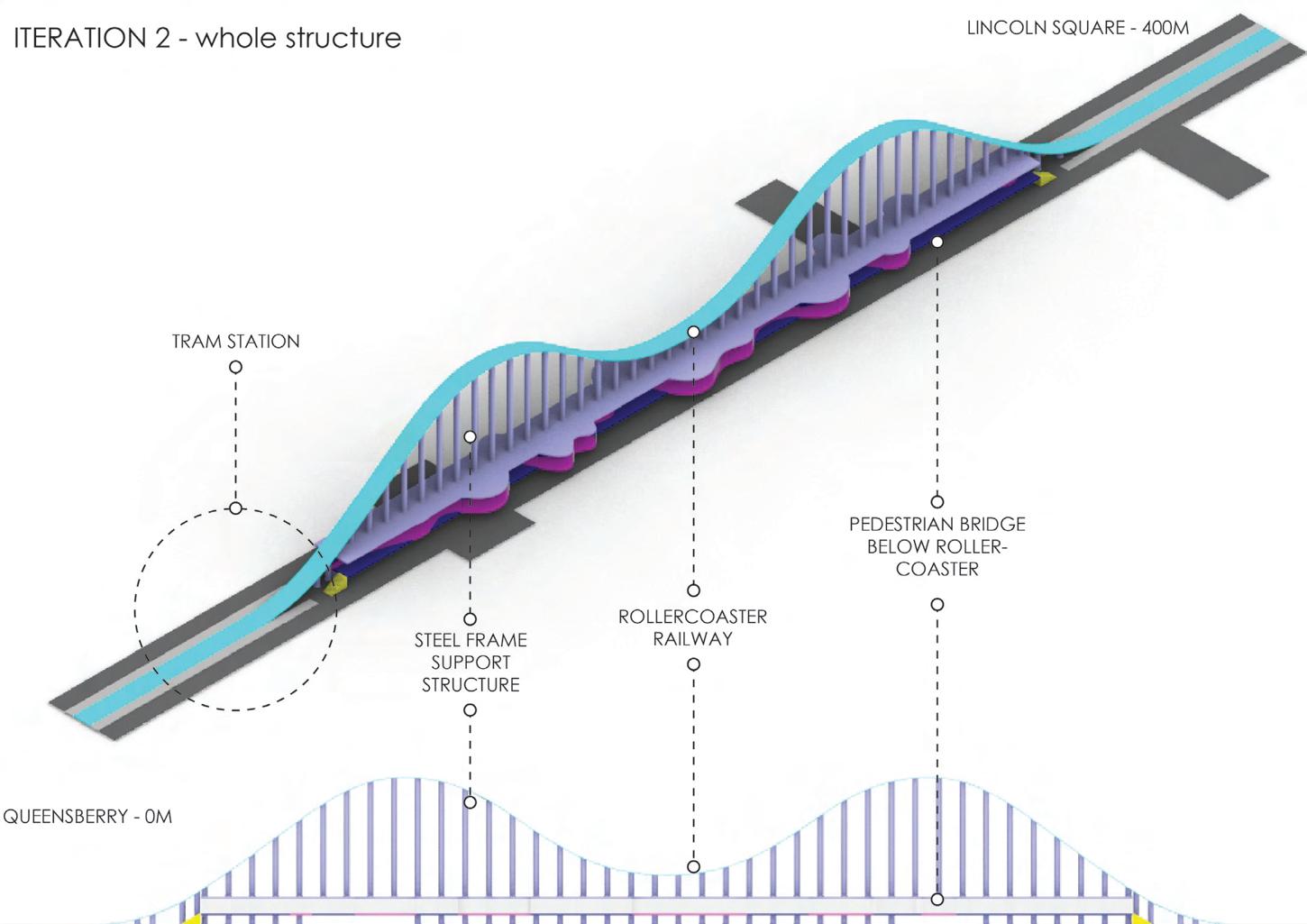
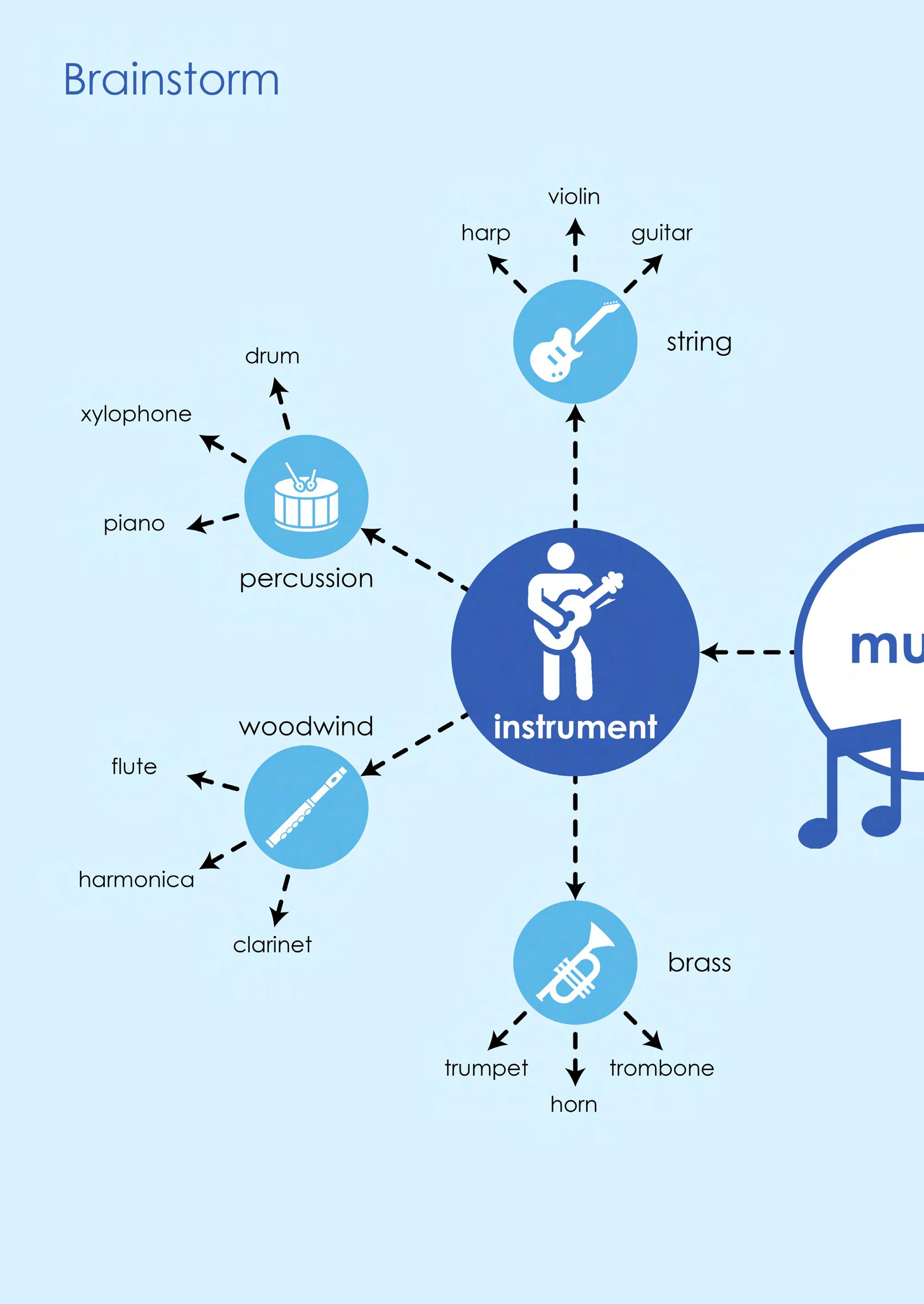
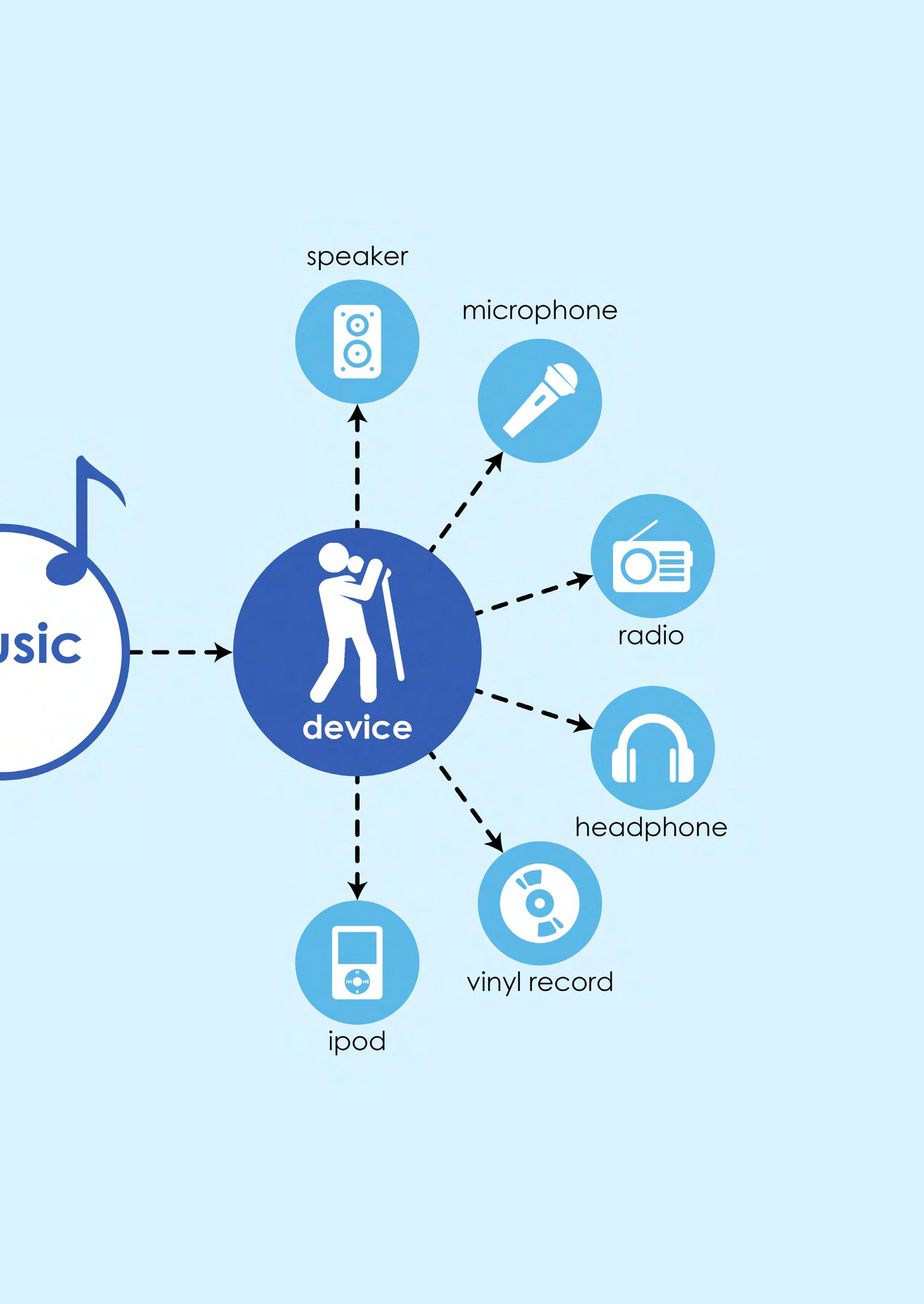
iteration 3 model development
This long intervention of mine takes a lot longer than I would have anticipated, actually much longer than any of my previous projects, which has caused a slight delay in my work progress. More so, I keep having so many more new ideas revolving around the concept of music that I can not seem to stop and finish working and adding more to it.
In the sense of a music-themed streetscape, my proposal consists of a variety of installations equipped with electronic capacity sensors where people can joyfully interact to create different kinds of electric sounds resembling different kinds of musical instruments, such as the piano runway, the xylophone labyrinth, the wind and brass garden, or even the sitting lounges within the ‘gimmick’ of DJ beatbox or karaoke stage.




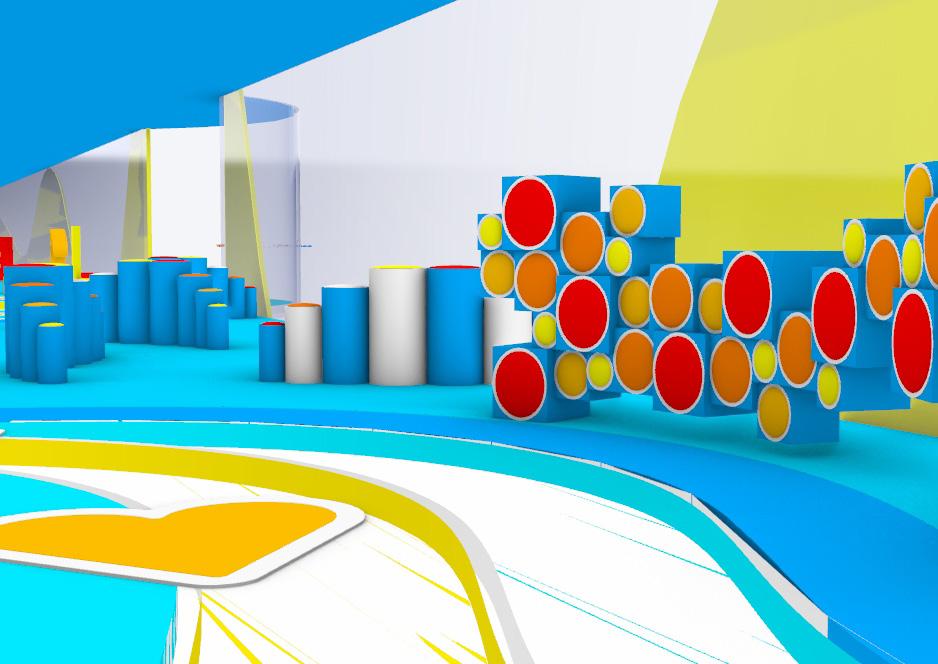
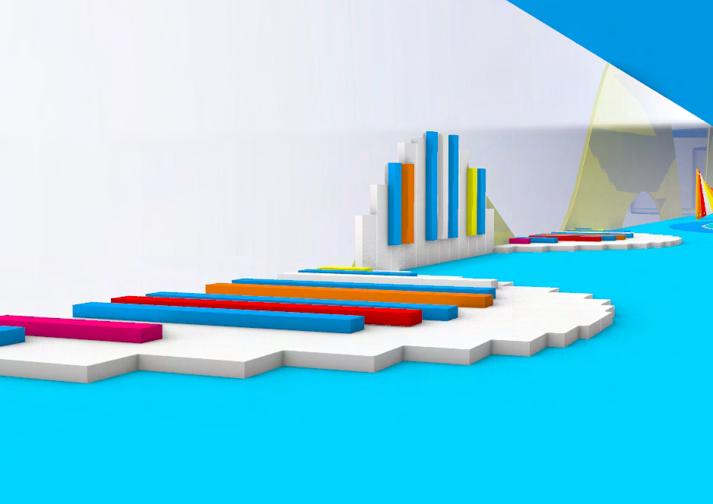


draft iteration 1 final poster

This second one here could have had more hierarchy with different sizes and layouts of the renders. Rather than having 9 rendered snapshots with equal sizes arranged in a grid on top, I could have merged and included them as callouts in the plan rather than just only using vector icon symbols in black circles. This way would better convey and enhance the experiences of the design to the viewers as it would take us through a journey along the streetscape rather than making it diagrammatic.
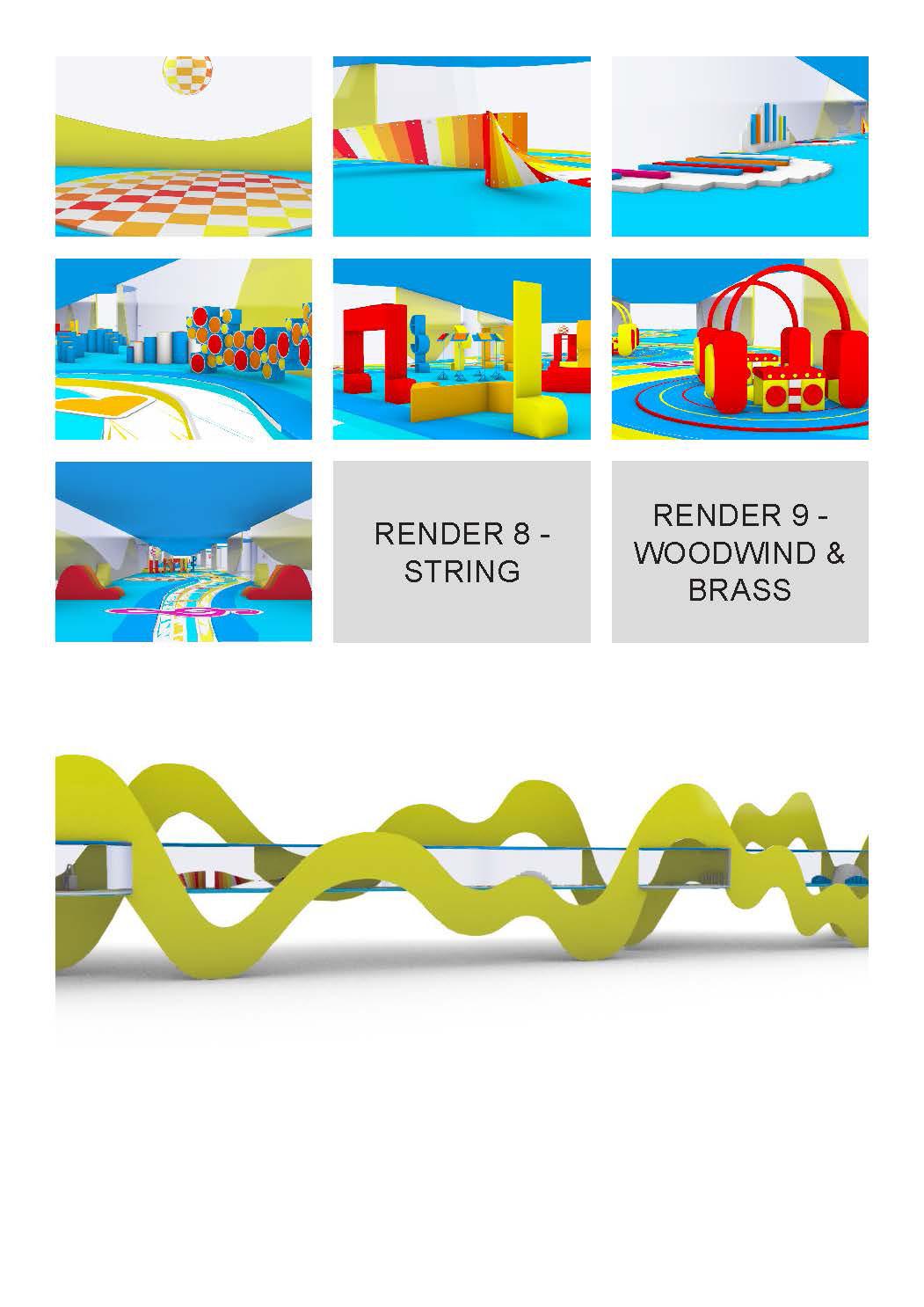
iteration 4 model development
Now my design model has mostly been finished, one of the final finishing touches that are worth concerned about is adding more human figures to convey the kind of experiences offered by my design. Also, the materiality needs to be made more clear as well. Much more detail in site context and special effects also need to be added as well.

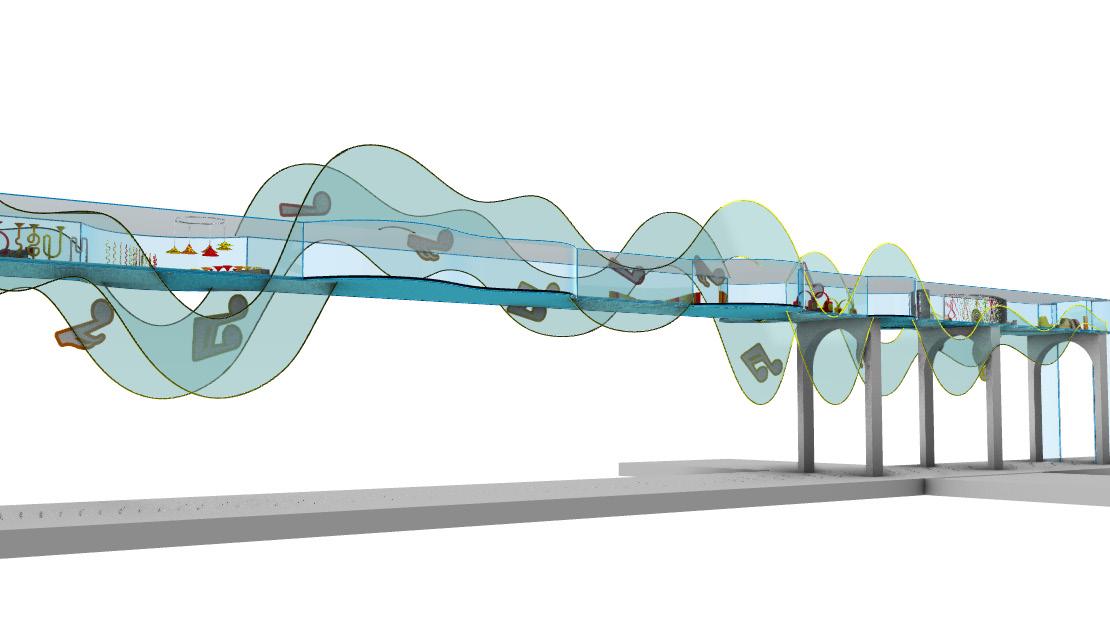

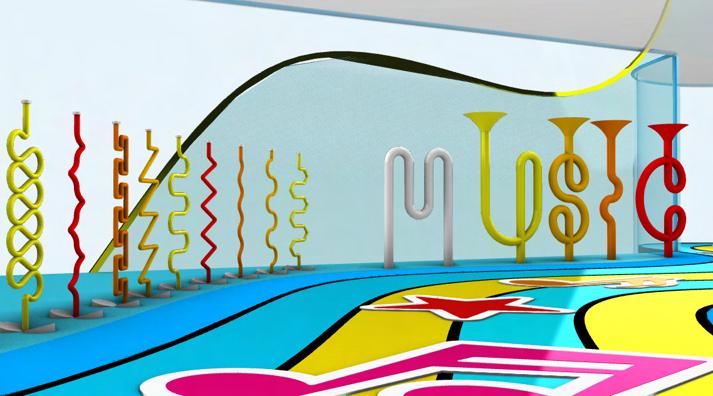
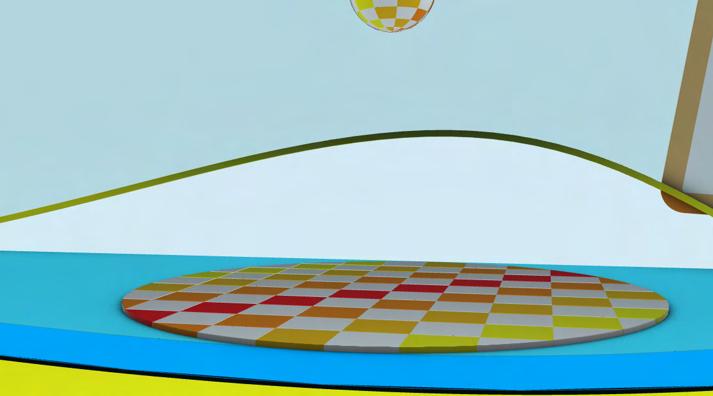




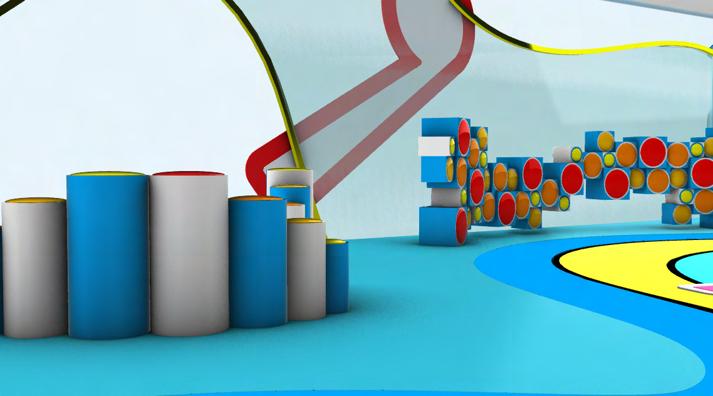
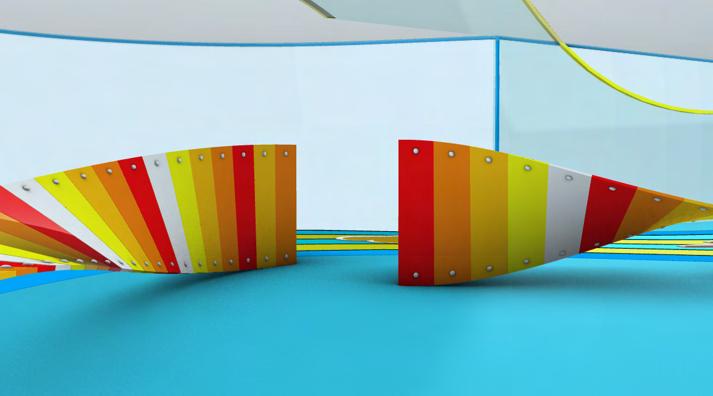

diagram
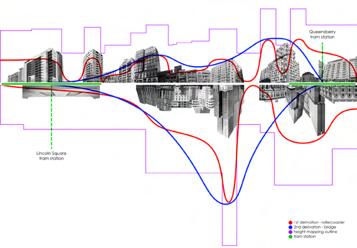
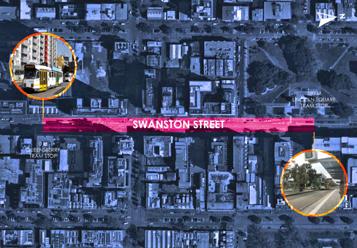
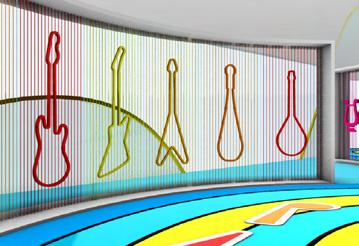





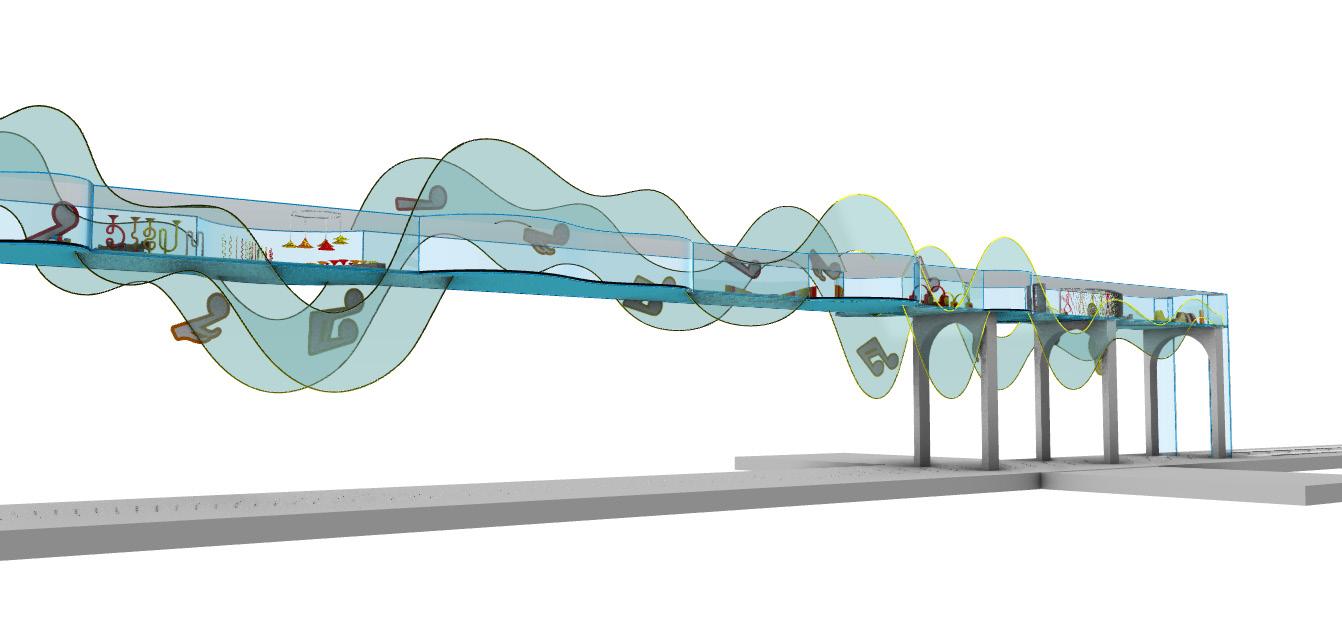
detail
draft iteration 2 final poster

Compared to the previous poster iteration, I am glad that there has been a huge progress on the amount of work done this week, though it is still unfinished.



After laying mostly everything out, I realize that the two long sections between the plan and the renders calling out each specific zones seem to not really fit as they are too big. Also, I find that they don’t really serve any more information as they look exactly the same as the long elevation on the left. So I am thinking of perhaps including zoom-in callouts of sections or maybe diagrams with annotated labels of specific components and parts included in each installation


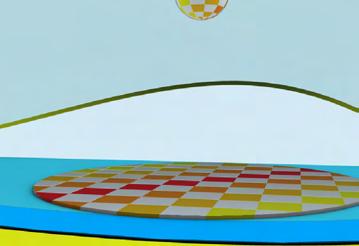
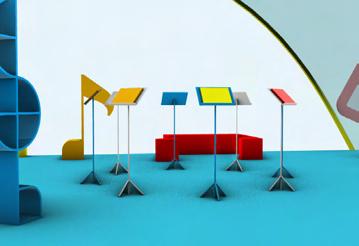
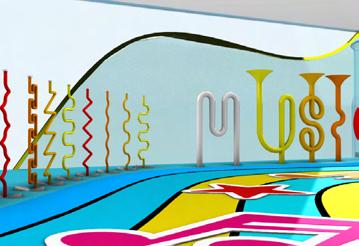

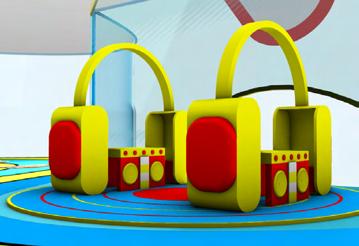






presentation drawing precedent E
100Architects: https://100architects.com/project/music_story/ Spix Academy: https://www.facebook.com/sphotoshoparchitecture
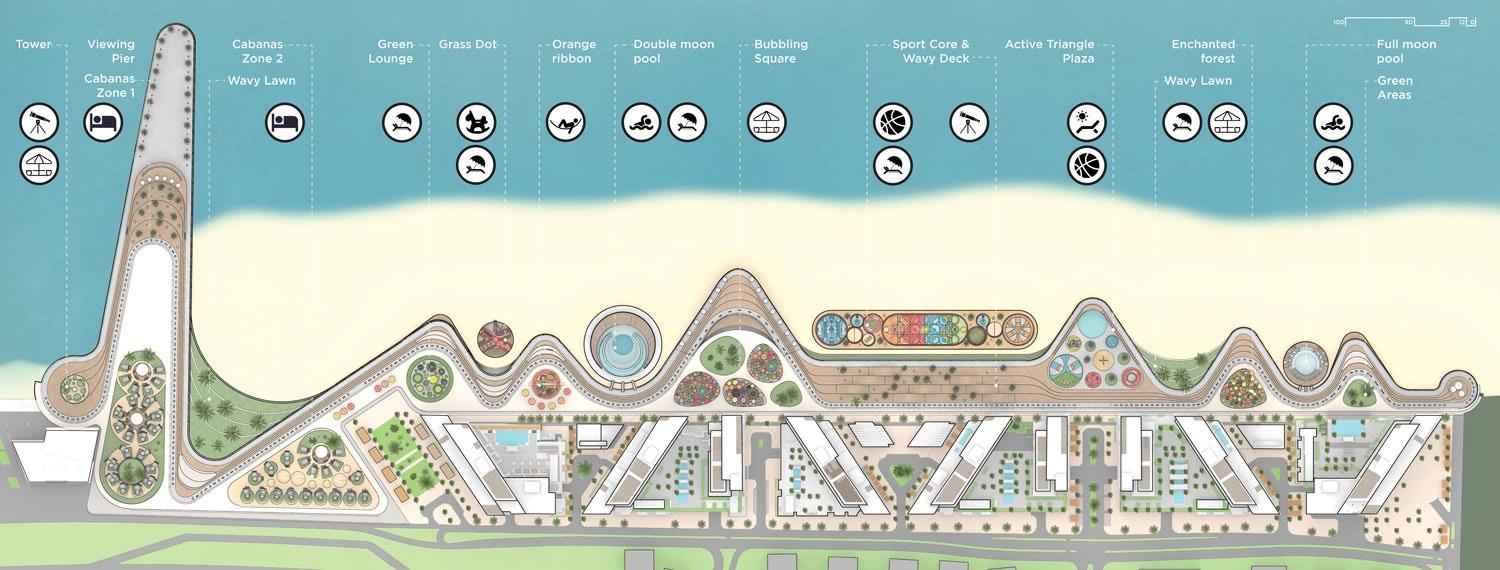

City Health Center axonometric diagram, Thien Truong, Spix Academy

International Primary School Ocean axonometric, Huy Duong, Spix Academy

presentation drawings
The existing grey asphalt of the street gives way to compliment the bold and bright colors of the intervention, turning the streetscape into an eyecatching elevated urban landmark.

As a background color, a soothing, cerulean blue defines the base as negative spaces filled with pockets of playable musical instruments for pedestrians to slow down and linger by and interact.
Contrasting the cool and calmness of the straight blue lane comes an electric musical path of intertwining bright yellow and aqua, which serves as platforms for leisure and social interactions, activating the site into a playful plaza that encourages pedestrians to wind around in freedom and versatility.



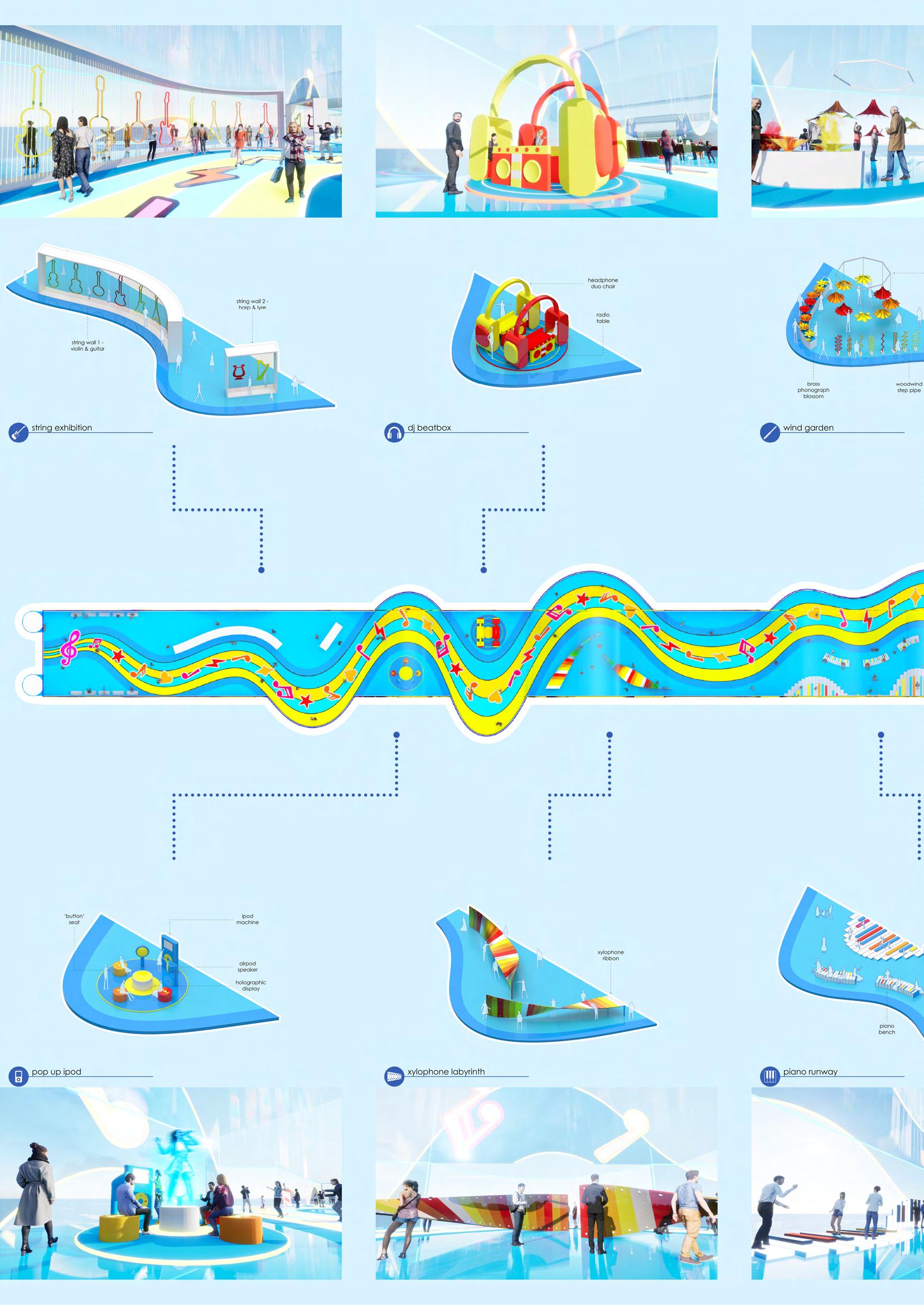
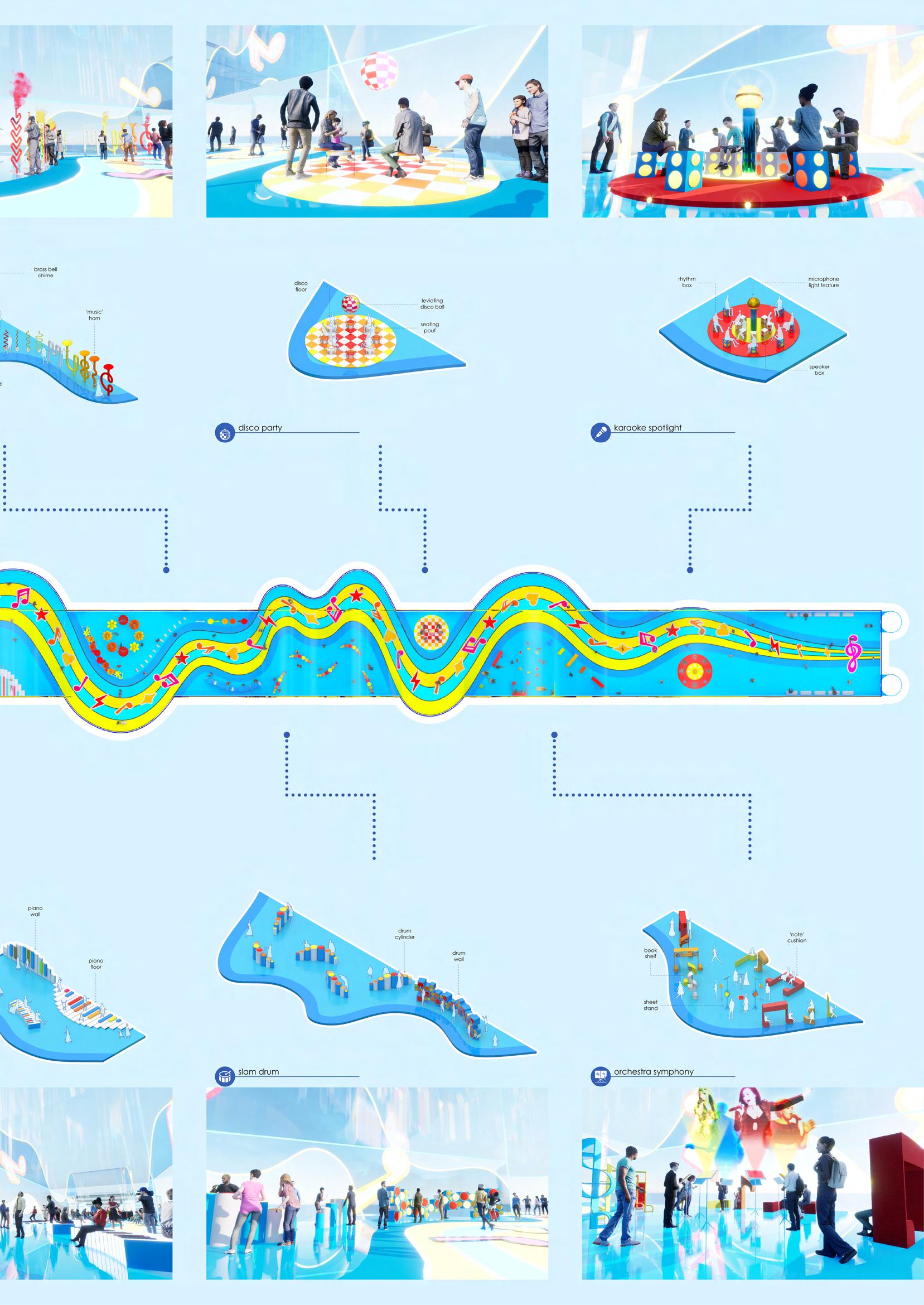
precedent F music installations

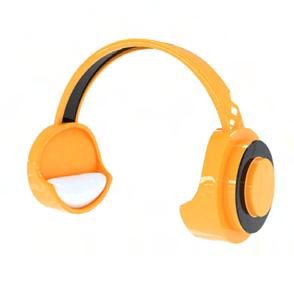
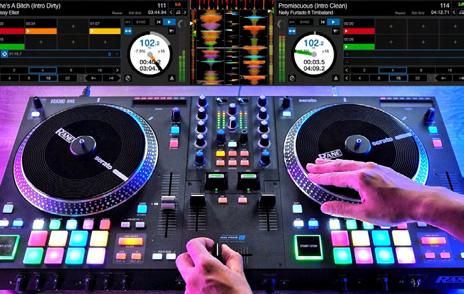

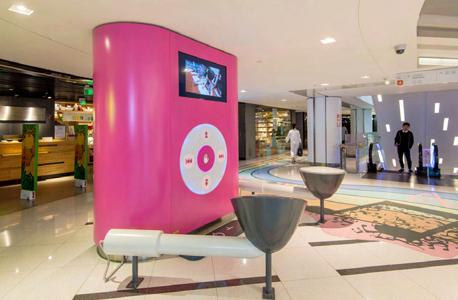
“The Playable City movement can be seen as a creative response to the coldness and anonymity of the urban environment, which technology threatens to make even worse.”


(Baggini 2014, cited in The Guardian)
Here is Here, & Everywhere, Tobias Rehberger
Party Room, Homescapes
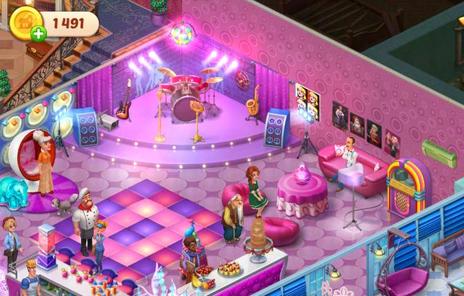
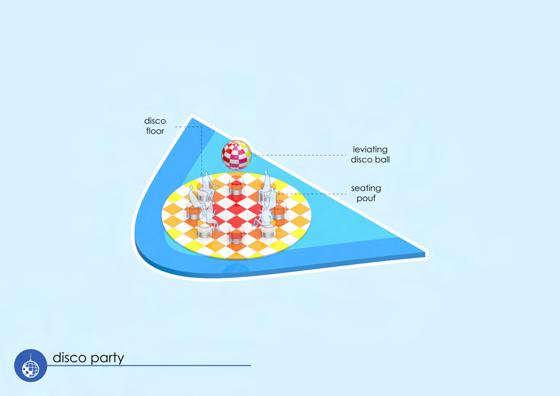
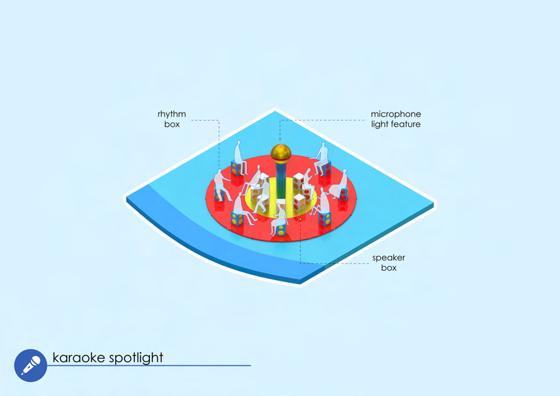

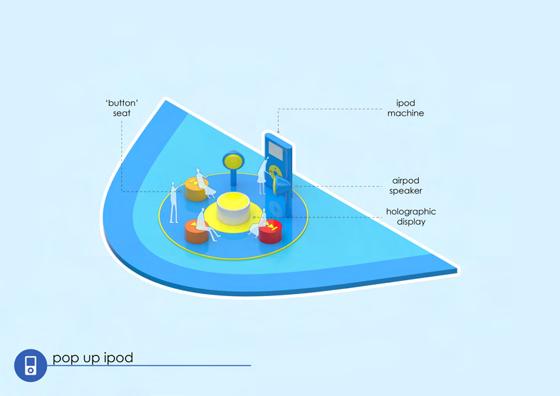




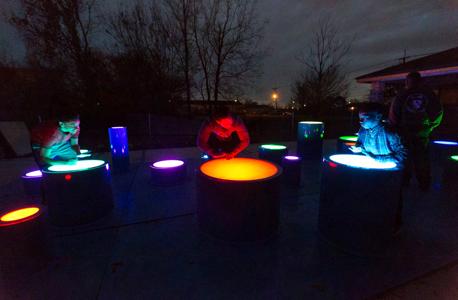

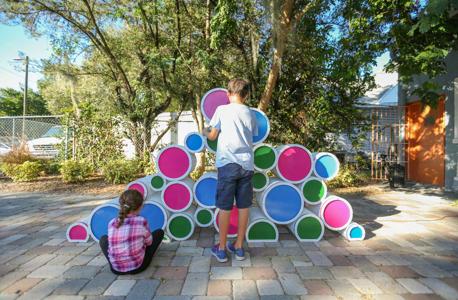


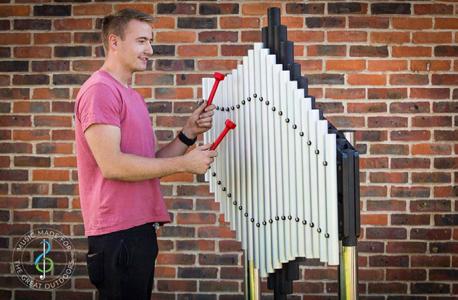


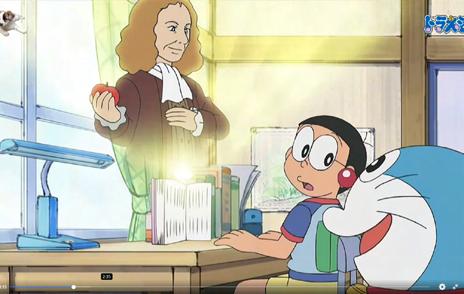


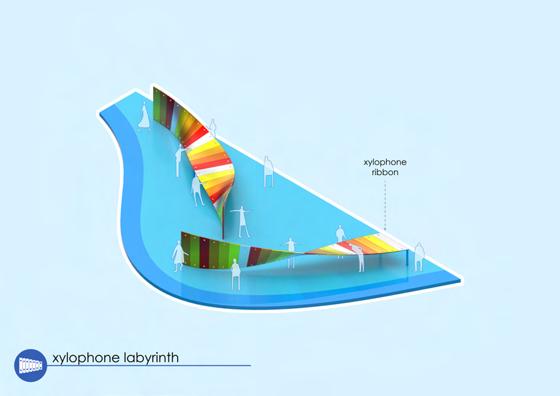

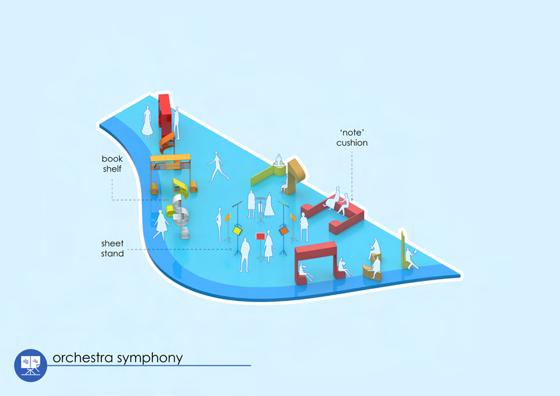


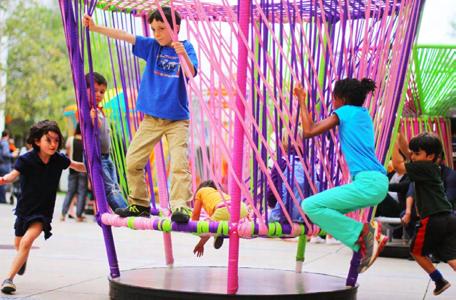

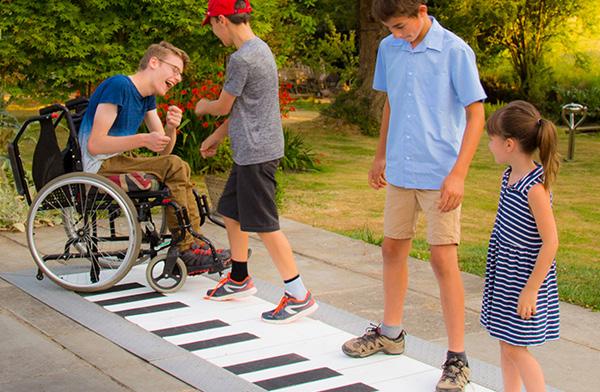
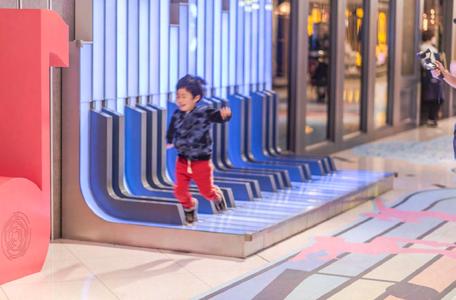


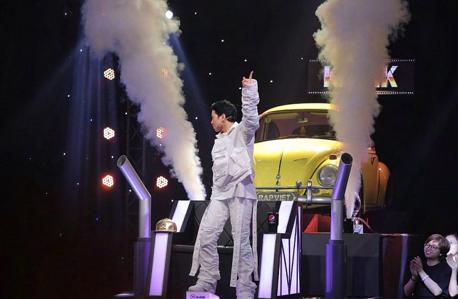



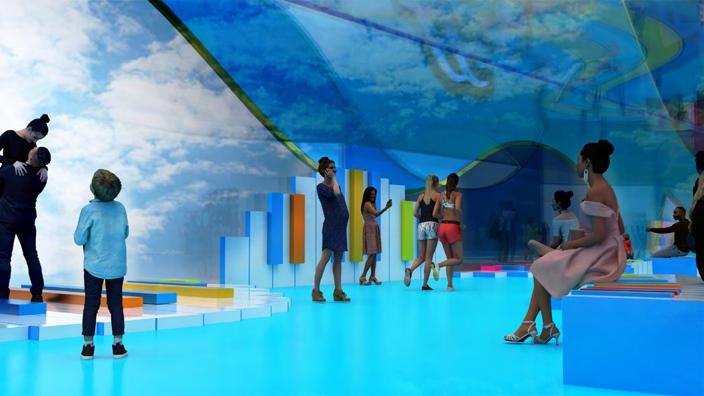
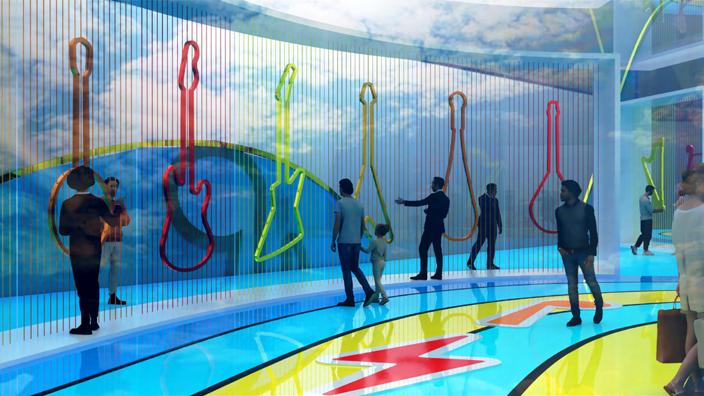


final iteration 1
Given this is my first time using V-Ray to make renders, these did not come out the way I hope they would. The idea is these installations are supposed to have capacity sensors that glow up once they sense the interaction from the passerby.

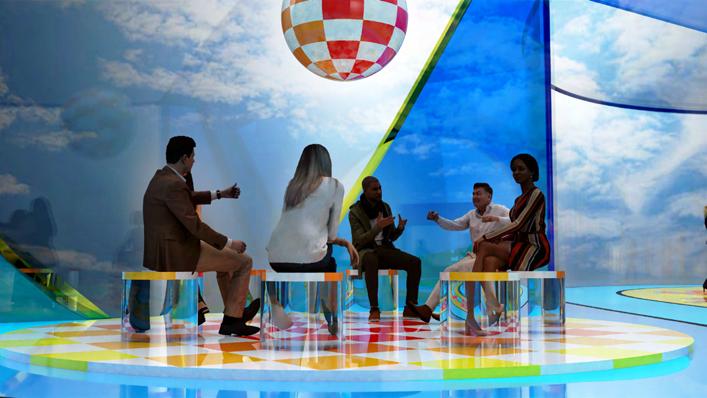
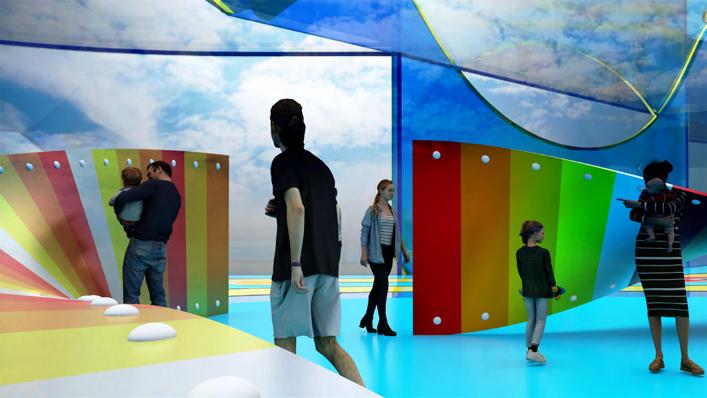

However, for some reason, I find it quite hard manipulating glow effects on each render in Photoshop, as somehow they appear very weird and fake. Also, the sky in the background behind the glass does not look natural either. The only thing that I am content about is the glossy and reflective materiality coming through each render.
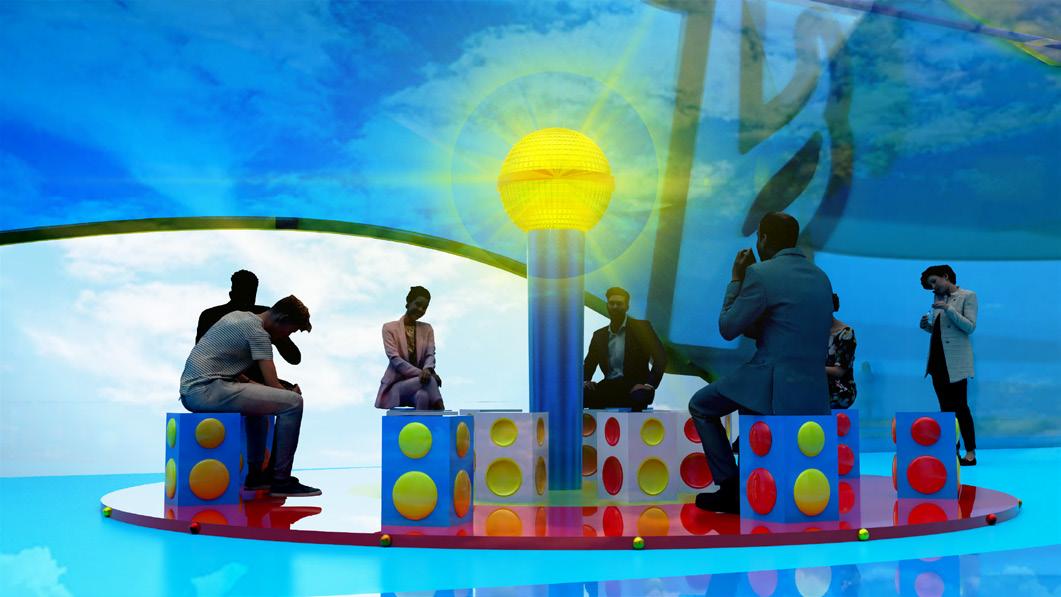



With time running out, trying to glow up every single render would take too much time to refine, so these renders are done in quite an urgent and sloppy manner. Still, I might come up and resort to using a different solution that is more effective in time and effort after the presentation.
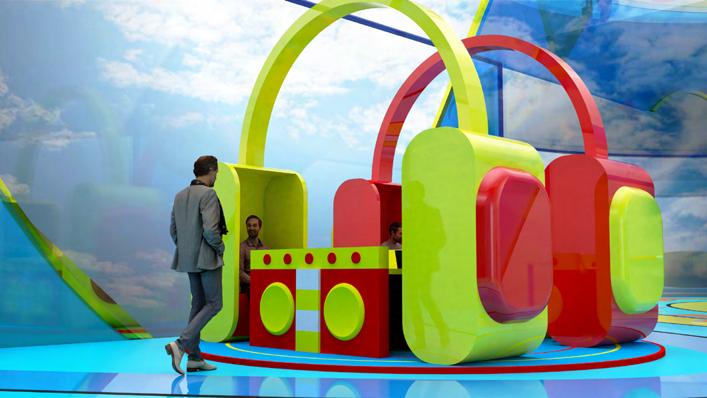
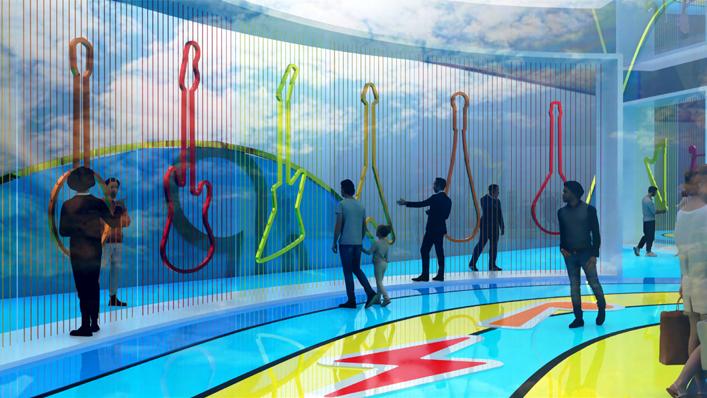


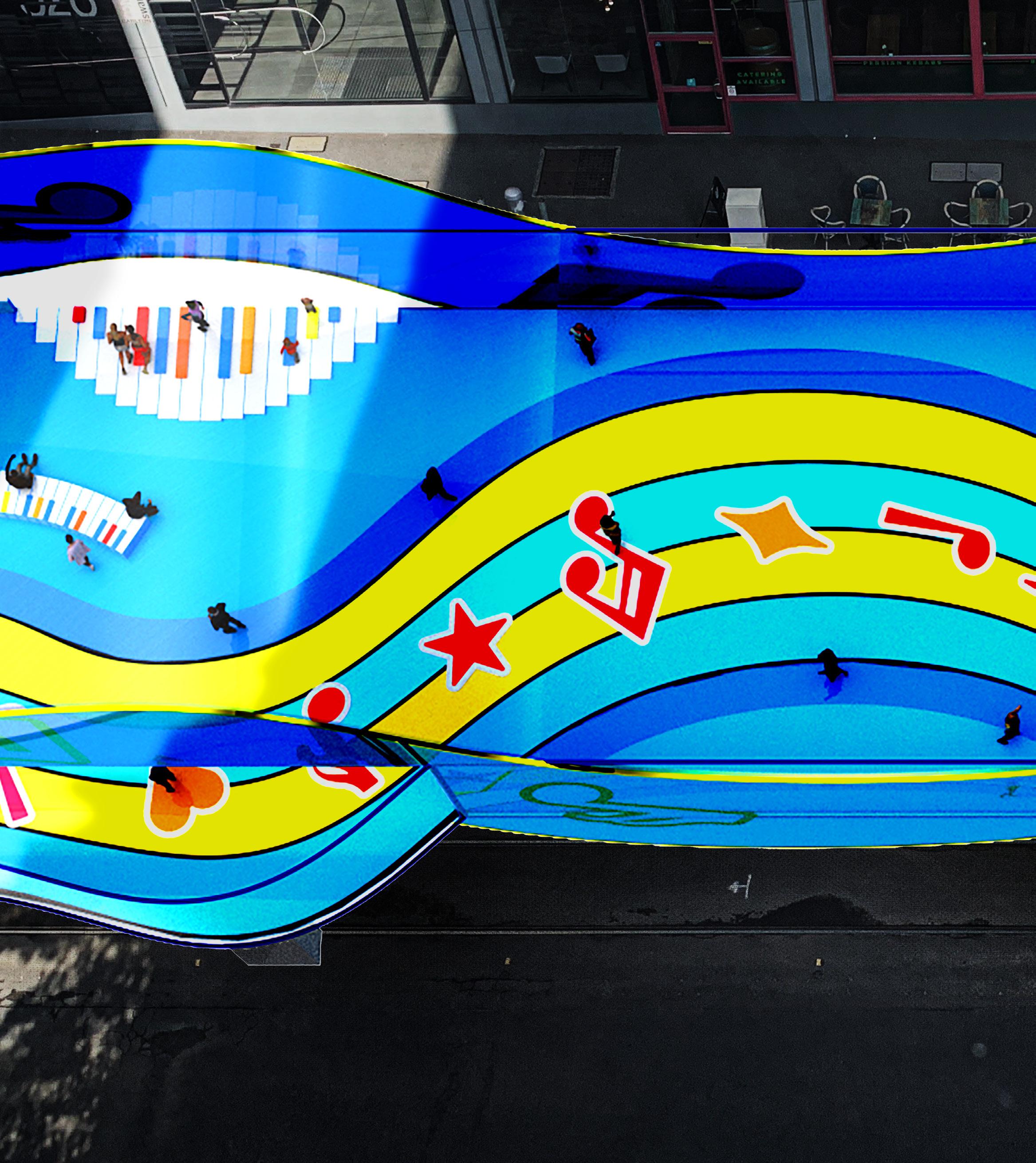


(Sicart 2014, 1)

“To play is to be in the world. Playing is a form of understanding what surrounds us and who we are, and a way of engaging with others. Play is a mode of being human.”
final iteration 1 final poster
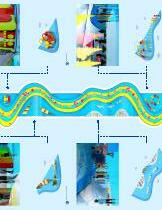


Despite the incomplete state of my work, the presentation actually went quite well. The only thing I need to work on once I revisit my poster is to revert the layout by bringing the top part with more detailed information to the bottom, especially bringing the written project statement lower for easier eye-level reading, and vice versa for the renders that can be grasped in an overview.




final iteration 2 render


To make my way refining the renders to better quality in a shorter time and more effective, I have come to ask a friendly classmate of mine for help working with TwinMotion as it was recommended to be much easier and more efficient than V-Ray (V-Ray takes a lot longer time to render than Twin Motion, but both are helpful depending on specific uses and purposes that I am looking for).
Hence, I spent an entire whole day just to familiarize myself with Twin Motion. To my surprise, the renders come out amazing, though they could have been improved more, the quality is much better than those exported from V-Ray for the final review.
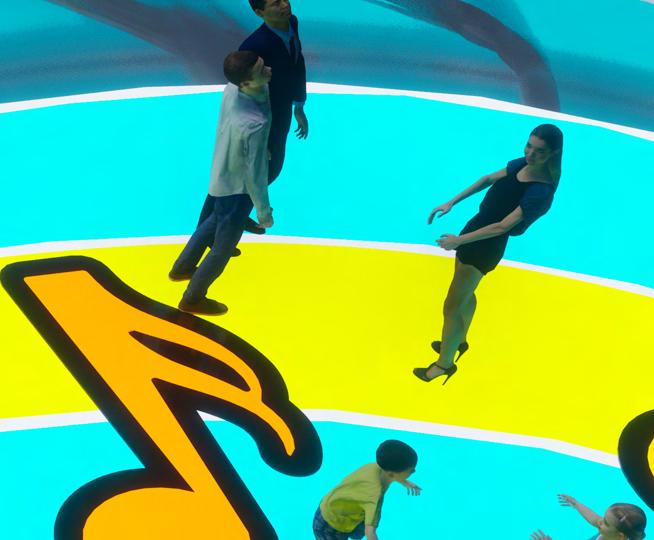

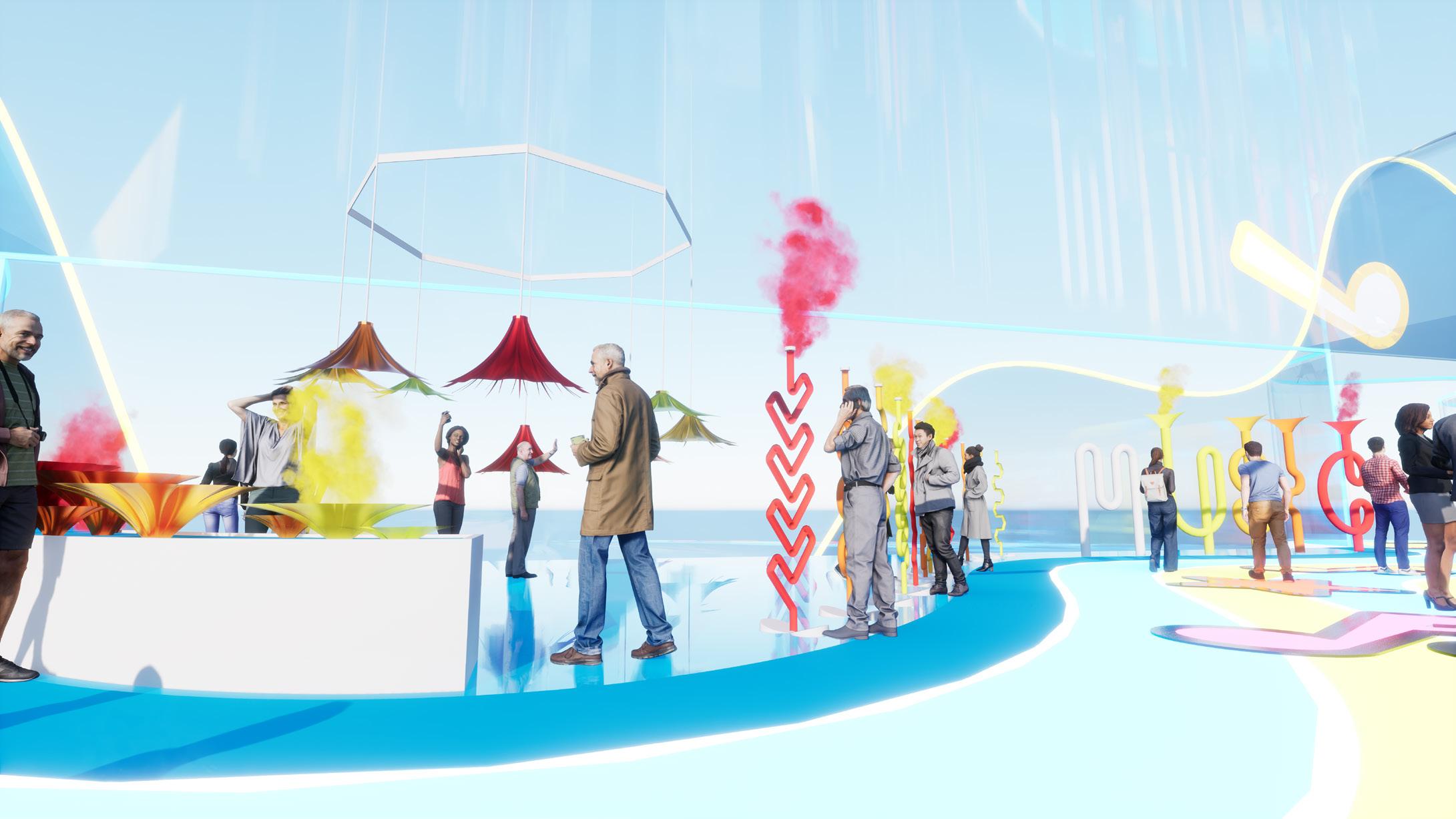
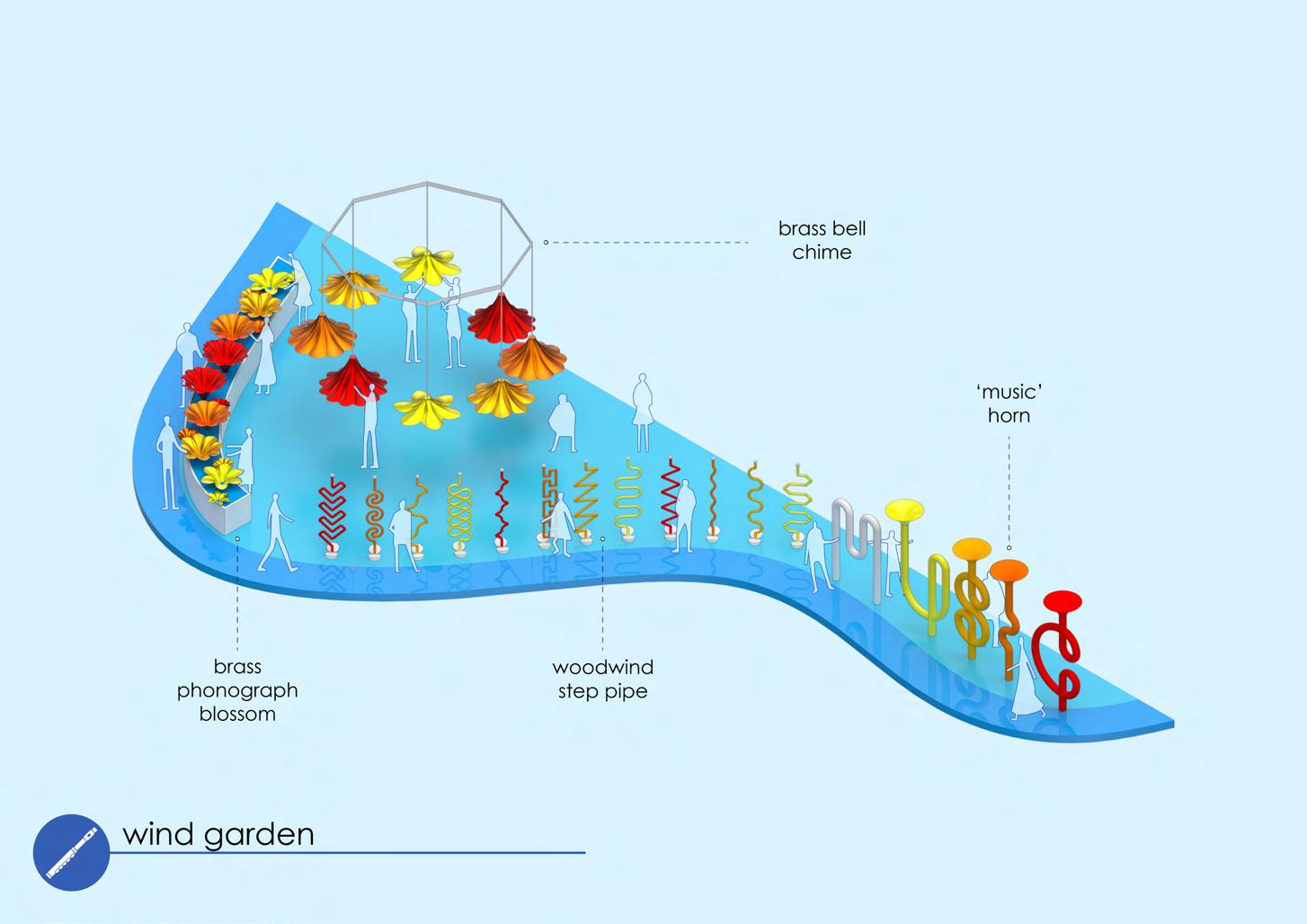


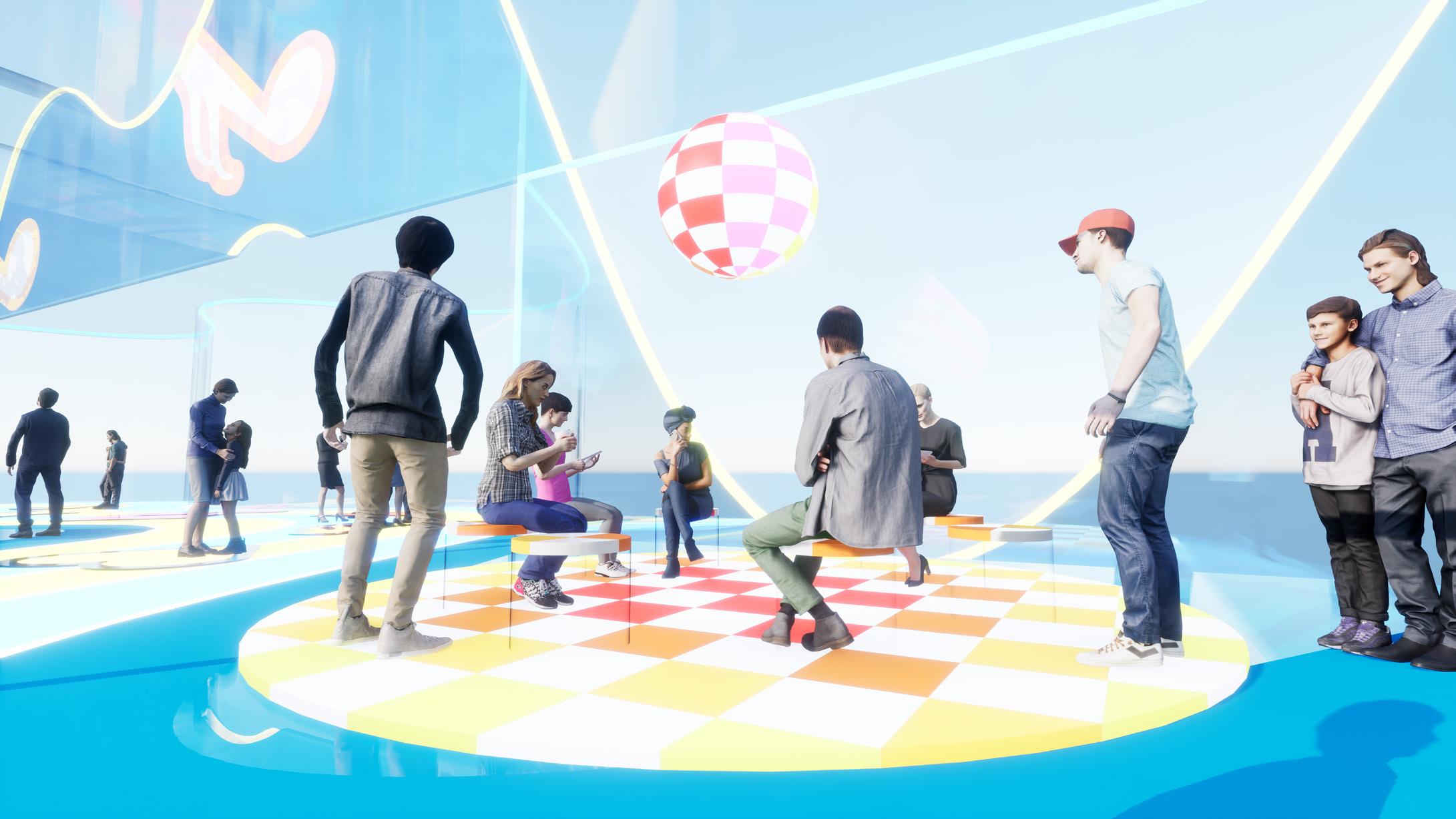
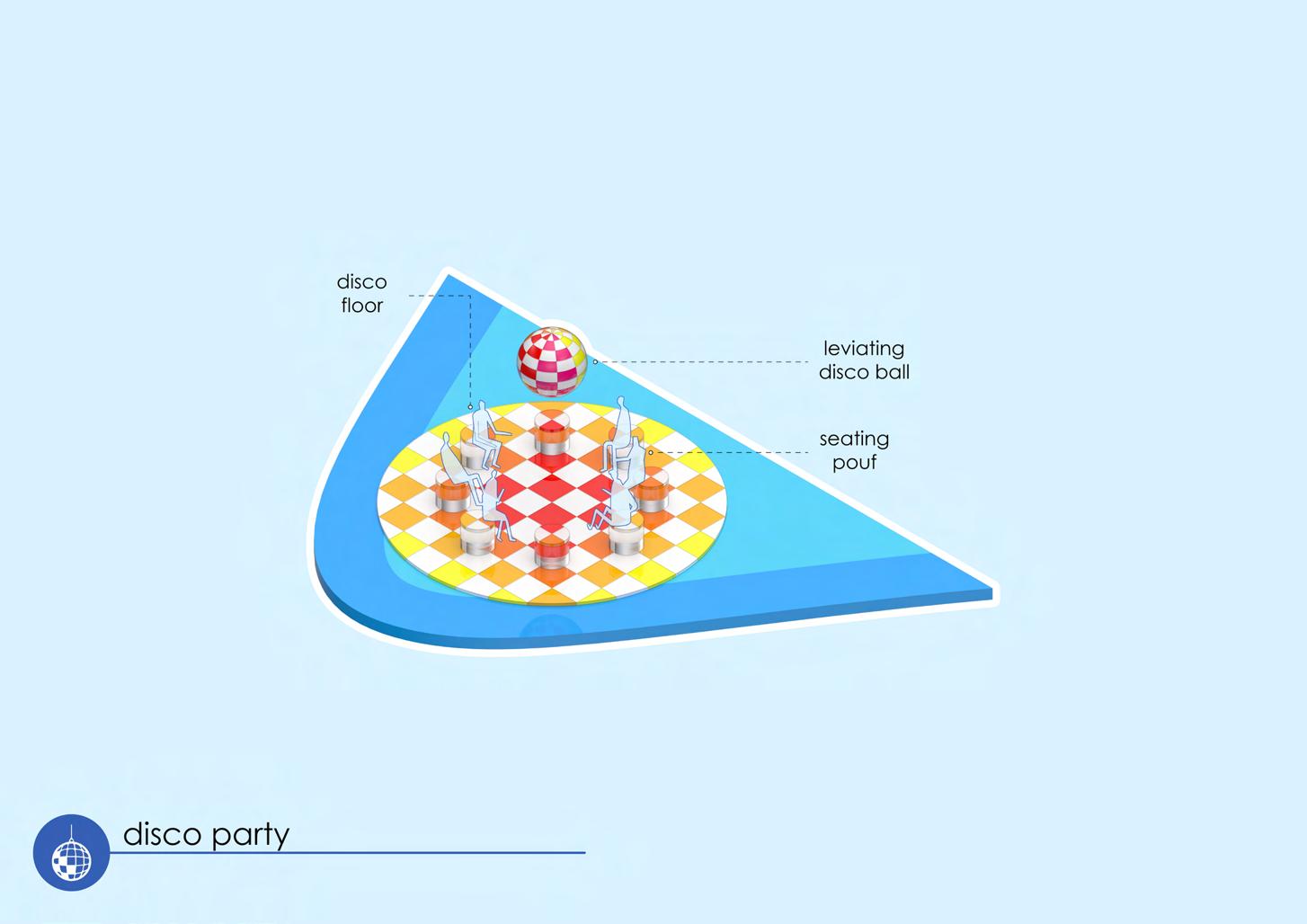

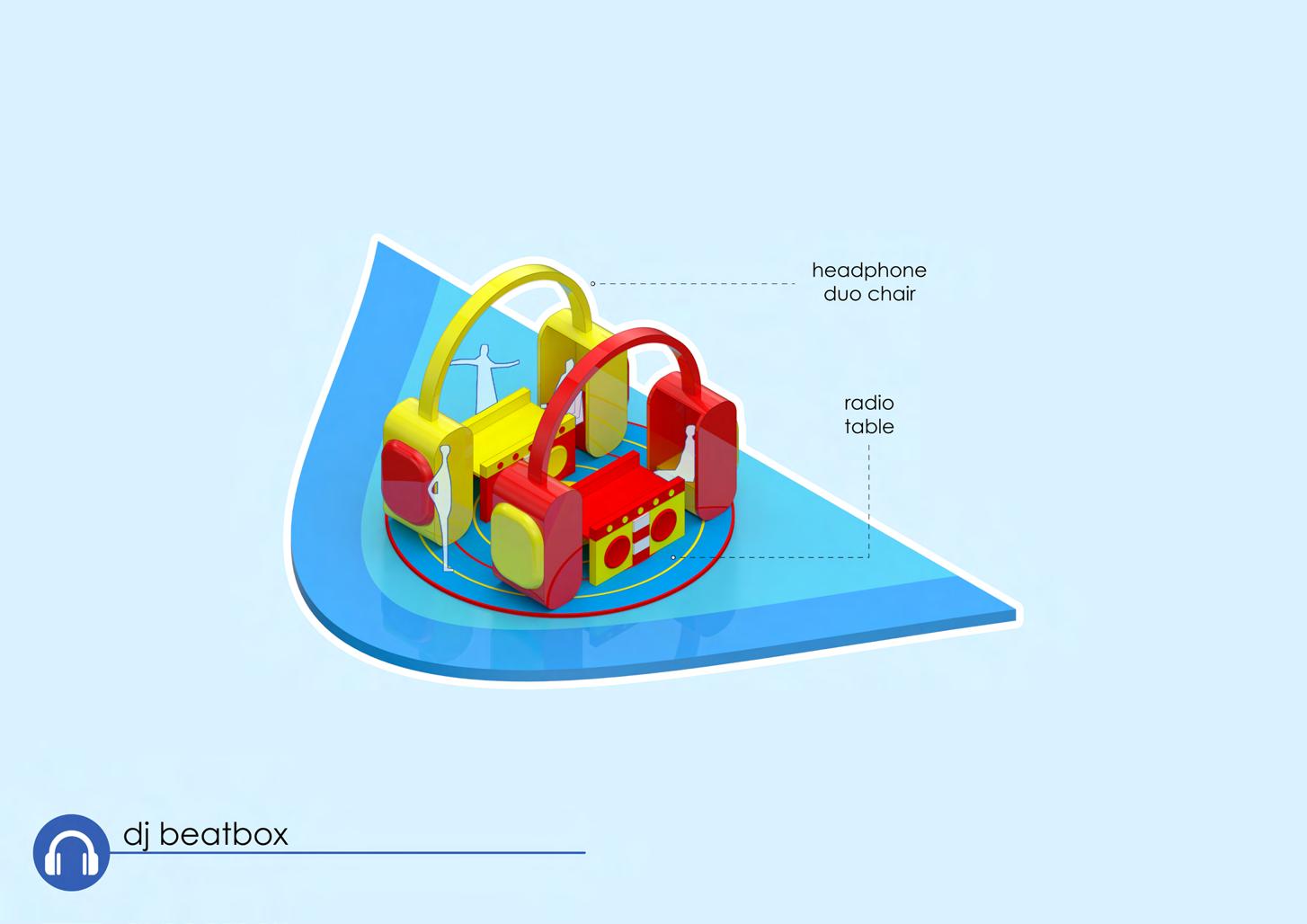

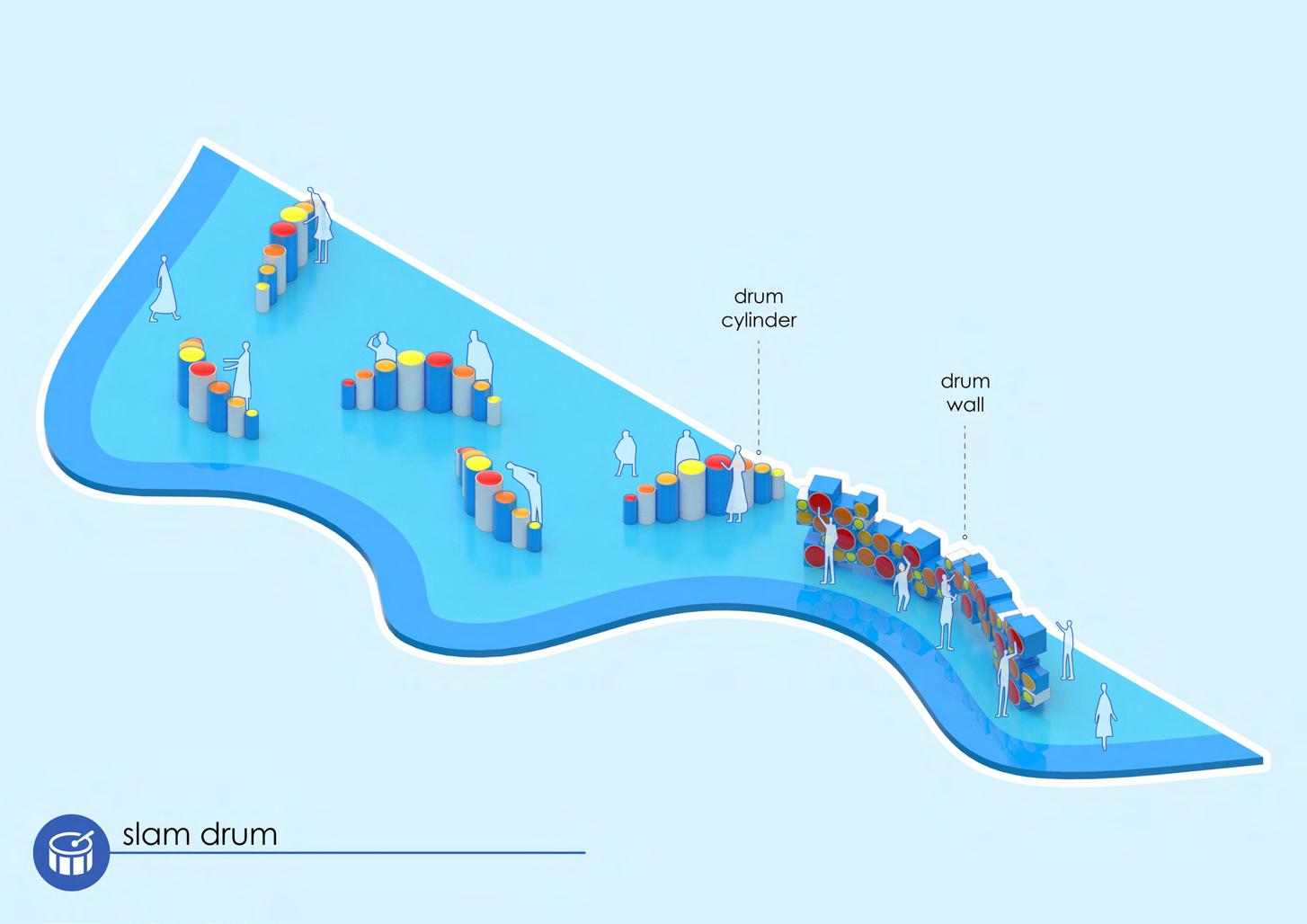
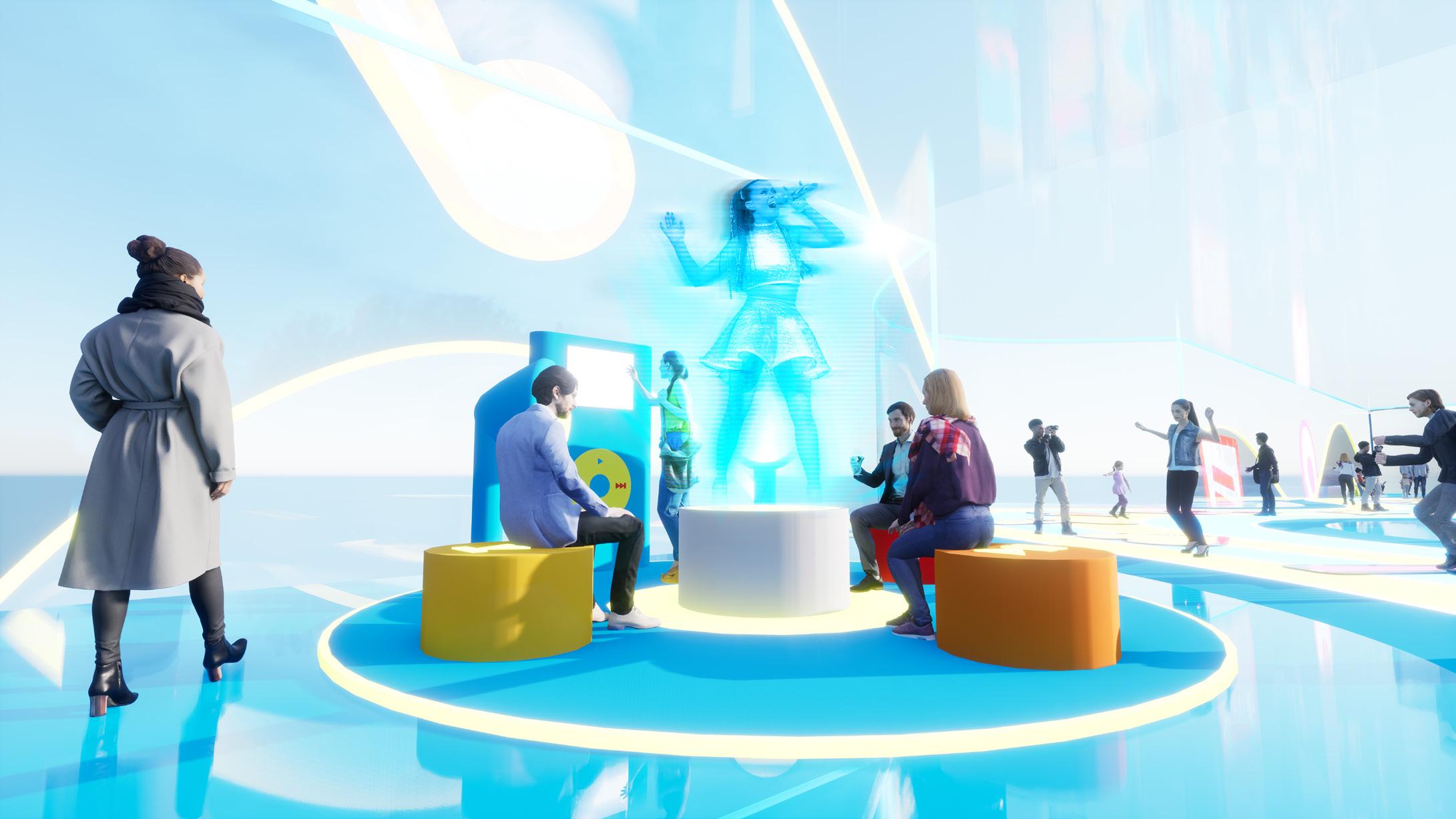
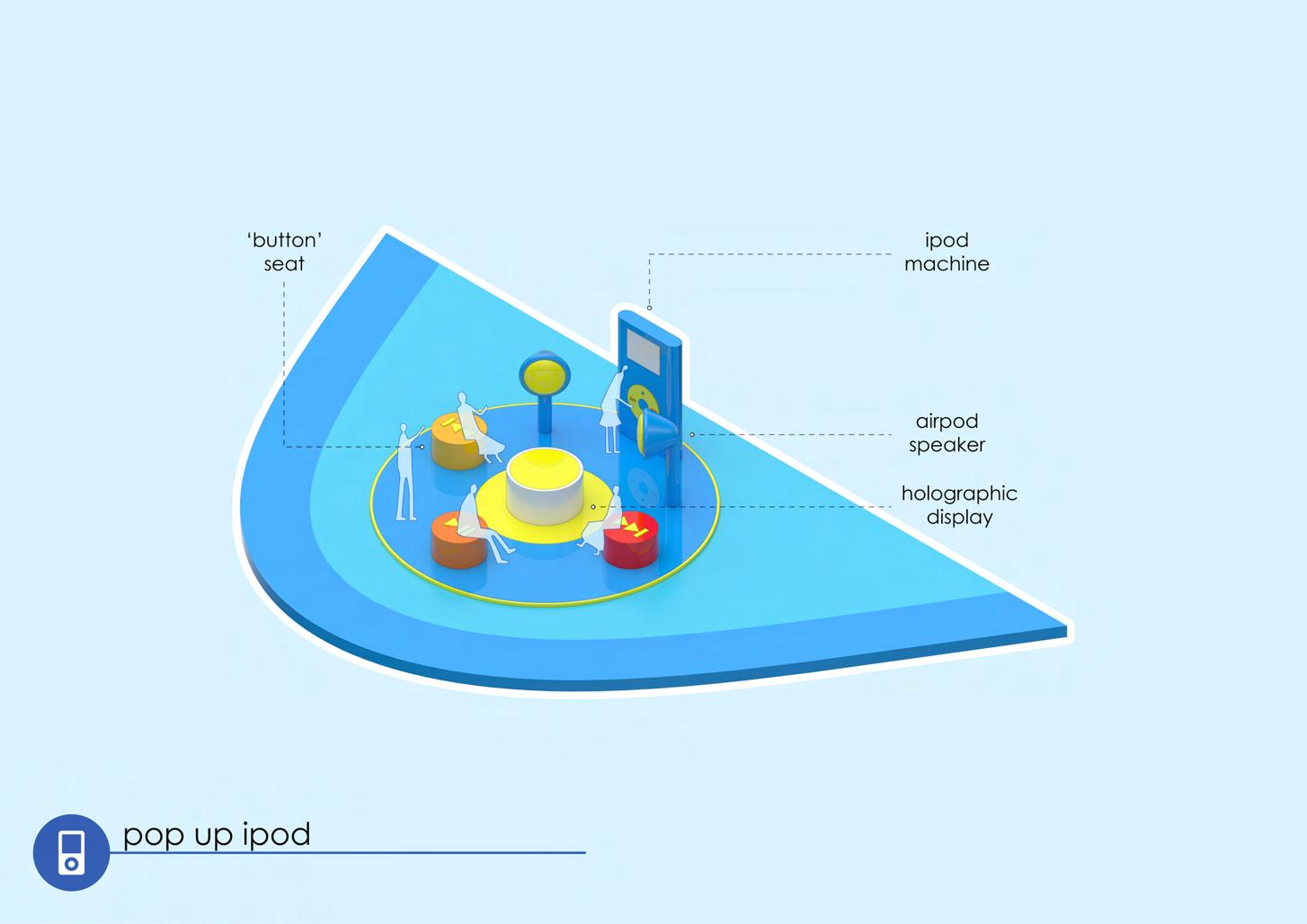
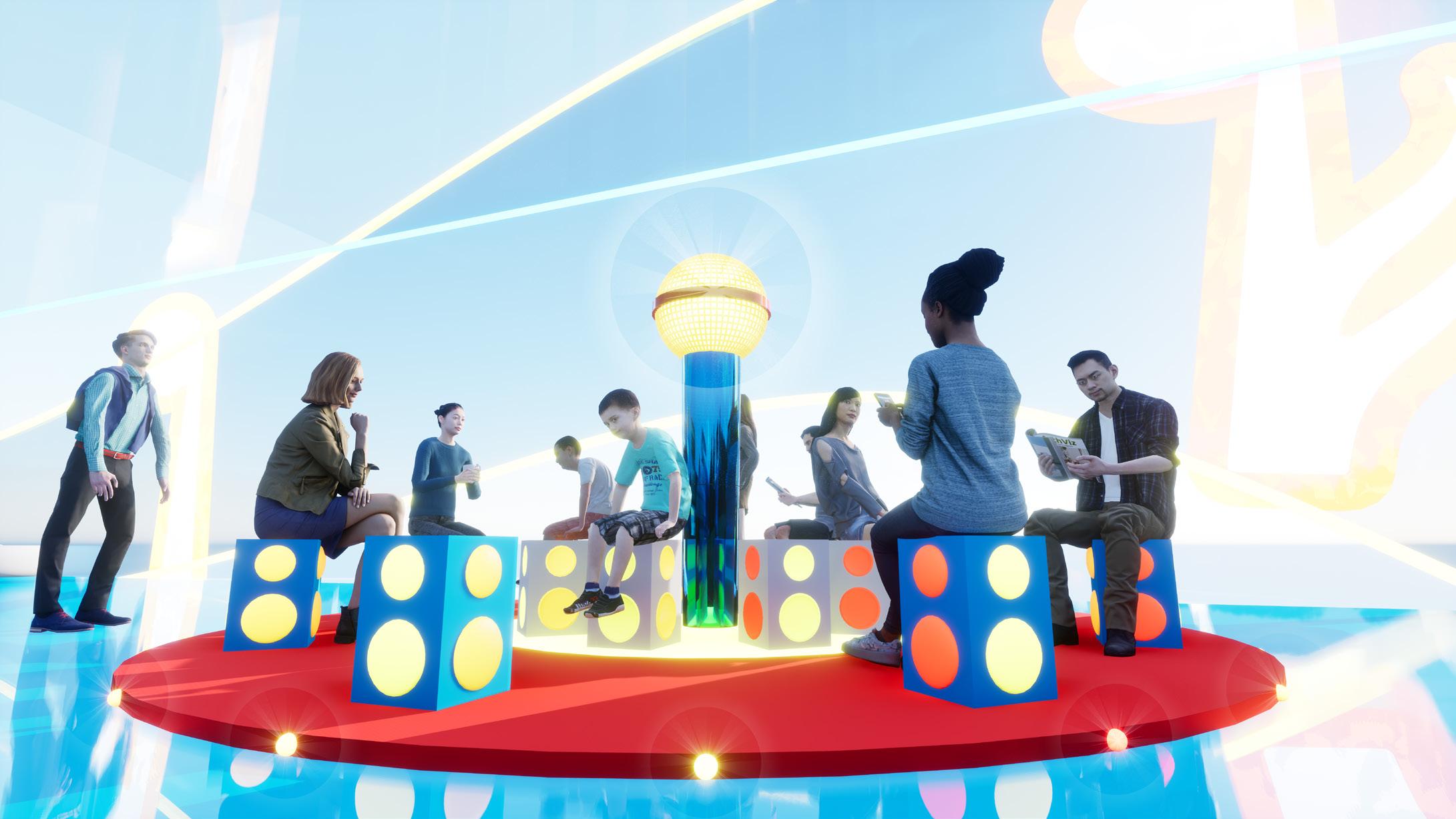


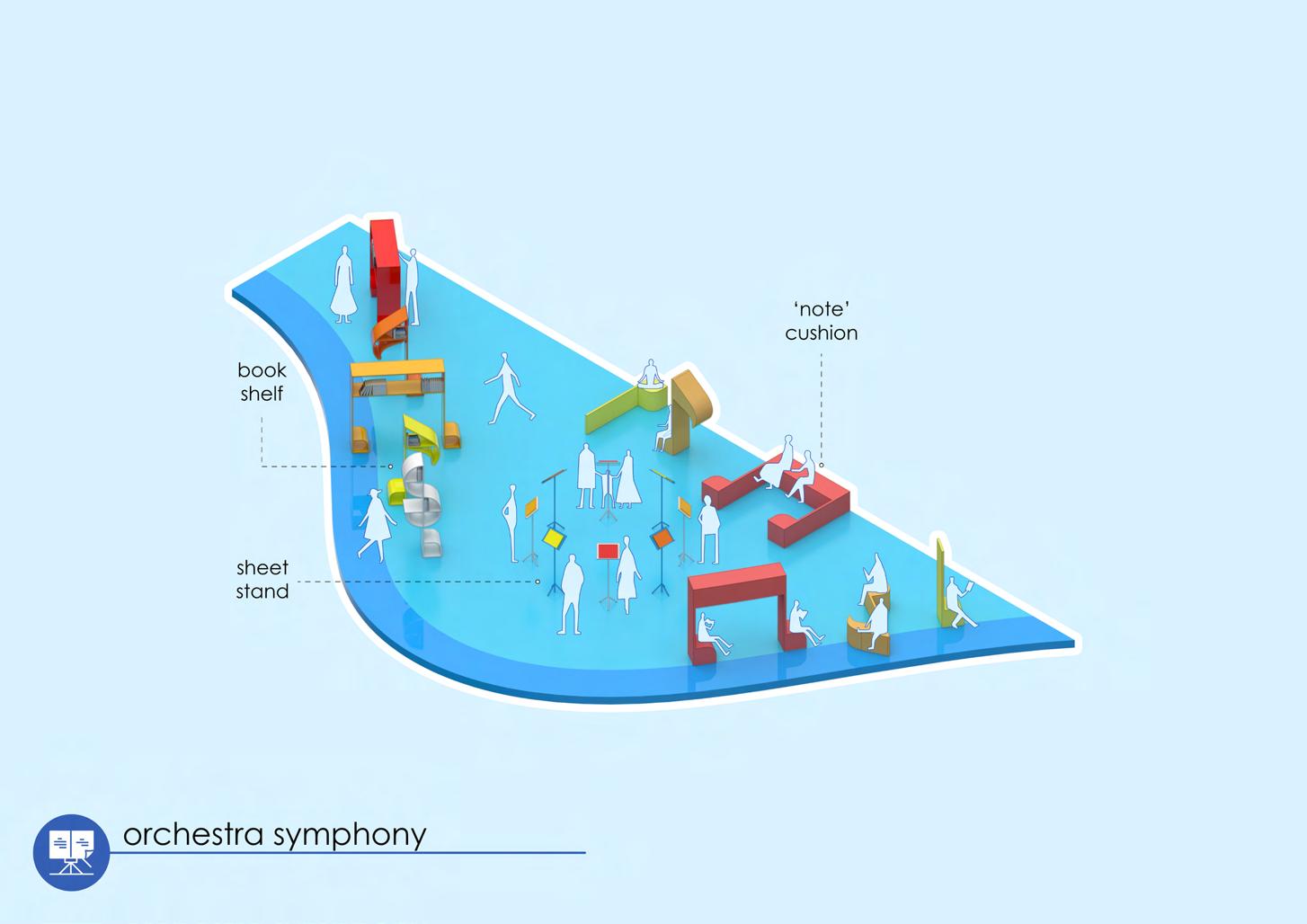


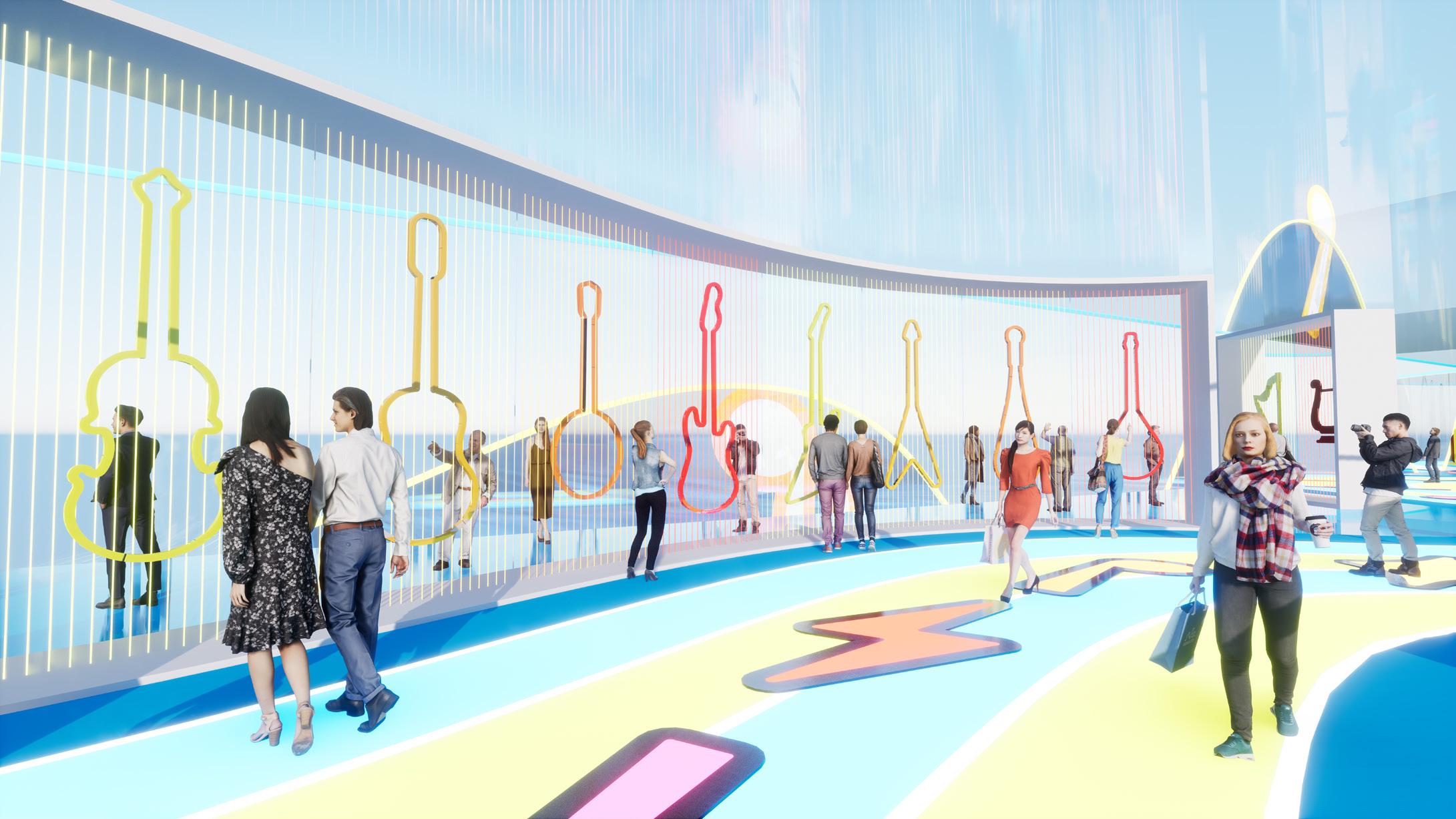
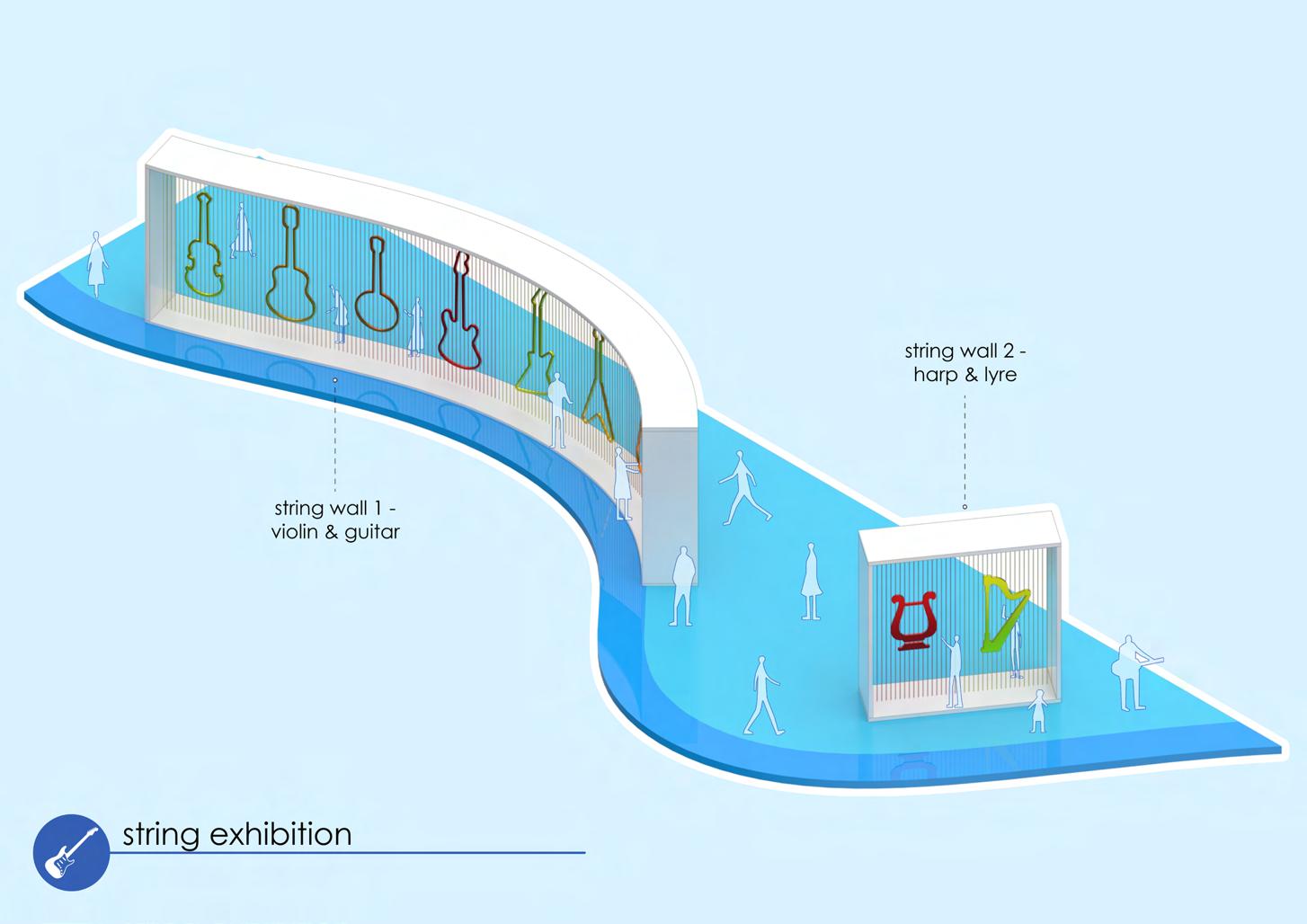
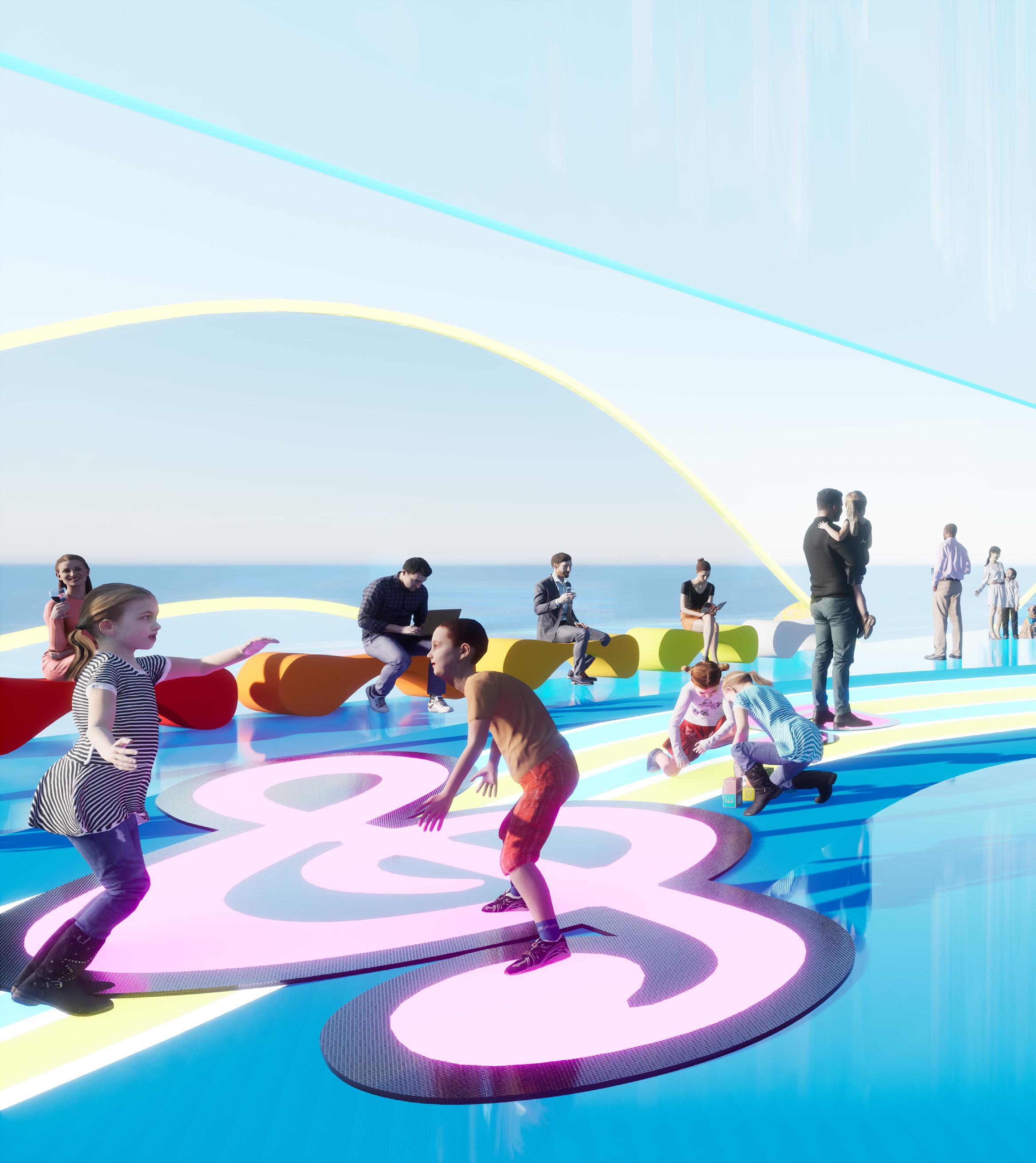





One thing I was unable to do for the presentation is an exploded axonometric detail of the musical interactive path, a major component of my design. Similar to the precedents D2 (page 45), each musical note will light up every time it senses human footstep above as it is equipped with electromagnetic sensor mesh underneath.


final iteration 2 final poster

“Play is not only for kids; we all want to play in the city. The city is our playground.”
(Marcial Jesus, 100architects, 2021, 250 Things a Landscape Architect Should Know)
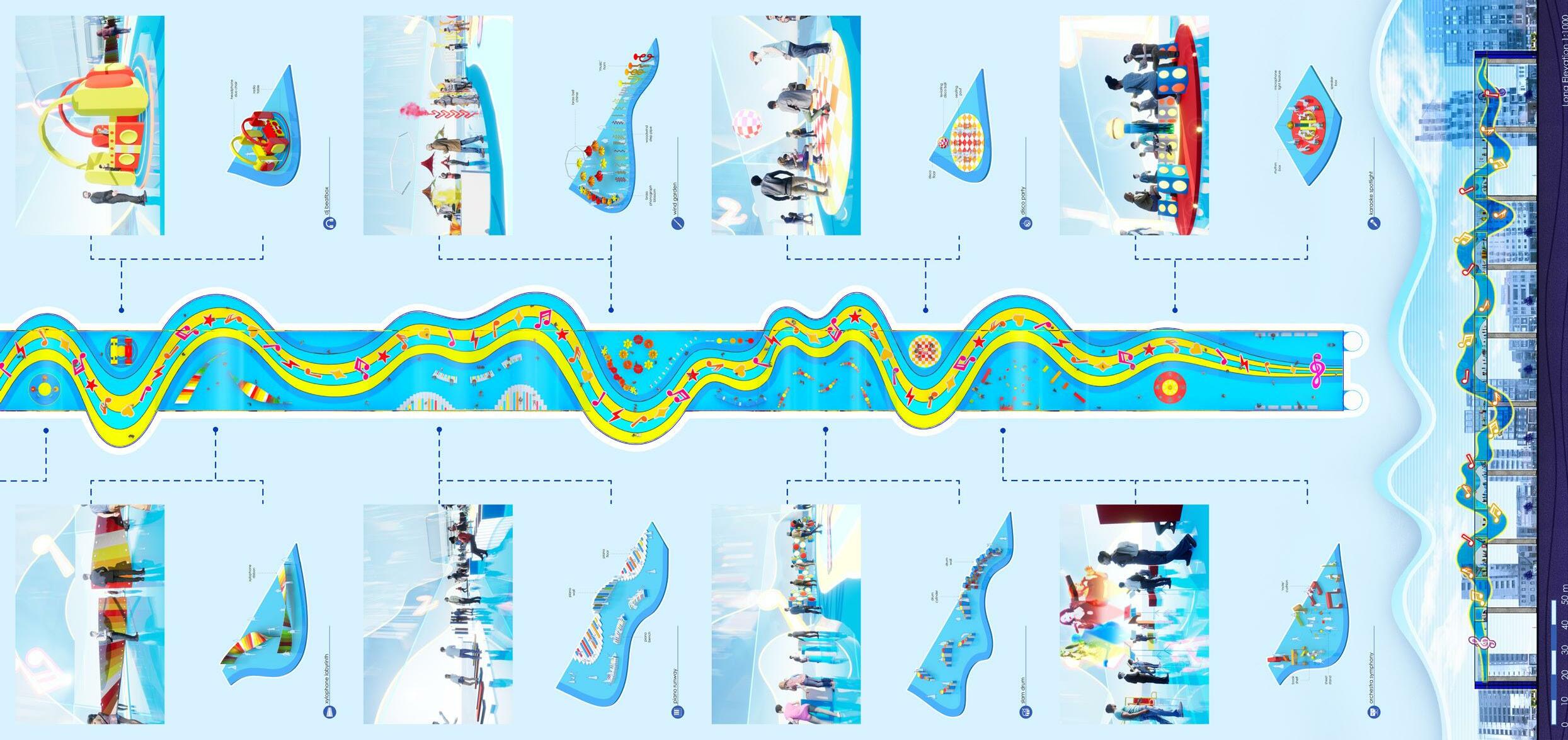
READING, BLOG, VIDEO
Let people know your favourite Playable City shortlisted project to help them win £30K prize. Shona Wright. 2016. Courtesy of Tech Spark: https://techspark.co/blog/2016/10/04/ let-people-know-favourite-playable-city-shortlisted-project-help-win-30k-prize/
Play for Adults (Why You Need It and How To Do It). Clay Drinko. 2020. Courtesy of Play Your Way Sane: https://www.playyourwaysane.com/blog/play-for-adults
Ideas Book - Urban Play Spaces for Young Childrem. Selva Gürdogan(Superpool). 2020. Courtesy of The City at Eye Level: https://thecityateyelevel.com/stories/ideas-book-urban-play-spaces-for-young-children/ Amazing Crosswalk Zebra Crossing that will blow your mind!. SuperTech. 2021. Courtesy of SuperTech: https://www.youtube.com/
Toward a Playful City. RIOS Research Initiative. 2019. Courtesy of RIOS: https://www.rios. com/projects/towards-a-playful-city/
Move away from a car-dominated city looks radical but it’s a sensible plan for a liveable future. Hussein Dia. Courtesy of The Mandarin: https://www.themandarin.com.au/108046-move-away-from-a-car-
Playful sculptures to connect people and places in Green Square. Courtesy of City of Sydney. https://news.cityofsydney.nsw.gov.au/photos/ playful-sculptures-to-connect-people-and-places-in-green-square
Playable Cities: the city that plays together, stays together. Julian Baggini. 2014, Cortesy of The Guardian: https://www.theguardian.com/cities/2014/sep/04/ playable-cities-the-city-that-plays-together-stays-together
A Playful Crosswalk Makes Being A Pedestrian More Delightful. Ben Schiller. Courtesy of Fast Company: https://www.fastcompany. com/3065411/a-playful-crosswalk-makes-being-a-pedestrian-more-delightful
Sound the Trumpets (and a Conch)! Fanfare Is Now Open. Bradley StrauchenScherer. 2017. Courtesy of The Met: https://www.metmuseum.org/blogs/of-note/2017/ fanfare-opening
Play Matters. Miguel Sicart. 2014. https://ebookcentral.proquest.com/lib/monash/detail. action?docID=3339842&pq-origsite=primo
The Ludic City. Exploring the potential of public spaces, Quetin Stevens. 2007. Courtesy of Ludozofi: file:///C:/Users/Duy%20Anh/Downloads/The%20Ludic%20City%20(Q.Stevens)%20 (1).pdf
PRECEDENT WEBSITE
Playable City https://www.playablecity.com/ https://www.designweek.co.uk/issues/26-september-2-october-2016/playable-cities/
Playable Streets
https://www.playablestreets.com/ Urban Conga http://www.theurbanconga.com/ 100Architects https://100architects.com/ Spix Academy https://www.facebook.com/sphotoshoparchitecture
Percussion Play https://www.percussionplay.com/
